- Articles and Guides

Catamaran vs Trimaran: Choosing the Perfect Multihull Vessel
26th mar 2023 by toi williams.

The debate over whether catamarans or trimarans are better boats has been going on for a long time without resolution, but the reason is understandable. The truth is that despite their many similarities, catamarans and trimarans have distinct characteristics that set them apart from each other, so each type of vessel offers a distinct boating experience. The catamaran vs. trimaran debate largely boils down to personal preference and how you intend to use the boat. Here are some of the things you need to consider when choosing between a catamaran and a trimaran.
What Is a Catamaran?
A catamaran is a multi-hulled boat that has two twin hulls connected by a structure supported by a wide beam. Catamarans come in a wide variety of sizes, ranging from small rowing boats to large boats that are big enough to be used as car ferries. The structure connecting the two hulls can be anything from a simple frame with webbing to a superstructure that includes cabin and/or cargo space. Most of the recreational catamarans for sale are designed to hold two to 20 passengers.

What Is a Trimaran?
A trimaran is also a multi-hulled boat, but it has three hulls instead of two like the catamaran. The middle (main) hull is larger than the two small outer hulls attached to it. These hulls are connected by a lateral beam, wing, or some other form of superstructure, depending on the model. These types of boats also come in a wide variety of sizes, ranging from recreational yachts to ferries.

Advantages of Catamaran vs. Trimaran
The advantages of catamarans vs. trimarans are mainly based on comfort. Catamarans are spacious boats, known for their large living quarters with plenty of room on board for hosting gatherings and parties. Their popularity has enticed many boat builders to create increasingly luxurious designs on larger and larger boats. The catamaran also has a more classic style that appeals to those who want a boat with a simple, sleek shape. Catamarans are best suited for boating in calm seas, lagoons, and shallow waters.
Advantages of Trimaran vs. Catamaran
The advantages of trimarans vs. catamarans mainly come down to speed. Trimarans are among the speediest boats available, offering lightning-fast speeds on open waters. Many recent winners of notable boating competitions have been won by boaters piloting trimarans. These boats also perform well when heading upwind and are remarkably stable with their three-hulled design. The anchoring gear is installed on the main hull and is easy to deploy.
Trimaran vs. Catamaran Speed
In the trimaran vs. catamaran speed debate, the trimaran is the clear winner. For long offshore races, trimarans have become the preferred vessels, and boaters piloting trimarans have won the Jules Verne Trophy in every race held since 2010. This is because of their unique design, which has speed and safety qualities that provide significant benefits for boaters.
The trimaran's third hull makes the boat considerably faster than any other hull form due to the correlation between the boat’s waterline length and its speed. Having more hull distance in the water lets the boat reach higher speeds. Trimarans can also be pushed harder and are more forgiving than other boat styles in racing environments.
That doesn't mean that catamarans are slow. Some styles of catamarans are capable of breaking world records when the boating conditions are right. On downwind runs, a racing catamaran may be quicker than a trimaran, but for overall speed in various conditions, the trimaran comes out on top.
Catamaran vs. Trimaran Performance
In the catamaran vs. trimaran performance debate, both sides have their advantages. A catamaran is easier to handle and maneuver with the boater having to handle the lines and halyards less often. However, this ease comes at the expense of speed, with cruising catamarans generally traveling slower than comparable trimarans.
Trimarans are more versatile in their performance, and they perform better than a catamaran when traveling against the current or the wind. Trimarans can be used in nearly all weather conditions, are less vulnerable to drifting, and have less roll motion than a catamaran. However, handling a trimaran requires more work than handling a catamaran, which can be exhausting over long periods of sailing.
Trimaran vs. Catamaran Efficiency
When comparing trimaran vs. catamaran efficiency, the differences are minimal. Multi-hulled boats are more fuel-efficient than comparable mono-hulled boats due to their hull forms and their lighter weights. Multi-hulled boats also tend to have smaller displacement and shallower drafts than other boat styles.
The biggest difference in trimaran vs. catamaran efficiency is that catamarans nearly always have twin engines while trimarans generally run with one engine. A trimaran also has less hydrodynamic resistance than a catamaran because it spreads out the displacement across three hulls instead of two. This allows each hull to be narrower and more streamlined.

Catamaran vs. Trimaran Stability
The stability of multi-hulled boats is one of their biggest advantages over mono-hulled vessels. Multi-hulled boats benefit greatly from their wider stance on the water, and their wide beams and floats offer higher stability than a ballasted keel. Multi-hulled boats are also more buoyant because their floats help prevent immersion. When comparing catamaran vs. trimaran stability, the better boat will depend on the conditions on the water.
A catamaran's geometrically stabilized design reduces both heeling and wave-induced motion, providing a stable platform underway and at anchor. However, the catamaran's design is not as suitable for navigating heavy seas as the trimaran's build. The trimaran's three hulls provide excellent stability even in rough waves, but this can also make a trimaran less comfortable than a catamaran when the water is calm.
Catamaran vs. Trimaran Safety
Both catamarans and trimarans are considered to be safer on the water than mono-hulled boats. A catamaran has superior resilience and roll inertia that makes capsizing extremely unlikely. Its speed, steadiness, and ease of motion due to a lack of ballast also contribute to increased safety.
Trimarans are considered the safest multi-hulled boats because their three-hulled design makes them almost unsinkable. Many also have a core made of high buoyancy foam, helping them stay afloat even in the most brutal storms. Weight centering and a complete anti-drift scheme also make the boat safer for everyone aboard.
Trimaran vs. Catamaran Maintenance
Comparing trimaran vs. catamaran maintenance costs shows that many of the costs will be very similar for both types of boats. These costs include yearly boat service and repairs, annual haul-outs, and insurance coverage but exclude major upgrades. You will also have to budget for dockage, winterization, and storage for each year if you don't intend to use the boat year-round.
Boaters are advised to budget between 5% and 10% of the boat's value for annual maintenance costs if their boat is less than five years old and a little more if the boat is older than that. Different maintenance jobs can be charged in different ways. Sometimes, the charges are based on the length of the boat while other charges are based on the number of hours worked.

Catamaran vs. Trimaran Cost
If you are looking for an affordable seafaring vessel, catamarans and trimaran are both good choices. There are many reasonably priced catamarans and trimarans suited for families as well as other models that provide more luxury for an additional cost. The materials that the manufacturer used to build the boat and the electronics included will also impact the price of the boat.
With so many different factors impacting the cost of different boats, you should choose the best vessel for you based on the features you want as well as your budget. Doing some research using the information on Rightboat's listings will help you find the right combination of quality and affordability you are looking for. Because we offer both new and used boats, nearly any boater will be able to find a boat in our listings that fits their needs.
Choosing between a catamaran and a trimaran may seem simple at first, but the different sizes, styles, and amenities offered can make the choice much more complicated than you would think. If you prefer comfort and ample space while cruising, a catamaran may be the better choice. However, if you like speeding across the water and enjoy the thrill of racing, then a trimaran may be your best option.
Whichever boat you decide to purchase should fit your specific circumstances and requirements. Start the decision-making process by deciding what the primary use for your new boat will be. Will it be used more for family cruising or sport fishing? What bodies of water will you be boating in? Are you planning on staying close to shore or taking the boat into deeper waters? All these factors will impact whether you should choose a catamaran or a trimaran.
With Rightboat's listings, you can learn about the features of the latest catamaran and trimaran models and see what you can expect to pay for the boats you are considering. You can sort through our listings by price, age of the boat, length of the boat, or listing date and then narrow down the results of a search using the rest of our filtering tools. If you are interested in buying a new or used catamaran or trimaran, take a look at our listings, and see what we have to offer today!
Related article: Ketch vs Yawl
Written By: Toi Williams
More from: Toi Williams
Related Articles and Guides

19th Jul 2024
The World’s Best Yacht Brands
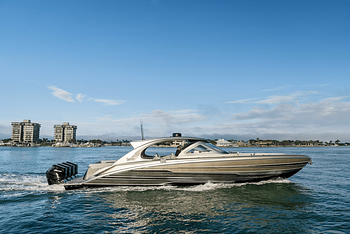
12th Jul 2024
Top Performance-Boat Brands, Where There’s Something For Everyone
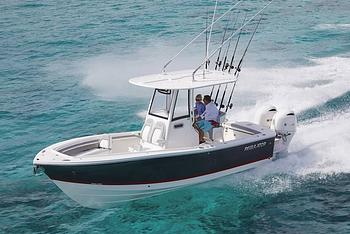
28th Jun 2024
Best Center Console Boats: The Best Brands Across the Spectrum
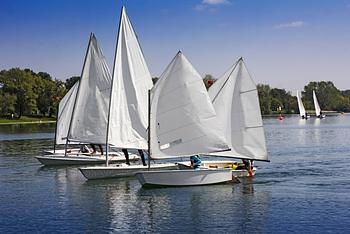
23rd Jun 2024
Small Sailboat Types: Sail Smaller and Savor It All
- Explore Rightboat
- Boats for Sale
- Boating Articles
- Buyers Guide
- About RightBoat
- Sell Your Boat
- Boat Selling Advice
- All manufacturers
- All categories
Enter your email to keep up to date with the latest news
Join for free
Sign up now for free and discover how easy it is to keep up to date with THE latest boats for sale. Find your right boat, and tailor your voyage to finding your next boat.
Benefits of becoming a member:
- Set up tailored alerts
- Personalise your experience
- Download full specifications and broker details
- Keep tabs on your favourite boats
Are you a broker? Join as a Broker
Rightboat - join for free.
Do you have an account already? Login
Save this search
Save your search and receive new boats in your email..
You can unsubscribe from your alerts whenever you like. By pressing the button you accept the Legal Terms and conditions
- Yachting for beginners
- Owning a yacht
- Motor Yachts
- Sailing Yacht
- Indian Ocean
- Mediterranean
- Buying or Selling a Yacht
- Yachting Events
- FAQ – Luxury Yacht Charter
- FAQ – Buying a Yacht
- FAQ – Sell your Yacht
- How Much Does It Cost To Charter A Luxury Yacht?
- All our Blog Post & News

Trimaran vs. Catamaran: What are the Differences?
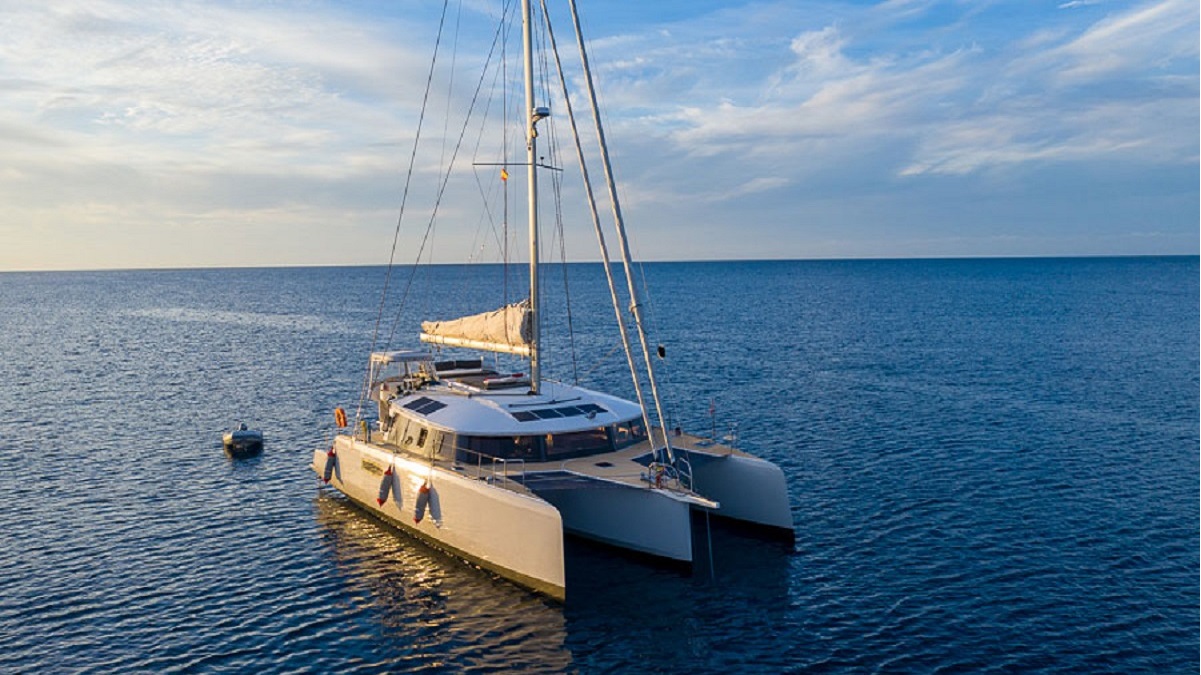
Experience the thrill of sailing on a multihull – a boat with two or three hulls. Discover the unique features of the trimaran and the catamaran , and how they differ in performance and comfort. Want speed and excitement? Take the helm of a trimaran. Prefer a leisurely cruise? Relax on a catamaran. Don’t miss out on this exciting article uncovering the secrets of multihull sailing.
How to recognize a trimaran from a catamaran?
First up, the catamaran. Simple, sleek, and stylish, this craft boasts not one, but two identical hulls – making it a twin amongst ships. Its minimalist design is a thing of beauty, and it might just be the perfect float for solo explorers or couples seeking a romantic ocean adventure.
On the other hand, the trimaran is a multihull masterclass in innovation. With a total of three hulls, including two small outriggers, this vessel’s design is unlike anything you’ve seen before. In fact, some have compared it to a spaceship, and we can see why! The trimaran’s unique layout and engineering wizardry make it a worthy addition to any seafarer’s fleet.
So, whether you’re a catamaran connoisseur or a trimaran trailblazer, there’s no denying that these vessels are truly remarkable. Just don’t ask us to choose a favourite!
What are the trimaran main characteristics?
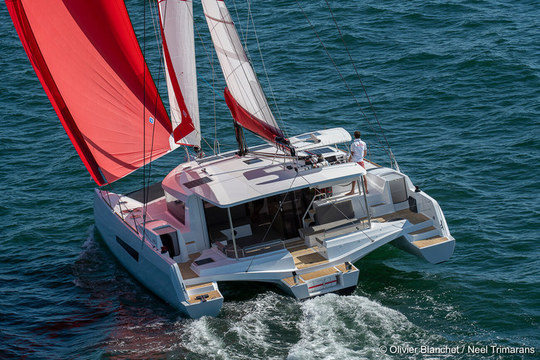
A trimaran’s three hulls are like the training wheels on a bicycle, making it incredibly stable even in choppy waters. These recreational boats are a sailor’s dream, offering a smooth ride and exceptional comfort. And when it comes to safety, trimarans are virtually unsinkable due to their triple-hull design – even the roughest storms won’t capsize them! Although compromising some sailing capacity, the security and stability of a trimaran are unmatched.
All about Neel trimaran here
What are the catamaran main characteristics?
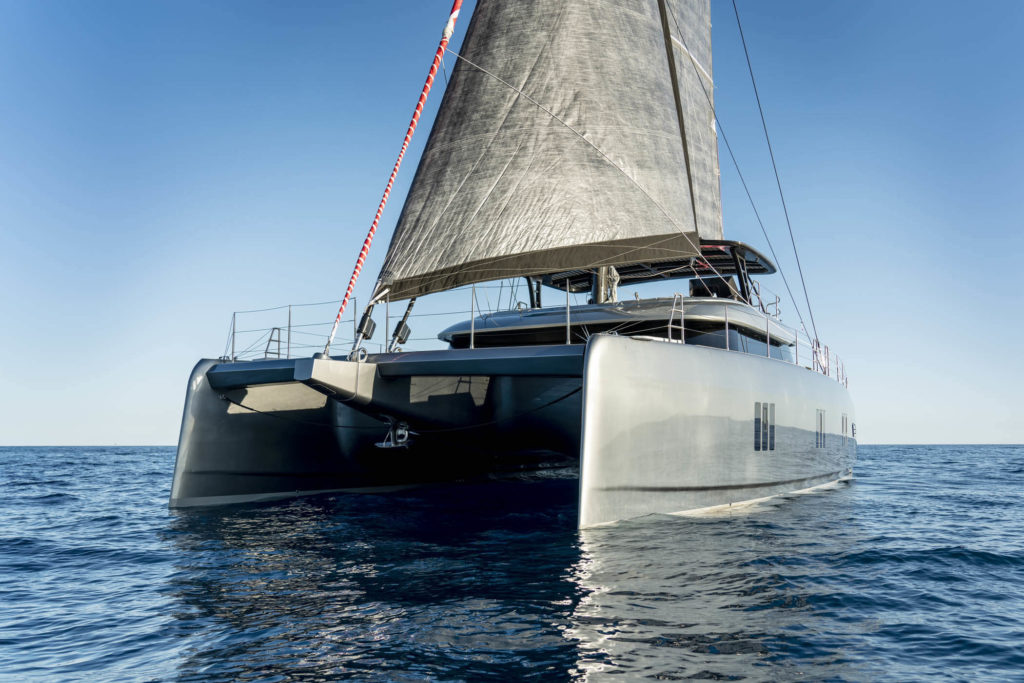
Discover the one-of-a-kind world of catamarans – versatile vessels affectionately nicknamed “cats”. Offering an exciting and luxurious sailing experience, these boats come in a range of sizes, from cozy two-person cabins to expansive group accommodation for up to 20. Some catamarans are budget-friendly options perfect for families, while others provide the ultimate indulgence and can transport you to some of the most coveted destinations in the Caribbean and Mediterranean. With their roomy interiors and stable design, catamarans are perfect for exploring calm sea gulfs, lagoons or shallow waters.
What is the (true) cost of chartering the yacht you've seen? 💰⛵
The advertised prices of all charter companies do not include APA, VAT & other variable costs.
Use our calculator to get a 100% FREE estimate of the REAL total cost of your next yacht charter! ⬇
All our catamarans & trimarans for charter here
Trimaran vs. Catamaran: which one has the largest surface area?

Catarmarans surface area is known to be spacious
Catamarans have filled the world’s oceans in recent years with more huge and luxury versions, including sailing catamarans like the Lagoon Seventy 7, Fountaine Pajot’s Allegria 67, and motor catamarans like the Sunreef Power 70. The biggest catamaran known is Hemisphere, and you may want to have a look at Douce France available for charter with WI.
Catamarans are well-known for their large living quarters, which are divided between the two hulls and the central platform.
Trimarans surface area are constantly improving
Among some of the cruising, habitable trimarans, the DragonFly boasts a unique Swing Wing system and a plush interior, while the Vietnamese-made Rapido Trimaran is the brainchild of the esteemed Morrelli & Melvin design house. But what really sets the Naval NEEL shipyard trimarans apart is the incredible “Cockloon” living area above the central hull – it’s like staying in a floating hotel! With cabins located solely on the floats, the central kitchen, panoramic saloon, and lounging areas are all linked together for an unbeatable sense of space and luxury. And don’t forget the expansive flybridge, too!
Read also : The yacht charter experience ladder
Trimaran vs. Catamaran: Stability and Performance
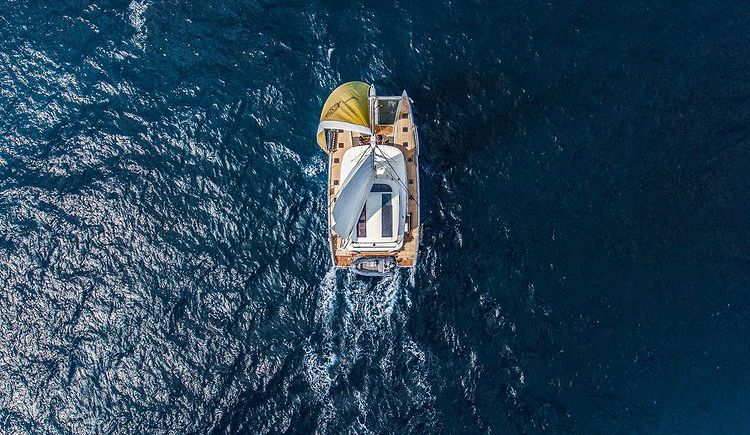
The Trimaran stability made it famous
With three hulls, including one main and two overhanging, a trimaran is built for stability even in the roughest waters. In fact, it’s nearly impossible for a trimaran to capsize, making it a safer option for the adventurous seafarer. And if by some chance or circumstance the boat does flip, fear not – it’ll stay afloat! The only downside? The trimaran provides both the comfort of a monohull and the safety of a multihull, but hey, no boat is perfect. Did we mention it’s also one of the fastest boats out there? Sounds like a win-win to us.
The Catamaran performances aren’t as versatile as trimaran
Catamarans are incredible vessels that offer not only a smooth sailing experience, but also a comfortable ride. Ranging in size from cozy cabins for two to massive ships that can fit 20, catamarans are top-notch for stability. However, they aren’t particularly cut out for rough seas, preferring calm waters like tranquil gulfs and shallow lagoons. Keep in mind that while they may not excel in upwind sailing and lack the heeling abilities of other boats, catamarans will still take you on a sailing adventure like no other.
Trimaran vs. Catamaran: Distinct Sailing Experiences
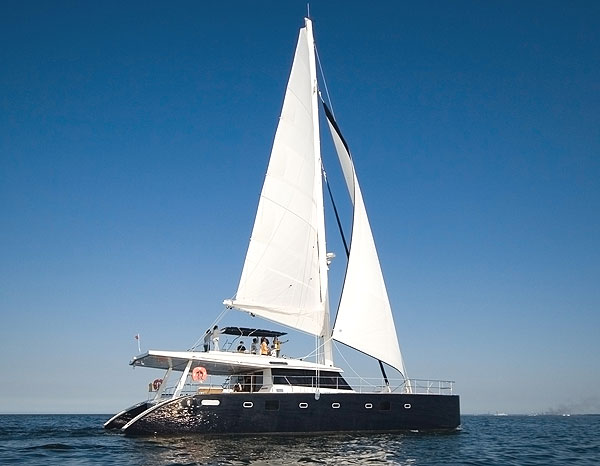
Sailboats rely on wind speed to move forward, but stability is crucial to avoid capsizing. Monohulls have a keel underneath to prevent this, making them more durable in heavy winds. Meanwhile, multihulls such as catamarans offer greater stability with their floats, resulting in a smoother ride even in rough seas. However, trimarans are more similar to monohulls and may tip more, offering advantages in rougher waters but less comfort on calm days. Overall, multihulls have an edge in stability compared to their monohull counterparts.
Trimaran vs. Catamaran: Safety
Trimarans are very safe boats.
You might be surprised to find out that Trimarans are extremely safe; in fact, many trimarans, are almost unsinkable. They have a core made up of foam, and the materials’ buoyancy is extremely high in comparison to the boat’s displacement. Trimarans are safe because of their breadth. The trimaran is the safest of the multihulls because of its three-hulled design, weight centering, and complete anti-drift scheme.
Moreover, even if the trimaran were to overturn, the structure would keep it from plummeting into the water, making it an extremely safe boat.
Catamarans safety is still very good
Catamarans are a safe way to travel the ocean. Offshore, catamarans are often far safer than monohulls of similar size. Enhanced resilience, speed, steadiness, and motion ease due to a lack of ballast all contribute to safety.
A large modern catamaran has an outstanding resilience and roll inertia. The mix of these factors makes invasion or capsizing extremely unlikely. When a 20-foot wave hits a catarmaran’s beam, the boat will just surf sideways.
Trimaran vs. Catamaran: Racing
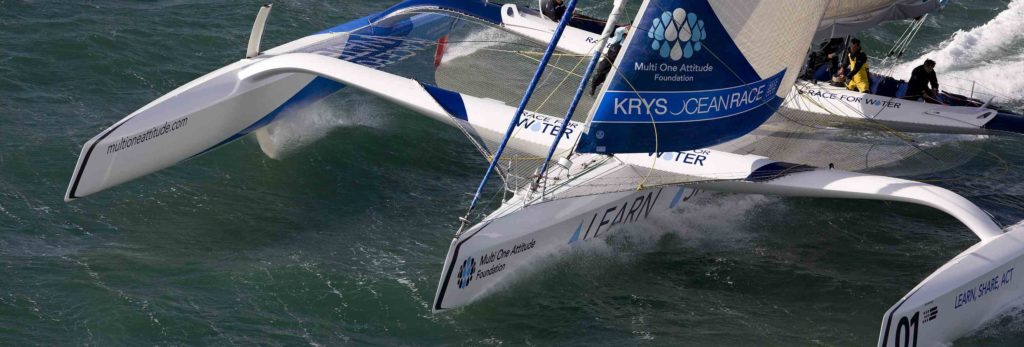
Catamarans are very fast downwind
Catamarans are recognized for their velocity, and some of them are capable of breaking world sailing records. Catamarans may travel at a pace of 15 to 30 mph, with the best reaching speeds of well over 60 knots.
Cruising catamarans may reach high speeds of 15 knots, or 17.3 mph, on average (27.84 kph). In the right wind conditions; however, some outstanding racing catamarans can reach a pace of up to 30 knots.
On downwind runs, reaches, and broad reaches, catamarans are typically quicker than trimarans. Sailing a catamaran is less exhausting than sailing a trimaran. Sailing flat has a number of benefits. Carrying tanks and other diving equipment is significantly simpler on a cat if you are a SCUBA diver.
Catamarans are lighter than trimarans because they do not require a heavy keel. This, along with the fact that their sails are placed equivalent to the wind, allows them to sail quicker than trimarans, particularly on a run or broad reach.
Trimarans are the usual racing winner
Trimarans are frequently preferred in racing these days, especially in the previous decade or so.
For long offshore races, racing trimarans’ speed and safety qualities have significant benefits. Even in severe seas, they can be pushed harder and are more forgiving than other racing catamarans. These are the primary reasons why trimarans have become so popular in recent multihull competitions. Trimarans, for example, have won the Jules Verne Trophy every year since 2010.
Trimarans can often increase their monohull sailing speed on almost every point of sail while cruising catamarans are usually 25-30 percent faster than a sailing monohull of the same length. Of course, when the boats are filled for cruising, these comparisons vary drastically.
A trimaran is more suited to sail upwind than a catamaran, which is more vulnerable to drifting. Trimarans are; therefore, quicker than catamarans, and this benefit is especially noticeable when cruising against the wind due to the weight centering in the middle hull, which lowers pitching.
The third hull really makes trimarans considerably quicker than any other hull form at a given extent based on the relation between a boat’s waterline length and speed i.e. that more hull distance in the water leads to higher speeds.
Which is Better: A Trimaran or a Catamaran?
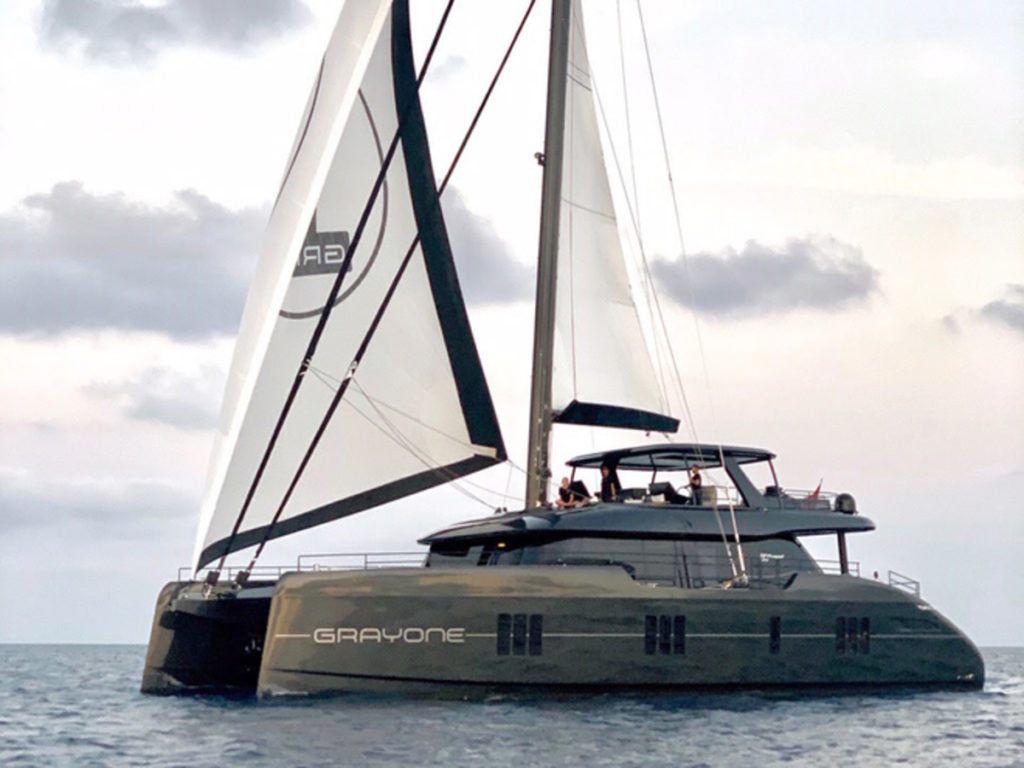
If you want to spend less time on deck, a catamaran is a great option. Catamarans are also ideal for hosting gatherings and parties while maintaining their stability on the water.
A trimaran is a more ideal boat for you if you want to develop your sailing talents on something more difficult. Moreover, if you’re a speed demon, keep an eye out for the fastest trimaran boats and pick the one that best meets your needs.
While picking between a catamaran and a trimaran appears simple on paper, it becomes more challenging when you see them in front of you. Check out our page for more details in order to make a more informed decision.
Read also : YACHT INSURANCE: THE DEFINITIVE OWNER’S GUIDE
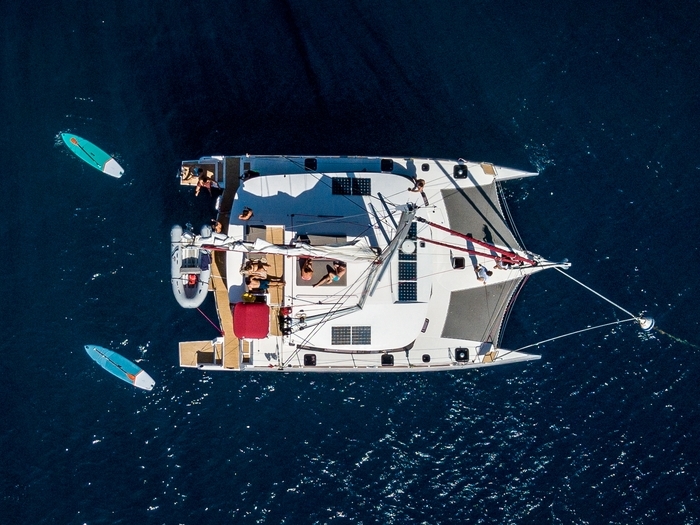
Experience the ultimate Caribbean holiday aboard l’Octant a Neel 51 trimaran.
Don’t miss out on this incredible opportunity from $14,500 per week.
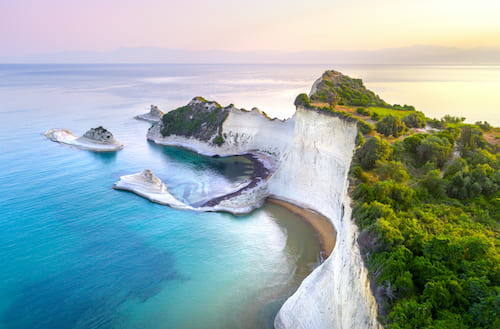
Gunboat 72V “Wonderful”: Our Review of the (Very) Fast Catamaran
The yacht refit guide: tips and realities, you might also like.
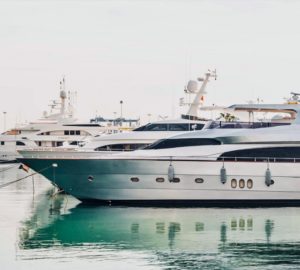
Yacht Brokerage Fees: What You Should Know
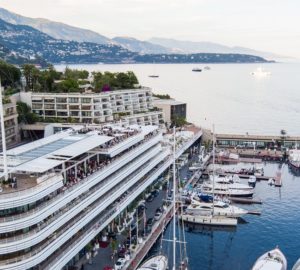
What is a Yacht Club? Benefits & Features Explained
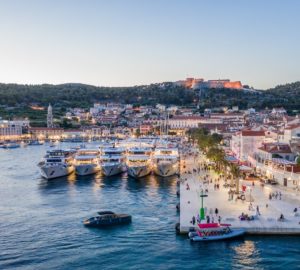
How early should you book your yacht charter?

Trimaran VS Catamaran – Which Boat Is Best?
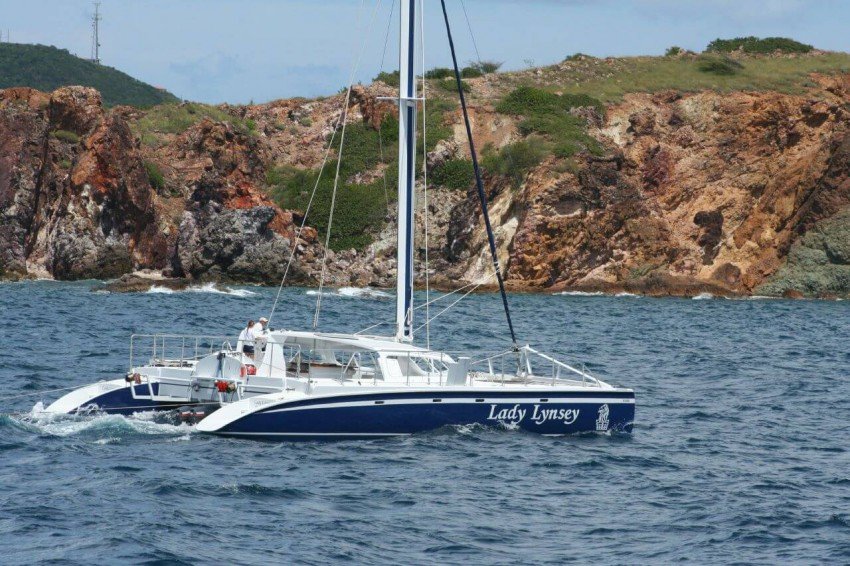
If you’re planning to buy or charter a multihull boat, you might be wondering which one is better: trimaran or catamaran. Both have their pros and cons, and the decision ultimately depends on your needs and preferences. In this article, I’ll explain the differences between these two types of vessels to help you make the best choice for your needs.
Post updated: 10 November 2023
Table of Contents
Differences Between Trimarans and Catamarans?
If you’re in the market for a new vessel or plan a family vacation on the water, you might wonder what the differences are between a catamaran and a trimaran.
Let’s see what they are:
A catamaran is a multihull vessel with two or twin hulls that are parallel to each other and fixed to a wide beam.
This design offers stability and speed, making it a popular choice for cruising long distances comfortably and even racing.
They also provide more interior space than trimarans, allowing for larger cabins and more storage.
When it comes to sailing performance, catamarans are known for their speed and agility.
Their twin hulls allow them to easily glide over the water, making them popular among boaters.
Cats are stable, fast, spacious, and super comfortable and are more stable at anchor than trimarans. However, catamarans tend to perform better in downwind conditions than in upwind conditions.
A trimaran is a multihull vessel that has three hulls. The two smaller outrigger hulls are attached to the center hull, which is larger and used for most of the boat’s functionality.
This design offers even more stability than a catamaran, making it a great choice for those who want to sail in rough waters safely.
The three-hulled design makes them super stable, and as mentioned above, they can easily handle rough waters. They also have a smaller turning radius, making them easier to maneuver in tight spaces.
Another important thing to know about Trimarans is that they provide a decent degree of livability, but they fall short of catamarans in two regards. First, they heel more than cats, making it difficult to do things like cooking on board. Second, they support much less load than catamarans.
Pros and Cons of Catamarans and Trimarans
Before making a decision whether to sail a catamaran or a trimaran, there are pros and cons you must consider. Let’s see what there are:
- Stability: Catamarans have two hulls, which makes them extremely stable. This means that you are less likely to experience seasickness or feel the boat rocking in rough waters.
- Space: Catamarans have a lot of space both inside and outside the boat. This makes them great for large groups or families who want to spend time together without feeling cramped.
- Speed: While not as fast as trimarans, catamarans are still faster than monohulls . They perform better in downwind conditions than trimarans and are great for long-distance cruising in calm waters.
- Shallow Draft: Catamarans have a shallow draft, which allows them to enter shallow waters and anchor closer to shore.
- Cost: Depending on how well the Catamaran is equipped, it can be more expensive than trimarans. Not always, though.
- Harbor Cost: As catamarans have a very large beam, this means that a berth at the marina will be higher.
- Navigation: Catamarans tend to struggle sailing close to the wind .
- Speed: Trimarans are known for being faster than cats and single-hull boats. They can easily reach high speeds and are great for racing or long-distance cruising.
- Stability: Trimarans are more stable than catamarans due to their three hulls.
- Space: Trimarans are wide, but the interior is less spacious than catamarans.
- Safety: Provide exceptional buoyancy. If a trimaran capsizes, there is almost no chance it will sink.
- Navigation: Trimarans can sail in any weather condition and perform much better upwind than cats.
- Berthing: Trimarans are more difficult to maneuver in harbors, making finding a berth in crowded marinas more challenging.
- Maneuverability: Trimarans require more ability from sailors to beach without difficulty than catamarans.
- Loading: Trimarans struggle to carry as much weight as catamarans.
- Sailing: Trimarans require more effort and work on the deck.
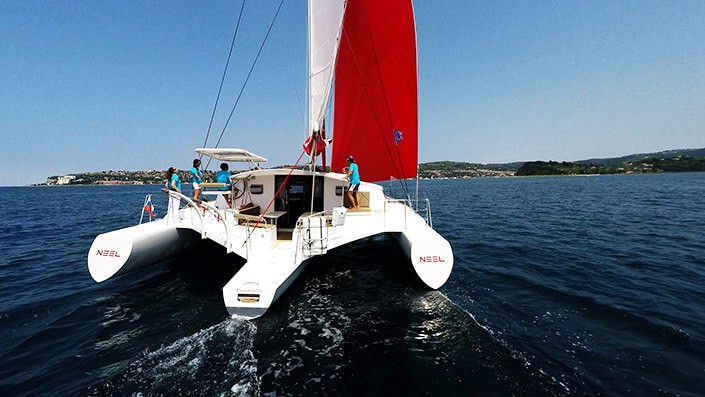
Design and Structure
When it comes to design and structure, there are significant differences between trimarans and catamarans. Below, I’ll walk you through these two multi-hull vessels’ geometry, hydrodynamics, weight, and materials.
Geometry and Hydrodynamics
One of the most significant differences between trimarans and catamarans is their geometry. A trimaran has a central hull with two outriggers connected to a large beam, while a catamaran has two parallel hulls connected by a central platform.
This twin-hull design gives catamarans a unique sense of balance and stability. On the other hand, trimarans offer superior stability and adaptability in various water conditions thanks to their three-hulled design.
The central hull of a trimaran is typically longer and narrower than the hulls of a catamaran, which leads to better hydrodynamic performance.
Both trimarans and catamarans have different hydrodynamic resistance characteristics.
For instance, trimarans have less wetted surface area, which means they experience less drag as they move through the water. This feature makes trimarans faster than catamarans in rough weather conditions and high winds.
Performance and Speed
When it comes to performance and speed, there is a clear winner between trimarans and catamarans . Trimarans are known for their speed and are often faster than catamarans of the same size and weight. This is because of their unique design, which has speed and safety qualities that provide significant advantages over catamarans.
Trimarans have less hydrodynamic resistance than catamarans due to their narrower central hull, which allows them to slice through the water more efficiently in rough seas.
While catamarans are also fast, they often fall short of trimarans in terms of speed and performance. But that’s not always true in downwind conditions because cats are light, and their sails are positioned equivalent to the wind, making them faster than tris in downwind conditions.
Heeling and Capsizing
One of the biggest concerns when it comes to stability is heeling and capsizing. Heeling means the boat leans from one side to one side, while capsizing is when the boat flips over completely.
Both trimarans and catamarans heel, but trimarans provide greater stability and are less likely to capsize due to their three hulls. However, this doesn’t mean a trimaran can’t capsize.
In rough conditions, if a wave gets higher than half the size of the beam, the boat can flip over, but because trimarans have exceptional buoyancy, they float on the surface of the water and can serve as a rescue platform, but they won’t sink!
Comfort and Space
One important factor to consider when choosing between a cat and a tri is comfort and space. So, let’s look at these two types of boat’ accommodation: storage, cockpit, and living quarters.
Accommodation and Storage
One of the main advantages of catamarans over trimarans is the amount of space they offer. Catamarans typically have larger cabins and more storage space than trimarans. This makes them a great choice for longer trips, as you’ll have plenty of room to store all your gear and personal belongings.
Trimarans, on the other hand, have smaller cabins and less storage space. This can make the passengers feel a bit cramped, especially on longer trips.
However, some trimarans do offer creative storage solutions, such as under-bunk storage compartments or overhead storage racks. Note that the latest models of trimarans are extremely spacious and offer as much comfort and space, if not more, than catamarans do.
Another difference between trimarans and catamarans is their weight. While trimarans can potentially be built lighter than some catamarans, catamarans are lighter on average due to having one fewer hull requiring structure and ballast.
The weight distribution of a trimaran is also different from a catamaran, with more weight concentrated in the central hull. This feature provides better stability and performance in rough seas and upwinds.
Catamarans, on the other hand, can support more load than trimarans. This feature makes them ideal for long-distance cruising and liveaboard lifestyles.
Frequently Asked Questions
Q: which has better resale value – trimarans or catamarans.
Resale values for both trimarans and catamarans can depend on factors such as the boat’s age, maintenance, and overall condition. Generally, catamarans have a larger market and may hold their value better due to higher demand, especially among cruisers and charter companies. However, a well-maintained trimaran can still attract buyers who value speed and performance.
Q: Which type of boat is more suitable for long-distance travel: trimaran or catamaran?
Both trimarans and catamarans are fantastic for long-distance travel. Still, catamarans are often preferred among sailors for extended cruising due to their larger living spaces and privacy on board. However, if speed is a critical factor for your journey, a trimaran might be a more attractive option.
Q: What factors should I consider when choosing between a trimaran and a catamaran?
When deciding between a trimaran and a catamaran, some key factors to consider include your intended use, performance expectations, available space, and budget.
You should ask yourself:
- What are your primary sailing goals – speed, comfort, cruising, or racing?
- How much living and storage space do you need for your crew and equipment?
- What kind of stability and performance characteristics do you value most?
- Are you willing to compromise on space or speed for the sake of your preferred multihull design?
Final Words!
So, what’s the best boat? Well, both are great. The choice between a catamaran and a trimaran will depend on your needs and personal preferences. If you are looking for a peaceful trip at a slower pace with plenty of space for the whole group, a catamaran will be your best bet. On the other hand, if you want to zip through the water and get your blood pumping, a trimaran is what you need!
Want More Tips?
Sign up to Cruising Sea newsletter to receive every two weeks the latest post straight to your inbox!
Have you sailed a catamaran or a trimaran? If so, please share your experience in the comments below.

Daniella has been passionate about travel, the sea, and nature for many years. As a child, she frequently traveled throughout the Mediterranean and continued with her journeys throughout her adult life.
Her experiences have created the desire within her to share her love for traveling with other passionate and adventurers who want to discover beautiful horizons and new cultures.
26 thoughts on “Trimaran VS Catamaran – Which Boat Is Best?”
Hey, well I’m definitely the Catamaran girl. I love my space and don’t really need the thrill of the ride as much as I value the relaxation and holiday-type feeling. What’s your personal choice? Well since I’m more the sailor’s wife than the sailor, those other problems don’t really apply to me, do they? hahahaha what’s your personal choice?
We have something in common, because I am not a fan of racing . I love comfort and space, so I would go for a Cat!
Have a great day:)
I would go for the trimaran as it’s more stable in tough conditions as I would like to explore the world, not that I want to race. Catamaran is my go to option if I just want a nice vacation boat or something I agree that that one is better if you don’t want to race. I won’t buy a boat in the near future though, I certainly have not got the money, and I live at the wrong location, not far from the sea but still, I can’t even drive (no license). Great article though and I love boats. Wondered what the difference about these 2 are and now I know.?
Hi Stephanie, Sorry for the late reply. I had a minor technical issue:) Yes, trimarans are extremely stable and are faster than catamarans. However, those beautiful boats are quite expensive and if you plan on sailing around the world, you’ll need a small crew with you to handle the boat:). I am glad this article helped you know what’s the difference between a trimaran and a catamaran. Let me know if you need more info. I am always happy to help. Thank you for the comment and I wish you a lovely day.
This is a very informative comparison of the trimaran vs. catamaran style sailboat. They look similar on the exterior to the untrained eye – but it seems like the differences are pretty dramatic. If someone was looking to charter one for a vacation – do you have a specific experience or preference for one or the other?
It will depend on your personal preferences!
What are your needs? Can you be more precise?
I personally love to sail in comfort, I also need a lot of storage, so a cat is my favorite yacht!
Have a wonderful day:)
I have sailed ON a cat but never sailed one myself. Certainly a wonderful experience unlike a single-hulled vessel that rocks and rolls with the swells. That leads me to ask: if caught in rough weather (large swells and strong winds), how reliable is the trimaran? Does either configuration have limitations in this regard?
For the same size of boat, a trimaran have higher sailing performance ,a better ability to tack and go windward. So to answer to your question, a trimaran will handle better in strong winds and will go faster! But! Bear in mind that no matter if it’s a cat, trimaran, or monohull, the safety will all depend on when the sail will be shortened and how the boat will be handled in bad weather.
I hope it helped and if you have any other question , please feel free to get in touch:)
Have a great day!
Awesome write up on the differences between the two beauties. I have learned something new here. I am more of the adventure like person and your quick analysis of the Trimaran, tells me that I probably would lead to this option when choosing between the two.I will certainly browse around your site to check out other interesting articles you have on offer.Take Care, Roopesh.
Hi Roopesh,
Thank you for the compliment and you are very welcome to stroll around my website.
Take care too and wish you an awesome day!
It’s interesting to see the different opinions shown concerning of a debate. I don’t know about these vessels but I enjoyed reading it.
To me, I’ll go for Trimaran because of the modern interiors. I mean, it’s the modern feel that I’m looking for. That’s my main, personal factor.
Still, overall, I think it’s also suffice to say that these two cannot be compared because it’s not like with like. But that’s just my opinion. Trimaran for the win anyways!
So nice to see you again on my website:)
Yes, the trimaran Neel 45 has a modern look, but not every trimaran. Also, they are much faster than catamarans, sailors usually use them more for racing and catamarans for cruising.
Thank you for the comment, I really appreciate:)
I wish you a wonderful day!
I think now the Neel have brought out the 51 the game has changed somewhat. Lots more room ,walk around bed in master room. Lare shower in main head, the inside outside Cocloon as they now call it. Heaps of space below, fantastic headroom down below in central Hull. Much more classic looking boat on the exterior. Add the speed, stability and affordability compared to similar sized Cats and there really does not appear to be any more to be said. Of course it’s just my opinion and if money was not an option i think the Gunboat 60 would be the final choice, but for around 600k the Neel 51 has definitely set the standard. Take a look https://www.youtube.com/watch?v=1-997AEXfsk
Well, that’s a beautiful trimaran you have here, effectively, this one looks much more comfortable and wider than the Neel 45! I would definitely choose the 51 over the 45! I’ve really enjoyed watching the video, and it would be interesting to write an excellent review on the 51:). I agree with you, the Gunboat is such a beautiful cat, and now it makes it even harder to choose between the two of them:) Thank you for the comment and wish you a wonderful day!
Late arrival here but after reading and watching so many negative reviews about the Neel trimarans and the Neel 45 images of one build showing their train wreck quality, there is absolutely no way you can compare a Gunboat and a Neel. You’d be better off comparing it to the Yugo automobile.
The “Sailing Yacht Ruby Rose” did a recent video review of the newer Neel 47 posted on July 18, 2019 showing very clearly that its build quality is extremely lack luster. Although it was the Neel Trimaran that gave me the sea bug, one probably couldn’t purchase a poorer quality boat at any price. It’s an awesome concept but it’s a manufacturer no individual should consider buying from. I’m hoping one of the premium Cat builders will take on the task of providing a similar concept when I’m ready with my money.
Hello Eso, The beautiful thing in life is that everyone has different taste and opinion. I am glad to have you here and thank you for sharing your experience with the readers, this will certainly be useful to many people. I wish you a fantastic day!
Yes I’ve been looking at the Neel 51, Its turning my attention some what. It would make world cruising just that little bit faster and with room and comfort. PS I like the engine room.
Hi Mercury,
Thank you for the comment! The Neel 51 is a beautiful boat. She is more spacious and comfortable than the 45 Neel, but the 65 is even better! However, the 51 is an ideal cruising trimaran to sail in comfort. She provides everything sailors have ever dreamed of such as speed, stability, space, and luxury. What more to ask for:)
Thank you again for the comment and wish you a wonderful day!
I own a Catana 47 with one owner and two guest cabins. I and my wife want four cabin boat so that We can sail with our two daughters and their family including grand children. Should I buy Catana 53, Outremer 51 or Neel 51?
Thank you for commenting!
I am not a boat seller, but I will be more than happy to answer your question. The Catana 53, Neel 51, and Outremer 51 are fantastic boats. And to be honest, I would personally buy the Neel 51 because she is extremely spacious, lightweight and more stable than any catamaran out there.If you bring children, then you would want the boat to be safe. The other boats are also great but tend to perform less well in strong winds and heavy seas than the Neel 51. So yes, the Neel 51 is unbeatable in all categories! At least to me:)
I hope it helped and, please, feel free to contact me if you need to know further information. I am always happy to assist!
Thank you again for the comment and wish you a lovely day!
It’s really a good Information. I have never been in any one of the rides but I feel personally Cat is better. Do you guys know anything similar to this other then Cat trimaran like Semi-Submersible, drone etc. as I am doing a project that will help you to ride Cat Yourself alone!. Wish me good luck and please help me achieve my goal fastly, by sharing your precious knowledge and time. thank you in advance.
Hi Mohammed,
We would like to help you, but we didn’t really understand your question, could you be more specific, please?
Thank you for the comment!
Hello Daniella, Firstly thank you very much for your kind response. I would like to have some info about the Stability equation of Catamaran and different steering Mechanisms.
You are very welcome!
Please, check out these articles, I am sure you will find all the answers to your questions: file:///C:/Users/gofri/Downloads/6962-1-10720-1-10-20130718.pdf
http://www.sailingcatamarans.com/index.php/faqs/19-sailing-and-performance-questions/109-which-steering-system-should-i-use
I hope it helped! Don’t hesitate to contact me if you need more information, I’ll be more than happy to assist!
Dear Daniela Thankyou very much for your Kind help. Could you please give some Information about the construction guidance of Catamaran. I want to construct my own for my experimental purposes. Thankyou Regards Moulasaheb Md
Hi Mohamed,
I would like to help you, but you are not in the right place for this. If you are looking for sailing holiday, then I’ll be more than happy to help!
If you want to construct your own boat, I highly recommend you to check other websites.
Thank you for the comment and wish you a great day!
Leave a Comment Cancel reply
By using this form you agree with the storage and handling of your data by this website. *

Catamaran Vs Trimaran

Last Updated by
Gabriel Hannon
August 30, 2022
As boatbuilders make faster and more luxurious multi-hulls for cruising and racing, it is time to settle the debate: Catamarans vs. Trimarans.
Catamarans and trimarans have distinct characteristics regarding comfort, sailing performance, safety, and personal preference. The dual- or tri-hull designs both confer significant advantages over traditional monohulls and each fill an amazing niche in the sailing world.
Though both are based on traditional Austronesian outrigger canoes, the dual-hulled catamarans and tri-hulled trimarans have distinct design goals that make them ideal for very different purposes, and it is important to take into account your goals when trying to decide which to sail! We’re going to discuss both types as they rate across performance, safety, comfort, and possible uses. There is no one solution to this age-old problem, but we can help you understand which design is best for you!
From boatbuilder releases to the history of their development, it is important to access lots of sources when trying to make this decision. As a performance sailor, my heart is always in the speed and upwind abilities of the trimaran, but modern catamarans are dynamic and incredibly comfortable. Still, in my opinion, anything that gets you on the water is a great boat, so let’s find the right one for you!
Table of contents
Sailing Performance and Safety
While most traditional boats over 20 feet are monohulled keelboats, there are major limitations to the type of sailing you can do with a monohull. First of all, monohulls depend on their keel to keep them upright, which is effective, but the force of the wind almost always causes the boat to heel to leeward by angles of up to 25° under reasonable cruising conditions, which can be quite uncomfortable for the crew! This design, which relies on giant lead ballast in a deep-set keel, is vulnerable to capsizes and, in drastic cases, sinking.
Additionally, the single-hull only provides so much volume for accommodation and storage, while the more horizontal layout of the multi-hulls can increase cockpit and cabin sizes substantially. Beyond that, both types of multi-hull can experience higher speeds at a given hull length than monohulls.
So how do cats and tris compare to each other? Well,
Catamarans: Stability and Ease
With their dual ‘pontoons,’ Catamarans make use of their floats to always remain on a flat and consistent angle of heel, rarely sailing under more than 10° of heel. This distribution of floatation also makes it nigh on impossible for them to capsize, though the distance between the hulls can make it a problem in the rare cases that they do flip. They do suffer a bit from not having any wetted surface underneath the center of effort, causing them to slide sideways while sailing upwind and making it difficult for them to beat tight angles to the breeze. While they make up for this with speed on the reach and downwind, catamarans are an inferior option for trying to make progress upwind in heavy sea and wind conditions.
These tradeoffs do come with some advantages. Unlike monohulls, catamarans have very shallow drafts, allowing cruisers to sail close to shore without concern, and their common dual-motor design allows them to maneuver incredibly well in tight spaces with a built-in backup for single-engine failure. They heel minimally because of the horizontal distribution of weight, and this means that they are incredibly stable and comfortable while underway or at anchor. In addition, their sail plans and maneuverability characteristics do make them easier to sail with a smaller crew, requiring fewer highly experienced sailors in your party.
Trimaran: Speed and Safety
While traditionalists have finally come around on the aesthetics of the dual-hulled catamaran, the tri-hulled lines of trimarans can still be a bit of a shock to viewers. They combine the vertical stability and upwind capabilities of a monohull with the speed and lateral stability of a catamaran.
When it comes to performance sailing, modern trimarans are well ahead of any other hull design. Due to the relationship between speed and the ‘waterline length’ of a boat, i.e. that more hull length in the water leads to higher speeds, the third hull actually makes trimarans drastically faster than any other hull shape at a given length. Most current speed records, including those for circumnavigation, instantaneous velocity, and single-day distance, are held by Trimarans. In competition, the 2013 America’s Cup is a perfect example of the superiority of Trimarans over Catamarans in terms of speed, as the challenging Trimaran from Golden Gate Yacht Club handily beat the defending Spanish Catamaran in a best-of-three series. With their signature central hull, they can make better upwind progress without drifting and often heel even less than contemporary catamarans.
Further, trimarans far outclass both catamarans and monohulls in terms of safety. The central hull gives the trimaran that signature central righting moment from monohulls, while its winged pontoons provide it the lateral balance that makes catamarans so safe themselves. Combined, this gives a modern trimaran a righting moment of 27°, which is almost impossible to reach in any breeze condition because of the pontoons. For a comparison, modern cats can only maintain 12° of heel before flipping, which is not entirely uncommon in heavy seas.
Therefore, in a purely technical sense, trimarans are safer, speedier, and more rewarding. Still, to reap these benefits you often need to be a little more prepared to engage with the more advanced aspects of sailing, and the tri-hull design does make some sacrifices in other areas.
Though performance is an important metric for all sailboats, every added knot of speed or degree of heel comes at a price of comfort, and it is here that we need to consider the full implications of that cost for both cats and tris.
Catamaran: The Ideal Platform
When it comes to comfort, space, and luxury, it is hard to bet against the catamaran. Because of the geometry of the dual deep hulls and built-up central platform, catamarans offer the ideal vessel for a large crew, a party yacht, or a comfortable getaway vessel. They heel minimally, are highly stable at anchor, and the central platform can be carefully built to maximize the area between the wings. Most catamarans can offer the living space and horizontal area of much larger monohulls, making it the ideal choice for a pleasure cruise.
Trimaran: The Cost of Speed
For all their advantages in terms of performance, the hardware required for the central hull subtracts substantially from the accommodations that are available for a cat of the same size. New trimarans, like the Neel 51 which made waves back in 2017, are pushing back against this perceived comfort gap, the large central hull with the two performance-oriented wings does make it harder for tris to haul the same amount of weight and provide comparable space as most cats.
Preferences
The beauty of modern sailboats is that design advances in both catamarans and trimarans make it possible for all sailors to find the exact right boat for them. Speed demons who want to sail tight to the wind and feel that rush may find themselves enticed by the capabilities of the newest Trimarans, while cruisers looking to get the biggest space for the length are still thrilled by how fast and stable modern Catamarans are off the breeze. While no one would complain about being invited to a cruise on a new Trimaran, you can certainly fit more of your friends in the spacious decks of a Cat.
Both multi-hull styles excel at maneuvering in small spaces and shallow waters, perfect for island hopping or inland sailing. Their wide platforms, which can run a slightly higher cost at marinas than comparable monohulls, enable stability without sacrificing performance. Both are regarded as incredibly safe in nearly all conditions, though Trimarans do have the slight edge in truly nasty weather.
In the end, it all comes down to how you want to sail and what is going to make a good trip successful! For those looking for a leisurely cruise with a minimum of work and a maximum of space, find the most spacious catamaran you can, and don’t worry about missing out on speed as you’ll more than hold your own off the breeze. If you’re excited to go fast no matter what direction the wind is coming from, with the knowledge that you’re nigh on unsinkable, a performance trimaran is the way to go!
Happy Sailing!
Related Articles
I have been sailing since I was 7 years old. Since then I've been a US sailing certified instructor for over 8 years, raced at every level of one-design and college sailing in fleet, team, and match racing, and love sharing my knowledge of sailing with others!
by this author
Learn About Sailboats
Most Recent

What Does "Sailing By The Lee" Mean?
Daniel Wade
October 3, 2023

The Best Sailing Schools And Programs: Reviews & Ratings
September 26, 2023
Important Legal Info
Lifeofsailing.com is a participant in the Amazon Services LLC Associates Program, an affiliate advertising program designed to provide a means for sites to earn advertising fees by advertising and linking to Amazon. This site also participates in other affiliate programs and is compensated for referring traffic and business to these companies.
Similar Posts

Affordable Sailboats You Can Build at Home
September 13, 2023

Best Small Sailboat Ornaments
September 12, 2023

Discover the Magic of Hydrofoil Sailboats
December 11, 2023
Popular Posts

Best Liveaboard Catamaran Sailboats
December 28, 2023

Can a Novice Sail Around the World?
Elizabeth O'Malley
June 15, 2022

4 Best Electric Outboard Motors

How Long Did It Take The Vikings To Sail To England?

10 Best Sailboat Brands (And Why)
December 20, 2023

7 Best Places To Liveaboard A Sailboat
Get the best sailing content.
Top Rated Posts
Lifeofsailing.com is a participant in the Amazon Services LLC Associates Program, an affiliate advertising program designed to provide a means for sites to earn advertising fees by advertising and linking to Amazon. This site also participates in other affiliate programs and is compensated for referring traffic and business to these companies. (866) 342-SAIL
© 2024 Life of Sailing Email: [email protected] Address: 11816 Inwood Rd #3024 Dallas, TX 75244 Disclaimer Privacy Policy
- Yachts for Sale
- Sales Report 2024
- FAQ – Luxury Crewed Yacht Charters
- FAQ – Bareboat charters
- FAQ – Sell your Boat
- FAQ – Buying a Yacht
- How Much does it Cost to Charter a Luxury Yacht?
- All Blog Posts and News
- Yachting for beginners
- Indian Ocean
- Mediterranean
- Sales & New build
- Motor Yacht
- Event & News

Trimaran vs Catamaran: What are the Differences?
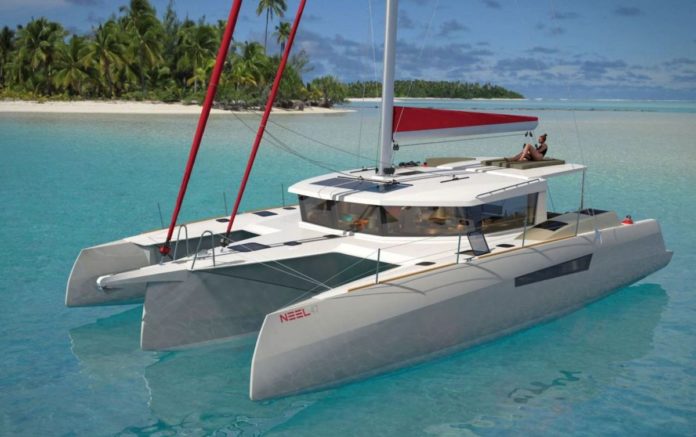
The debate between trimarans and catamarans has been raging for years, with no clear victor in sight. Despite their long-standing popularity as cruising vessels, trimarans have seen a resurgence recently – but what sets them apart from catamarans? The subtle differences lie mainly within the hulls; while monohulls are distinguishable several yards away, distilling one multihull from another requires closer examination of characteristics such as living space size accommodations, seaworthiness ratings , speeds achieved on test runs.
With these variables to consider – along with personal preference – deciding which vessel is right may be difficult indeed!
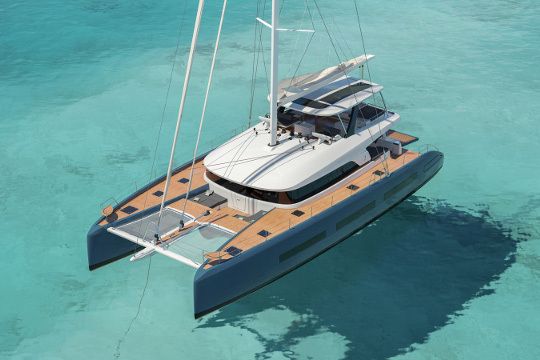
Performance and Stability: two distinct sailing experiences
The stability of a catamaran vs a trimaran.
When sailing on a monohull in strong winds, the boat can potentially capsize due to its single hull and lack of floatation. On the other hand, multihulls such as catamarans are more buoyant because they have two floats that help prevent immersion; however it still may be uncomfortable when navigating heavy seas. For the most optimal sail experience with great stability even through rough waters–pleasure trimarans provide an ideal combination! Three connected hubs act like small wheels over rippling waves while providing excellent comfort aboard no matter what conditions lie ahead!
Read also : Trimaran our ultimate guide
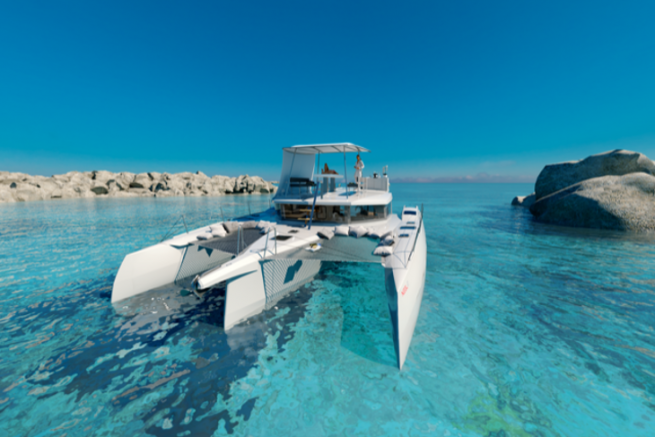
The wind and its influence on the performance of multihulls
In sailing, trimarans outperform catamarans in a headwind situation. Their unique hull design features both daggerboards and central weight focus which allows them to counteract the thrust of wind better so as to stay on course rather than drifting away like their counterparts do. This subtle difference makes significantly more efficient vessels resulting in overall faster speeds when heading into the wind – making trimiras an ideal choice for less experienced sailors seeking reliable performance!

Looking beyond traditional catamaran styles?
Trimarans such as DragonFly boast amazing features thanks to its “Swing Wing” system while Rapido Trimaran offers “an experience like nothing else”—thanks in part due to Morrelli & Melvin architect firm constructing this Vietnam built masterpiece!
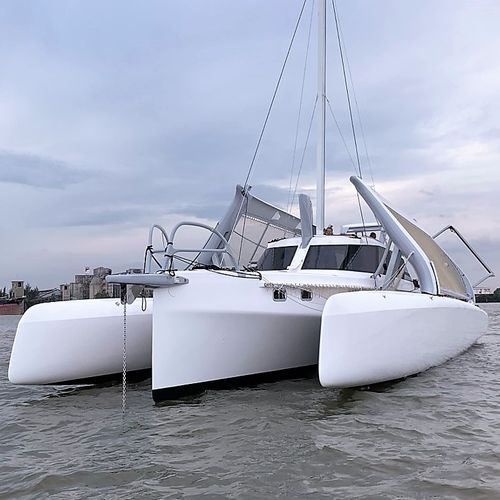
For those seeking a luxurious floating lifestyle, the trimarans from shipyard NEEL are second to none! These vessels feature ‘Cockloon®’ areas which seamlessly connect saloons and cockpits – providing uninterrupted living spaces with breathtaking panoramic views. Alongside this is an expansive flybridge offering extra room along with comfortable cabins nestled within their own designated floats for ultimate relaxation. You could say that these modern marvels of engineering provide all you need in one single package – now it’s just down to choosing your destination!
Looking for the perfect blend of stability, comfort and interior space? Look no further than the NEEL 65 – a unique trimaran that boasts roomy cabins thanks to its enlarged volume. Not only does it offer more living area compared with typical catamarans – but also features an optimally aligned central hull which provides extra safety at anchor! So if you’ve been in two minds between these nautical vessels; perhaps this could sway your decision once and for all…
Trimaran vs catamaran safety: the width of trimarans makes them safer
The trimaran stands out as the most secure of its multihull contemporaries. Its superior design consisting of three hulls, effective anti-drift strategies and centre-mounted weights combine to provide it with a groundbreaking 27° righting moment – allowing for excellent stability in even gusty weather or choppy waters. In comparison, catamarans offer just 12° degrees protection against capsize – meaning that the trustworthiness offered by a trimaran is hard to match! Further punctuating this remarkable level of security are features such as buoyancy tanks which ensure that if capsizing does occur, sinking will not be an issue: making trimarans perfect vessels for sailing’s safety conscious connoisseurs.
Racing trimarans
In the last decade, trimarans have surged in popularity for racing purposes due to their enhanced speed and safety capabilities. Their stability on rough seas allows them to be pushed further than catamarans can go without sacrificing control of the vessel; this is why most multihull races since 2010 have been captured by a trimaran! The Jules Verne Trophy has not seen any different – all winners since its start in 2010 are proud owners of these three-hulled vessels.
How to make the right choice between a monohull, a catamaran, and a trimaran?
No matter what sailing adventure you have in mind and the destination, it is essential to select a vessel that will fulfill your dreams while meeting all of your demands. Make sure to pick wisely!
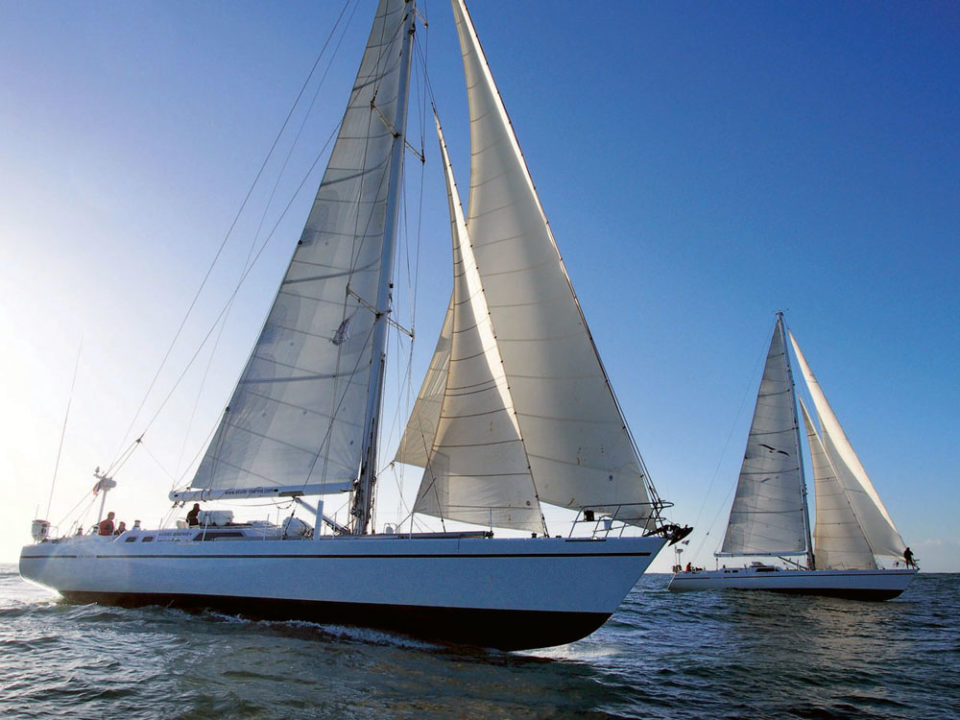
Choose a monohull sailboat if you like sailing!
Nothing quite compares to the feel and freedom of a sailing adventure aboard your own monohull sailboat. With its large, retractable keel, you can explore shallow waters where other boats may not venture while taking in stunning vistas from beyond the coastline. Enjoy an unforgettable experience with every rustle of wind across your sails!
Read also : Monohull vs Catamaran, which one to choose?
Pick a catamaran if you like volume and calm seas
TThe catamaran is perfect for adventurers seeking the tranquility of sailing with family and friends. With a spacious interior, multiple cabins equipped with bathrooms, and an enviable amount of storage capacity above 12m in length – it’s easy to see why these boats have become so popular! However when navigating more turbulent seas keep in mind that their windward grip may make maneuvering tricky; but Catana’s boat selection has you covered thanks to its range featuring daggerboards allowing captains ultimate control over any situation.
Pick a trimaran for a good combination of volume and performances
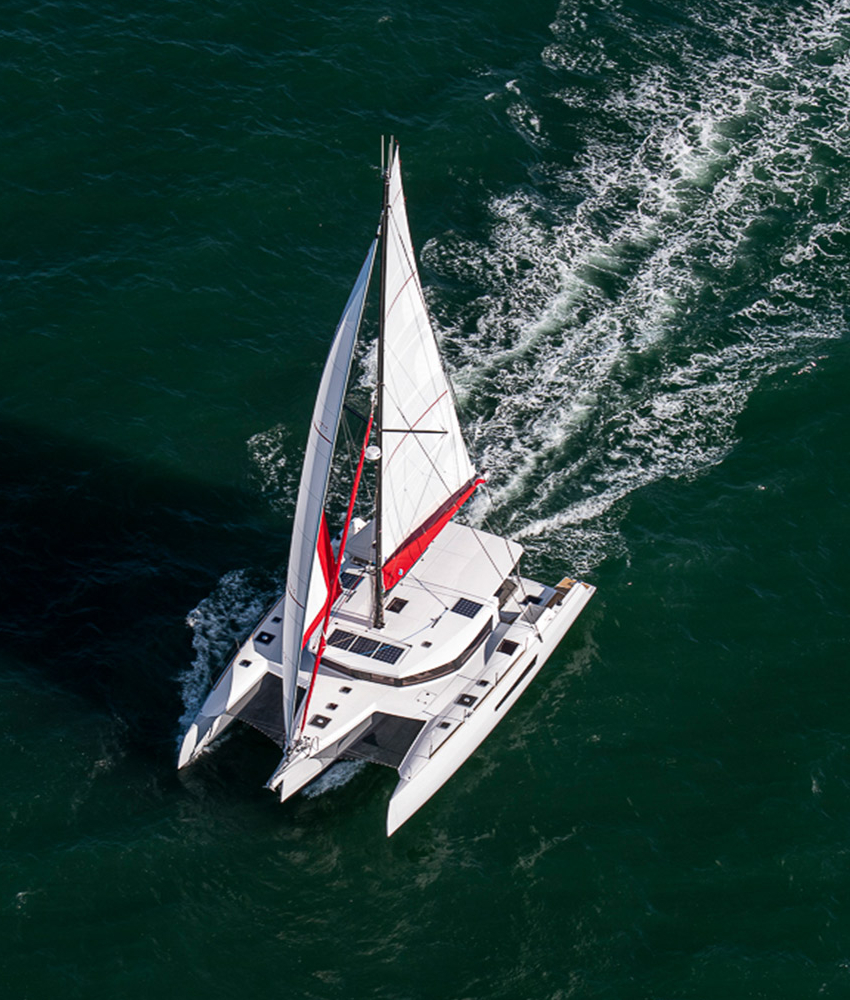
For those looking for a sailing experience like no other, trimarans are the perfect answer. They offer lightning-fast speeds and truly exhilarating performances on open waters – all while providing plenty of roomy living space comparable to catamarans of similar size! Whether you’re attempting an adventurous transatlantic crossing or simply want to enjoy some pleasant cruising around the world, selecting a recreational trimaran could be your best bet.
Enjoy cruising on the NEEL 51 , a unique charter yacht that offers plenty of space without sacrificing performance. This trimaran-inspired vessel is perfect for travelers who want to explore new destinations quickly and safely — with speeds twice as high as other options!

Read more: LEEN 72′: The Future of Hybrid Trimarans is Here .
After looking into the differences between catamarans and trimarans, we can conclude that they each offer distinct sailing experiences. Catamaran sails offer a sense of comfort and stability for extended cruising trips and luxurious living spaces, while trimarans are better on performance, safety – due to the increased width of their hulls – and speed when racing. Ultimately though, it all comes down to personal preference when it comes to choosing between a monohull, a catamaran or a trimaran. If you want to gain speed and enjoy the thrill of racing, then a trimaran may be your best option; however if you prefer comfort and more space while cruising, then a catamaran may be more suited for your needs. Whichever you ultimately decide to purchase, just make sure that it fits your specific circumstances and requirements.
If you’re looking to buy a trimaran, don’t miss this opportunity to learn about the latest models and their features. Get the inside scoop on what to look for in a trimaran and what you can expect to pay. Find out how to choose the right size and style to meet your needs and budget. And if you’re looking to sell your trimaran, don’t miss this chance to connect with a global audience of interested buyers. Showcase your boat’s unique features and benefits and reach a wider audience of potential buyers.
So don’t wait any longer! Take advantage of this opportunity to learn more about buying or selling trimarans. Whether you’re a seasoned sailor or just starting out, this is your chance to dive deeper into this exciting world of boat ownership. Click the link below to get started today!
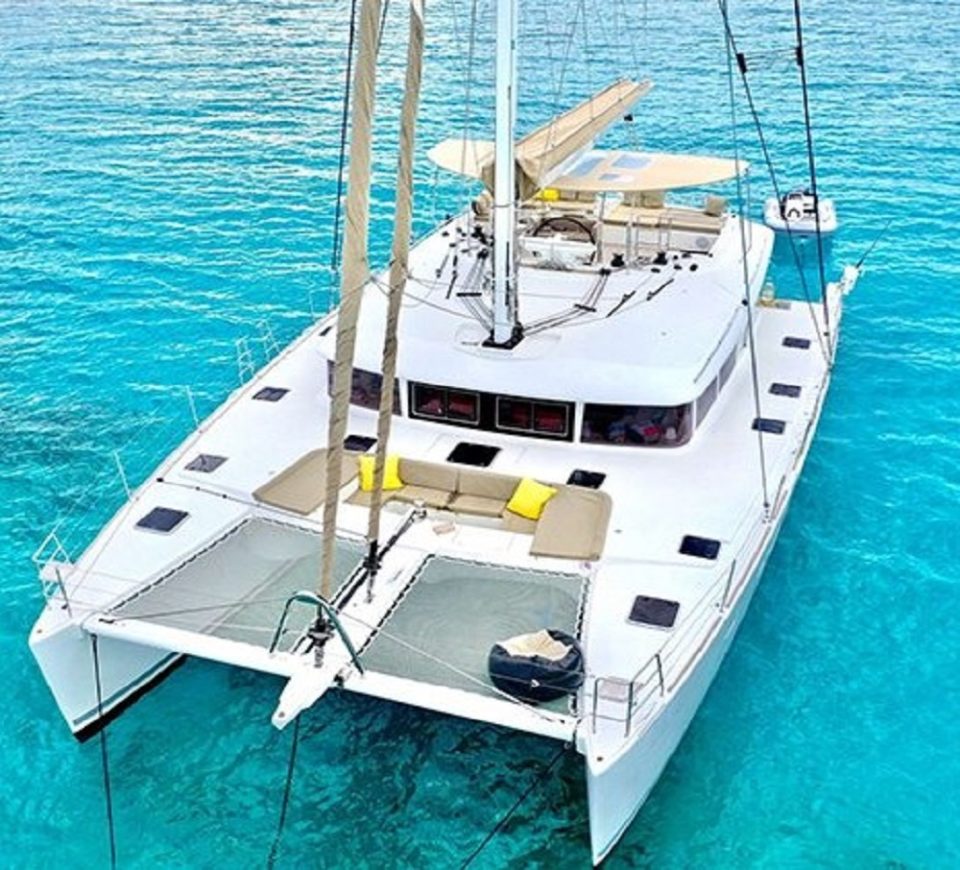
Whether you’re a fan of stability or speed, there’s one boat that can give you both – the trimaran vs catamaran. Catamarans provide plenty of living space and comfort in calm waters but struggle with choppy seas, while modern trimarans deliver excellent performance even on rough days yet still offer good room to relax onboard. But if vintage sailing is more your style opt for an older-style tri since it won’t be equipped with as much creature comforts!
Catamarans and trimarans are two types of watercraft that rapidly cut through the waves, but when it comes to speed one stands out above the rest. Trimarans have gained a reputation for being fast enough to take on any other vessel in a race – making them an excellent choice for anyone looking to shave precious seconds off their time!
When it comes to safety on the sea, two of the most popular vessels are Trimarans and Catamarans. Thanks to their side hulls, trimarans offer a much greater heeling angle compared with catamarans – meaning they’re less likely to capsize or sink in rough waters. However don’t let that put you off taking out a catamaran – while not as secure as its three-hulled cousin – these craft still provide plenty of stability for your seafaring adventure!
If you’re looking for an affordable seafaring vessel, the choice between a catamaran or trimaran can be daunting. With numerous factors that impact cost – from age and length to comfort levels and desirability – it’s often hard to tell which of these two sailing vessels will fit your budget best. But with some research, you’ll find just the right combination of affordability and quality suited perfectly to your needs!
RELATED ARTICLES MORE FROM AUTHOR
How to winterize your boat, sail the mediterranean onboard the custom line navetta 28 “yvonne”, how fast can a yacht go.
- Testimonials
- Privacy Policy

Ridetheducks.com is reader-supported. When you buy through links on our site, we may earn an affiliate commission. Learn more
Trimaran vs Catamaran
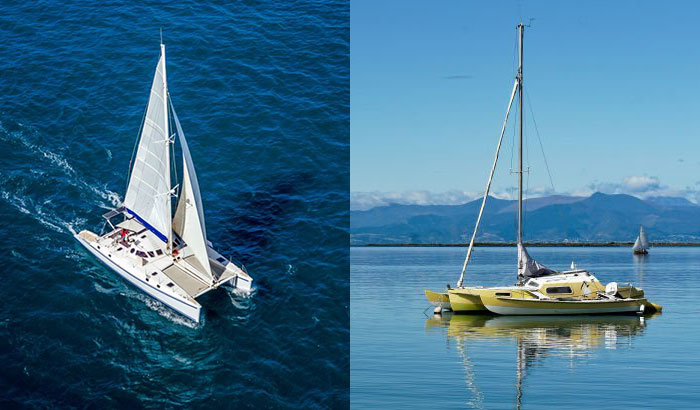
Trimaran and Cataraman are quite similar in design, making it difficult for many people to distinguish between the two, let alone choose one. However, you might be surprised to know that their differences are rather significant.
In this post, we will compare the Trimaran and Catamaran so that you can clearly identify them and make an informed decision when purchasing one.
About Trimaran boats
About catamaran boat, so, which boat do you think is better.
A Trimaran is a type of boat that has three hulls instead of the usual one. The front and back hulls are usually small and used for stability, while the middle hull is larger and used for most of the boat’s functionality.
Some Trimarans can also be configured to be sailed as a Catamaran by removing the front and/or back hulls.
Trimaran boats have several unique features that make them better suited for certain tasks than other types of boats.
- Trimarans are more stable in rough water than other boats, and they are often used for racing or long-distance sailing
- The extra hulls make Trimarans more stable and less likely to capsize in rough water
- They also provide more space inside the boat for passengers or cargo and can be faster and more maneuverable than other boats of similar size
- Trimarans are also good for sailing in shallow waters since they can float on two hulls while the third one is still submerged
Despite their advantages, Trimarans do have some drawbacks.
- They can be more difficult to dock or more than other boats, and they require more crew members to operate effectively
- They are also more expensive to build and maintain than other boats
However, for those who are looking for a fast, stable, and versatile boat, the Trimaran is a great option.
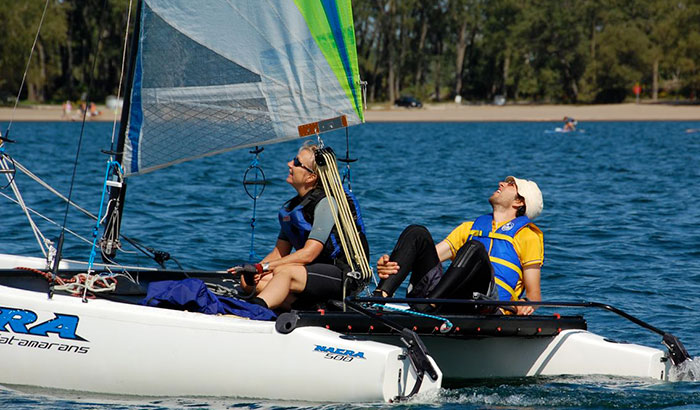
Catamaran boats are a type of boat that has two hulls, making them comfortable vessels to ride.. They can also be more comfortable to ride in than other types of boats.
Here’re some of this boat’s advantages:
- Catamaran boats can be sailed by a smaller screw than other types of boats. This also makes them a popular choice for charters and sailing vacations
- Their prices are more affordable, thus suitable for family use
- Catamarans are usually built from lightweight materials, making them ideal for speed and agility
- The most distinguishing feature of a Catamaran boat is the lack of any external rigging. This means that the sails are mounted on the mast and boom directly to the hulls, rather than to a frame that hangs below the hulls
- Therefore, they have a great range of sail shapes and sizes, which can be adapted to changing wind conditions
- Another advantage of a Catamaran boat is its stability. Because the hulls are wide and shallow, they offer more resistance to overturning than a monohull boat of the same size. This makes Catamarans an ideal choice for sailing on rough seas
However, Catamarans do have a few drawbacks.
They are less agile than monohull boats, making docking in confined places more challenging
- Docking these boats is costly
- In big waves, there is a chance of slapping
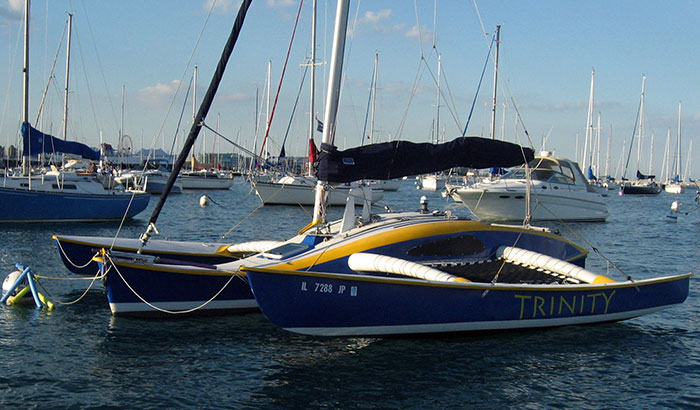
- Speed – The Trimaran is the faster of the two boats. It can reach speeds of up to forty knots, while the Catamaran can only reach about half that speed.
- Stability – The Trimaran is more stable than the Catamaran. This is because it has three hulls instead of two. This makes it less likely to capsize in rough seas.
- Space – The Catamaran is bigger than the Trimaran. This means that it can hold more people and cargo. The Catamaran can also be used for longer trips, while the Trimaran is better suited for shorter trips.
A Trimaran is a multi-hull boat with three hulls, while a Catamaran has two hulls. Both types of boats can be made from a variety of materials, including wood, aluminum, and fiberglass.
More Stable and Ideal for Racing: Trimaran
The main advantage of a Trimaran is its stability in rough waters. Catamarans are also stable boats, but they are not as resistant to strong winds and waves as Trimarans.
Trimarans also typically have more deck space than Catamarans, which makes them ideal for sailing or fishing trips.
A Trimaran is typically faster and more stable than a Catamaran, making it ideal for racing or long-distance travel. A Catamaran, on the other hand, is better at handling rough seas and is more agile.
Ideal for Calm Water: Catamaran
Catamarans are usually faster and less expensive to build than Trimarans, making them a popular choice for recreational boaters. However, due to their size, Catamarans are not as seaworthy as Trimarans and are not recommended for use in rough waters.
Trimarans and Catamarans are both types of sailing vessels . They have many similarities, but there are also some important differences between them. If you’re interested in learning more about these boats or in purchasing one for your use, it’s important to understand the pros and cons of each type.
Overall, the Trimaran is the better boat. It is faster, more stable, and has more space. However, the Catamaran is cheaper and can be used for longer trips. If you are looking for a boat that is good in all areas, the Trimaran is the best choice.
Hopefully, this article has helped you do that. Thanks for reading!
Leave a Comment Cancel Reply
Your email address will not be published. Required fields are marked *
Save my name, email, and website in this browser for the next time I comment.
Call Us (561) 445-5664
Trimaran vs. Catamaran: Which is Better?
Most Popular , Yachting
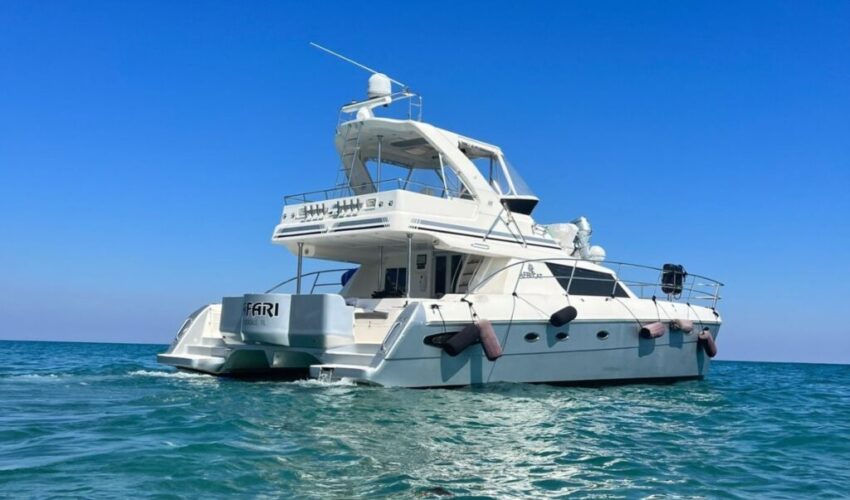
Published September 26, 2023
The majority of boat enthusiasts have experimented with various types of boats. There are so many options that it’s nearly hard to determine which is the “greatest” or “ultimate” boat. It’s entirely up to personal preference, weather conditions, and your objective. Now let’s find out which is better, trimaran vs. catamaran.
Monohulls Are Out of Trend
If you want to improve your sailing skills fast, there is nothing better than sticking to a small monohull and learning everything it offers. Monohulls are conventional boats, the type we are accustomed to in the Western world — a single long hull with a sail protruding from the center. While most boats in Europe are monohulls, the popularity of multihulls has recently increased.
There are various reasons, but the primary one is that modern people do not want to spend their time on the boat doing too much work. Why bother when you can simply lay back, relax, and allow the wind to care for itself?
Regular monohull sailing yachts are notoriously difficult to steer, and if something goes wrong, they fall to the bottom of the water, becoming nothing more than a fish apartment. Multihulls — trimarans and catamarans – are non-sinkable, making them highly safe and easy to operate.
Trimarans, like catamarans, are multi-hulled watercraft. As the name implies, they have a second hull compared to catamarans. The trimaran’s three hulls make it entirely unsinkable.
Thus, even in the worst inclement weather, the risk of capsizing is minimal. And even if the trimaran turns over, it will remain afloat, transforming it into an ideal life raft. This is helpful information while out sailing, and it should be reassuring. And if the worst-case scenario occurs, i.e., capsizes , the trimaran will be easily visible, particularly from a helicopter.
Trimarans are also more enjoyable to sail since they have a large hull in the center and two small hulls on either side. Thus, they combine the advantages of a monohull with the stability of a catamaran, effectively combining the best of both worlds.
You’ve almost certainly seen a catamaran or two in your life. They are uncomplicated vessels, yet they look great. Catamarans have two hulls rather than one, so they are called multihulls.
Numerous advantages accrue as a result of the more excellent stability indicated previously.
The smaller vessels are enjoyable to sail and may hold between 2 and 10, 15, or even 20 people. Then there are the larger catamarans, which can carry up to thirty people. These may be seen across the Mediterranean and a few other locations, where they are used as tiny ferries. (Related: Catamaran vs. Monohulls: Pros and Cons )
Trimaran vs Catamaran: The Differences
When comparing trimarans and catamarans, there are several key differences to consider:
Trimarans tend to offer greater stability compared to catamarans. Trimarans have three hulls, with outriggers acting as stabilizers, providing a stable platform even in rough seas.
Maneuverability
Catamarans are easier to maneuver due to their twin hull design. They can make tight turns and navigate shallow waters with relative ease.
Trimarans are generally faster than catamarans. They have a streamlined design. Their lighter weight allows them to meet higher speeds, especially when sailing upwind.
Interior Space
Catamarans generally offer more interior space and living quarters compared to trimarans. The wider beam of a catamaran allows for larger cabins, saloons, and deck areas.
Sailing Performance
Trimarans are known for their excellent upwind performance. Their narrower hulls and center hull configuration make them more efficient when sailing against the wind.
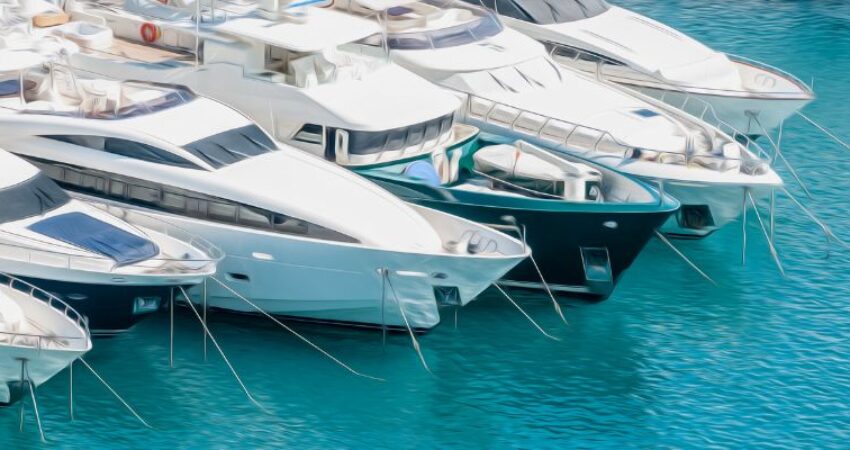
Which is better: Trimaran or Catamaran?
Catamarans are often considered better for sailing than trimarans for several reasons. They offer unparalleled stability with their twin-hull design. This makes them less prone to capsizing than trimarans.
Its stability provides a safe and comfortable sailing experience, particularly in rough seas. Additionally, catamarans excel in maneuverability. Their separate hulls allow them to make tight turns and navigate through shallow waters effortlessly.
Furthermore, catamarans tend to provide more interior space and living quarters. They offer ample room for relaxation and entertaining guests. Their wider beam also performs better in light winds, ensuring smooth sailing even when the wind weakens.
Lastly, catamarans typically have a shallower draft. This grants access to shallow anchorages and marinas, expanding their range of exploration.
The Seafari Catamaran
The Seafari catamaran is a 42′ power catamaran yacht that offers a unique and unforgettable experience on the water. It has an ultra-wide design. And it provides a spacious and comfortable environment that rivals much larger yachts.
It has essential fishing gear, coolers, grills, and supplies. So guests can enjoy a day of fishing and grilling their catch onboard. Snorkeling equipment is also available for those who want to explore the underwater world.
The yacht features below-deck bedrooms and a functioning bathroom. This ensures that guests have all the necessary amenities for a comfortable stay. Safety is a top priority, as the yacht has a liferaft and vests. The experienced and licensed Seafari captains ensure guests have a great and safe time on the water.
Whether cruising the intercoastal, hosting parties or enjoying romantic dinner cruises, the Seafari catamaran offers endless possibilities for fun and adventure.
Trimaran Vs Catamaran: Conclusion
- If you want stability and minimal work, choose a catamaran.
- If you want to improve your sailing skills while remaining safe at all times, opt for the trimaran.
- Opt for the trimaran if you want to be the fastest sailor on the water.
- If you want to host incredible events on board, opt for the catamaran.
Experience Yacht Charters With Seafari In Boca Raton Florida
Looking for a great time on the water in Boca Raton Florida? Seafari Yacht Charters is number choice for yacht rentals in Boca Raton . Book our yachts for parties , exciting day trips to the Bahamas, romantic yacht dinner cruises , and much more. Come experience all South Florida has to offer with us.

Fact Checked By Experts
Our team of internal experts has conducted rigorous fact-checking on this content. Explore the editorial standard for our website to dive deeper into our commitment to excellence.

About The Author
With expertise in multiple fields, Rei Bayucca offers readers captivating and insightful articles. Through her writing, she aims to engage and enlighten readers with thought-provoking content. Experience and dedication ensure that her work is well-crafted and impactful.
Related Posts
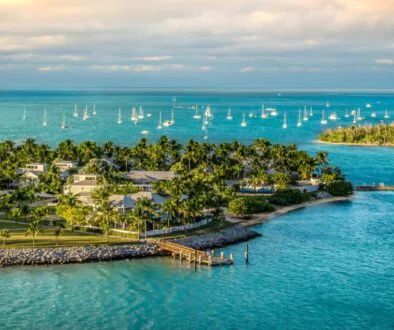
Most Popular , Vacation
Exploring Big Pine Key Beach: A Journey of Discovery
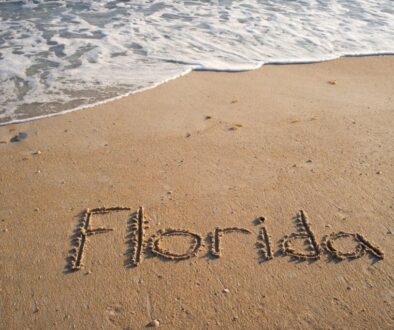
Florida In December: 15 Best Florida Beaches To Visit
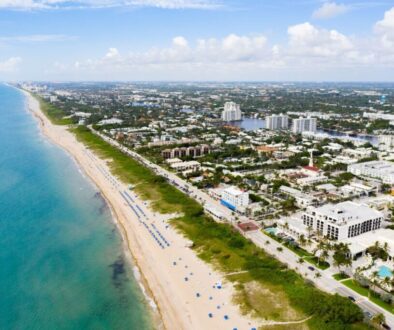
11 Things To Do In Delray Beach
Find us on social media.

© SeafariYachtCharters.com 2024
View Our Privacy Policy
Website design by Correct Digital
- New Sailboats
- Sailboats 21-30ft
- Sailboats 31-35ft
- Sailboats 36-40ft
- Sailboats Over 40ft
- Sailboats Under 21feet
- used_sailboats
- Apps and Computer Programs
- Communications
- Fishfinders
- Handheld Electronics
- Plotters MFDS Rradar
- Wind, Speed & Depth Instruments
- Anchoring Mooring
- Running Rigging
- Sails Canvas
- Standing Rigging
- Diesel Engines
- Off Grid Energy
- Cleaning Waxing
- DIY Projects
- Repair, Tools & Materials
- Spare Parts
- Tools & Gadgets
- Cabin Comfort
- Ventilation
- Footwear Apparel
- Foul Weather Gear
- Mailport & PS Advisor
- Inside Practical Sailor Blog
- Activate My Web Access
- Reset Password
- Customer Service

- Free Newsletter

Maine Cat 41 Used Boat Review

CS 30 Used Boat Review
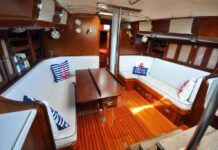
Hinckley 49 Used Boat Review
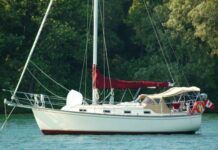
Island Packet 31 Used Boat Review

Best Crimpers and Strippers for Fixing Marine Electrical Connectors

Thinking Through a Solar Power Installation

How Does the Gulf Stream Influence our Weather?

Can You Run a Marine Air-Conditioner on Battery Power?

Master the Sailing Basics: Never Stop Learning the Little Things

How to Mount Your Camera on Deck: Record Your Adventures with…

Un-Stepping the Mast for America’s Great Loop

Headsails and Spinnakers: How to Explain Their Functions to a Beginner

Sinking? Check Your Stuffing Box

The Rain Catcher’s Guide

How to Change Your Engine Mounts
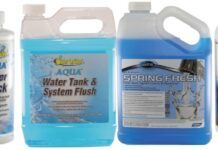
Keeping Water Clean and Fresh

Vinyl Boat Lettering DIY Application and Repair

Those Extras you Don’t Need But Love to Have

Three-Model BBQ Test

Alcohol Stoves— Swan Song or Rebirth?

Womens Foul-Weather Gear

Preparing Yourself for Solo Sailing

How to Select Crew for a Passage or Delivery

Preparing A Boat to Sail Solo

Chafe Protection for Dock Lines

Waxing and Polishing Your Boat

Reducing Engine Room Noise

Tricks and Tips to Forming Do-it-yourself Rigging Terminals

Marine Toilet Maintenance Tips
Comparing trimarans & catamarans.
Trimarans tend to be more performance oriented than catamarans. In part, this is because it’s easier to design a folding trimaran, and as a result Farrier, Corsair, and Dragonfly trimarans had a disproportionate share of the market.
In spite of this and in spite of the fact that many are raced aggressively in windy conditions, capsizes are few, certainly fewer than in equivalent performance catamaran classes. But when they do go over, they do so in different ways.
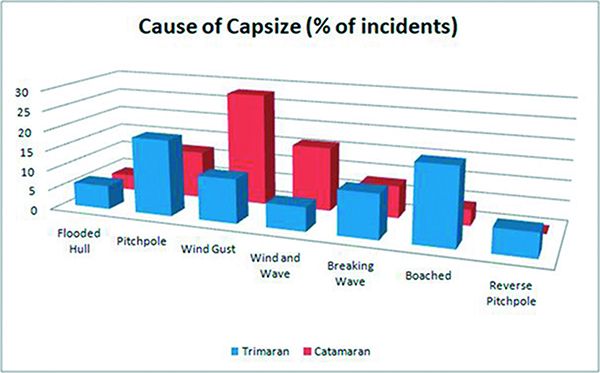
Trimarans have greater beam than catamarans, making them considerably more resistant to capsize by wind alone, whether gusts or sustained wind. They heel sooner and more than catamaran, giving more warning that they are over powered.
Waves are a different matter. The amas are generally much finer, designed for low resistance when sailing deeply immersed to windward. As a result, trimarans are more susceptible to broach and capsize when broad reaching at high speed or when caught on the beam by a large breaking wave.
In the first case, the boat is sailing fast and overtaking waves. You surf down a nice steep one, into the backside of the next one, the ama buries up to the beam and the boat slows down. The apparent wind increases, the following wave lifts the transom, and the boat slews into a broach. If all sail is instantly eased, the boat will generally come back down, even from scary levels of heel, but not always.
In the second case a large wave breaks under the boat, pulling the leeward ama down and rolling the boat. Catamarans, on the other hand, are more likely to slide sideways when hit by a breaking wave, particularly if the keels are shallow (or raised in the case of daggerboards), because the hulls are too big to be forced under. They simply get dragged to leeward, alerting the crew that it is time to start bearing off the wind.
Another place the numbers leave us short is ama design. In the 70s and 80s, most catamarans were designed with considerable flare in the bow, like other boats of the period. This will keep the bow from burying, right? Nope. When a hull is skinny it can always be driven through a wave, and wide flare causes a rapid increase in drag once submerged, causing the boat to slow and possibly pitchpole.
Hobie Cat sailors know this well. More modern designs either eliminate or minimize this flare, making for more predictable behavior in rough conditions. A classic case is the evolution of Ian Farrier’s designs from bows that flare above the waterline to a wave-piercing shape with little flare, no deck flange, increased forward volume, and reduced rocker (see photos page 18). After more than two decades of designing multihulls, Farrier saw clear advantages of the new bow form. The F-22 is a little faster, but more importantly, it is less prone to broach or pitchpole, allowing it to be driven harder.
Beam and Stability
The stability index goes up with beam. Why isn’t more beam always better? Because as beam increases, a pitchpole off the wind becomes more likely, both under sail and under bare poles. (The optimum length-to-beam ratios is 1.7:1 – 2.2:1 for cats and 1.2:1-1.8:1 for trimarans.) Again, hull shape and buoyancy also play critical roles in averting a pitchpole, so beam alone shouldn’t be regarded as a determining factor.
Drogues and Chutes
While monohull sailors circle the globe without ever needing their drogues and sea anchors, multihulls are more likely to use them. In part, this is because strategies such as heaving to and lying a hull don’t work for multihulls. Moderate beam seas cause an uncomfortable snap-roll, and sailing or laying ahull in a multihull is poor seamanship in beam seas.
Fortunately, drogues work better with multihulls. The boats are lighter, reducing loads. They rise over the waves, like a raft. Dangerous surfing, and the risk of pitchpole and broach that comes with it, is eliminated. There’s no deep keel to trip over to the side and the broad beam increases the lever arm, reducing yawing to a bare minimum.
Speed-limiting drogues are often used by delivery skippers simply to ease the motion and take some work off the autopilot. By keeping her head down, a wind-only capsize becomes extremely unlikely, and rolling stops, making for an easy ride. A properly sized drogue will keep her moving at 4-6 knots, but will not allow surfing, and by extension, pitch poling.
For more information on speed limiting drogues, see “ How Much Drag is a Drogue? ” PS , September 2016.
- Privacy Policy
- Do Not Sell My Personal Information
- Online Account Activation
- Privacy Manager

My Cruiser Life Magazine
Battle of the Multihulls – Catamarans Versus Trimarans
For years, catamarans have dominated the multihull segment. Cruisers love to live aboard and sail the world on sailing catamarans. These two-hull boats are known for their speed, space, and overall attractiveness.
With their sporty three hulls, trimarans have long been regarded as fantastic race boats that will speed past catamarans and monohulls. Trimarans have stability and are comfortable at sea. Today’s modern trimarans, such as the Neel brand trimarans, are now featuring increased living space. As a result, modern trimarans are becoming more attractive and more appealing to cruising and liveaboard sailors.
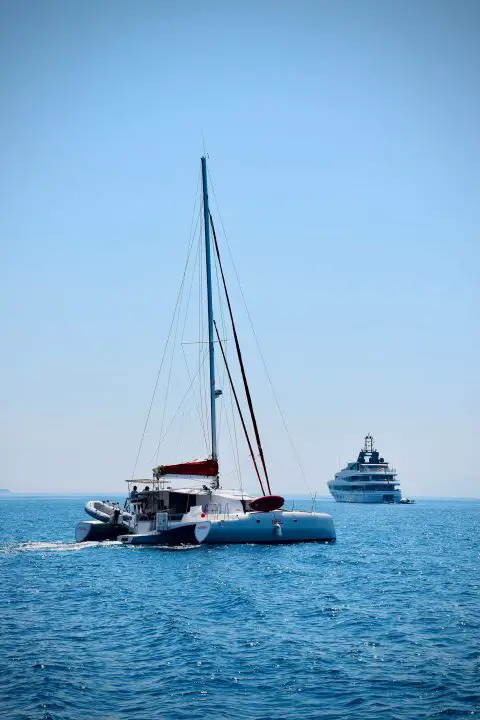
Table of Contents
Living space, catamaran vs trimaran performance, pros and cons of cruising on a monohull boat, pros and cons of cruising catamarans, pros and cons of cruising on a trimaran, multihull safety, sailing comfort, choosing between catamarans and trimarans, faqs – catamarans vs trimarans, differences of trimaran versus catamaran.
The main difference between a monohull, a catamaran, and a trimaran is the hull configuration. A monohull has just one hull. A catamaran has two hulls, and a trimaran has three hulls. The catamaran and trimaran are known as multihulls because they each have more than one hull.
A catamaran has two equally sized hulls, whereas a trimaran has one main hull with two outriggers. The two outriggers are smaller and are mirror images of each other.
The living space on a catamaran is usually luxurious compared to monohulls and trimarans. First, a large cockpit has plenty of room for guests. Second, the bridge deck, which connects the two hulls, is flat, large, and usually hosts a large living area. Third, the living area has large windows which allow excellent visibility, natural light, and ventilation. Finally, the two hulls usually house sleeping areas, bathrooms, and sometimes galleys.
On a trimaran, the living space is usually smaller than on a catamaran. The main hull is usually home to the main living quarters. Like a monohull, this space may be darker with fewer portlights. Often, the living space on a trimaran is even smaller than a comparably sized monohull. On most smaller trimarans, the outrigger hulls are kept empty or used as storage.
New, large, modern trimarans like the Neel 47 offer luxury living similar to a catamaran. On a Neel trimaran, you’ll find a large, spacious cockpit and saloon area . This area provides outdoor seating in the cockpit and an indoor lounge that rivals the comfort of home. The outriggers have space for private bunks and bathroom facilities.
The Benefits of Three Hulls
While you may give up some living space on a trimaran, there are some benefits. Trimarans are even faster than catamarans. Trimarans only have one main hull fully in the water, and the two outriggers produce less drag. As a result, trimarans have stability and are great fun to sail.
A trimaran usually has the forestay attached to the main hull. This provides a strong, stable, safe rigging platform.
A catamaran’s forestay is attached to the forward center of the boat on a crossbeam, the shrouds are attached to each hull, and there often isn’t a backstay. This catamaran rigging configuration allows for additional fatigue as the rig is being pulled in various directions.
The trimaran rigging configuration is similar to a traditional monohull. The standing rigging is connected to the center hull, thus providing increased stability and less fatigue. This configuration allows for a rigid forestay and provides good upwind performance.
When comparing trimaran and catamaran upwind performance, the trimaran usually wins. Because of the trimaran’s larger central platform and two outriggers, the trimaran pitches less when heading upwind, also known as beating. Catamarans also experience more drift while beating into the wind. So overall, trimarans experience less leeway and have better upwind performance.
Monohull boats have been around forever. As such, you can easily buy an older monohull to learn to sail on. Monohulls are inexpensive to purchase, maintain, and operate. It’s more straightforward to find marina docks and haul-out locations. When it comes to maintenance, like bottom cleaning, washing, waxing, and fiberglass work, nothing beats having a single hull!
But monohulls have much less living space than a cruising catamaran. The living space is often dark and can be called “cave-like,” as monohulls tend to have small ports.

Monohulls heel over, which is attractive to some and a deterrent to others. Some sailors feel more seasick on a monohull as it heels. On the other hand, some feel less seasick as the motion is constant, unlike a catamaran’s sometimes jerky motion underway.
Most monohulls have deeper keels than catamarans and trimarans. A shallower draft allows sailors to access shallower water. Boats with shallower keels can sneak into desirable anchorages that deeper draft boats cannot access.
Cruising catamarans have large amounts of living space and are known to be luxurious. They don’t heel over as monohulls do. Catamarans provide a stable platform for enjoying life on the water. And some sailors feel less seasick on a catamaran because of the lack of heeling motion.
Catamarans are popular with charter companies, cruisers, and sailors planning to sail around the world. Catamarans have shallow drafts and can sneak into attractive anchorages that deeper draft monohulls can’t access.
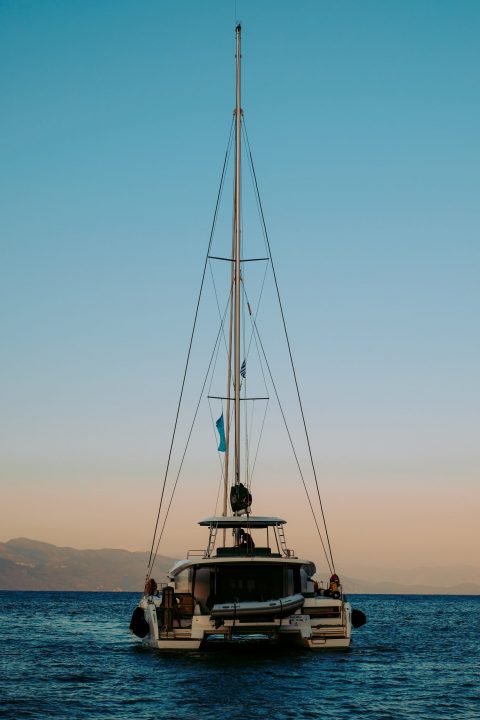
Catamarans are wider than monohulls, and it can be harder and more expensive to find marina dockage and haulouts. They don’t fit into standard-size slips and must dock in extra-wide slips or at t-heads. Many maintenance yards have standard-sized lifts that don’t accommodate the width of a catamaran. So overall, catamarans are more expensive to buy, operate, and maintain than monohull boats.
Trimarans are known for their speed! If you love to cruise past all the other boats and get to port first, a trimaran might be calling your name. Traditional trimarans have limited living space on board. Most trimarans have even less living space than similarly sized monohulls.
Maneuvering around the trimaran and living aboard can provide challenges for sailors. Like catamarans, their width can make getting dock space and haul-outs more challenging and expensive.

Cruising catamarans are usually between 18 and 25 feet wide. Cruising trimarans are usually between 25 and 30 feet wide. The additional width of a trimaran creates a more stable platform but makes finding dockage even more challenging.
Catamarans and trimarans are both considered safe vessels. While a monohull might roll, lose its rig, get holed, and sink to the bottom of the ocean, a multihull vessel will still float. This is because they do not contain lead or iron ballast.
While it is very rare, multihulls can be flipped. For instance, after Category 5 hurricanes, news outlets often share photos of flipped catamarans that were left at marinas.
However, even when a multihull is flipped, it still provides a floating platform. Boaters can wait with their large overturned vessel for help, and rescuers are more likely to spot an overturned vessel than just a small liferaft. In addition, supplies carried on the boat might still be accessible to the crew.
Cruising sailors often consider increased speed to be a safety factor. For instance, on an ocean crossing, faster speeds mean that sailors might be able to arrive before a big storm rather than getting caught in it. In addition, a faster boat might be able to adjust course and avoid the storm if outrunning it is not an option. Because trimarans are faster than both catamarans and monohulls, they can outrun or avoid more storms.
A trimaran features less roll than a catamaran. A trimaran’s weight is centered in its main hull, whereas a catamaran’s weight is distributed across both hulls. As a result, the trimaran rides smoother, whereas a catamaran will be reacting more dramatically and face a bumpier ride.

If you’re thinking about sailing on a multihull, consider the living space, speed, and sea kindliness of each. In the end, it’s a decision made from personal taste and personal preference. Trimarans are fast and fun to sail. Catamarans offer increased deck-level living space. Both are known to be safe and virtually unsinkable. Whichever choice floats your boat, you’ll be thrilled with a fun sail, comfortable ride, access to beautiful secluded anchorages in shallow waters.
Worried about getting caught in severe storm conditions in your boat ? Visit our guide!
Is a trimaran faster than a catamaran?
A trimaran is faster than a catamaran. The centered weight in the main hull provides stability. A rigid forestay provides good upwind performance. The reduction in wetted surface reduces drag. A 40-foot monohull may cruise at 6 knots, a 40 ft catamaran may cruise at 7 knots, and a 40ft trimaran may cruise at 9 knots.
Which is more stable, a catamaran or trimaran?
A trimaran has a larger maximum righting moment. Catamaran sailors must be very mindful of the wind conditions and reef sails early to prevent capsizing. The righting moment on cruising catamarans is 12 degrees, whereas the righting moment on a trimaran is 32 degrees. This means the trimaran is more stable.
In jostling rough seas, the trimaran has a smaller righting moment. As heavy seas jostle the boat, it will respond with a less choppy motion. The catamaran has a larger righting moment and will respond with a choppy ride. In a trimaran, you experience more stability. This, in turn, leads to a better-rested crew and a smoother overall ride.
All of a trimaran’s weight is centered in the main hull. In a catamaran, heavy items such as engines are located in each hull. The weight distribution on a catamaran can lead to a jerkier ride.
Can a trimaran capsize?
All boats can capsize given extreme conditions.
Many charter catamarans flipped when Hurricane Irma’s 215 mph winds hit the British Virgin Islands in 2018. The 100-foot trimaran Banque Populaire IX capsized in a gust of wind in 2018.
Multihulls are usually very stable and only encounter the risk of capsizing in severe conditions. Crews should monitor conditions and reef early to prevent overpowering the boat.
Matt has been boating around Florida for over 25 years in everything from small powerboats to large cruising catamarans. He currently lives aboard a 38-foot Cabo Rico sailboat with his wife Lucy and adventure dog Chelsea. Together, they cruise between winters in The Bahamas and summers in the Chesapeake Bay.


Tri-Hull Boat – What Is It and Its Pros and Cons
Lots of people like to spend time beside the water and many like to spend time in, or on, the water. If you like spending time on the water, you’re going to need a boat.
People have used boats for time immemorial. Since 70% of our planet is water, we’ve had to find ways to cross the ocean and other stretches of water.
Boat design has advanced so much with technological advances, and the use of ever-more complex materials, that modern boaters have a tremendous choice when it comes to buying a boat.
In the 1960s, the tri-hull boat was a very popular choice. It has many redeeming factors and a few issues.
Unfortunately for tri-hull boats, the issues, and the fact that other boat types are just more appealing to modern boat buyers, has seen a decline in demand for tri-hulls.
Let’s find out more about these boats and why they’re not so often seen sailing the waters as they once were.
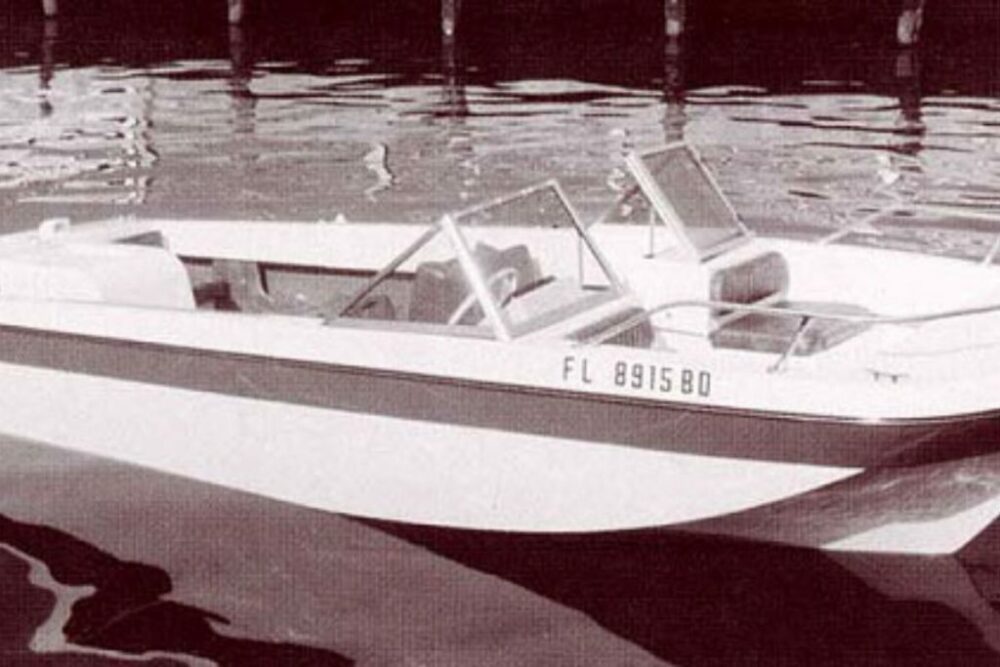
What Makes A Good Boat?
A good boat is a boat that is designed effectively for its purposes. The key factors in boat design are the materials used in its production, its design or aesthetics, the technologies employed, and the features that are built into the boat’s design.
If you want a boat that does what it should, appeals to buyers, and is up-to-date, economical, and environment-friendly then these key factors need to be fully optimized.
Despite all the innovations and changes in materials used in boat design, the structural, holistic, and technological factors have remained consistently integral. Boats need to float. That’s obvious.
But how they float, how they can be powered to move over the water and through waves economically, and how they can accommodate their passengers while doing so, is the crux of the matter.
The use of the boat is going to be put to will have an overriding influence on design, materials, features, and aesthetics. A boat that is going out to war has very different specifications from one that you want to spend a lazy day on at your local lake.
In today’s boat market, aesthetic appeal and technological aspects determine design requirements. However, underlying everything and always and forever the trump card is structured.
The structure of the boat has to be the motivation behind everything because a boat is made to go out on the water and the structure is what ensures it floats and stays afloat.
Structure And Design
Boat design has to ensure safety, no matter what the boat is used for, but the use of the boat will determine design and technology. For example, hydrodynamics and aerodynamics are integral to yacht design.
There’s a lot of mathematics and physics in boat design. Erosion, corrosion, and chemical analysis have to be factored in. Structural and architectural analysis has to be done.
Hull Design
The hull design is about materials, shape, and size.
Hull shape depends on the boat’s purpose and the type of water involved.
The main types of hulls are deep-v hulls, associated with offshore and rough water, and flat-bottom hulls, associated with smooth water.
Deep-v hulls have a wedge shape. They aren’t appropriate for shallow water. They require more power due to low buoyancy. They perform well in rough waters, knifing through waves. Offshore sport boats and bulks have deep-v hulls.
Flat-bottom hulls favor shallow and smooth waters. They have a very low deadrise and maximum stability.
Multihulls, such as tri-hulls, are less deep and suit small boats doing offshore or lake sailing. They are flatter at the stern and deeper at the bow. They usually have smaller engines.
Hull dimensions vary depending on boat length, width, height, and angles.
Computational techniques are employed to locate and scale hull segments.
Aesthetic Appeal
Once structural requirements have been met, aesthetic appeal is going to inform a lot of the design decisions that work alongside structural aspects. The aesthetics will depend on the use that’s going to be expected of the boat.
Boats of any type need to be ergonomic and they need to optimize efficiency in operation. The human and social sides of the boat’s use need to be kept in the frame.
People are investing good money in a boat. They want a boat that is aesthetically appealing. That’s just the way people are. People want things to work but they also want them to look and feel good while they work.
Aesthetic appeal is associated with mental well-being and things like taste, status and so on and so forth.
This aspect of boat design and manufacture has really gone through some major changes. Traditionally, boats were made from wood, steel, and iron.
Iron and steel are strong but they are heavy so are not well suited to small boats. Iron and steel are only really suitable for huge ships and cruise liners.
Materials most commonly used are steel, aluminum, fiber-reinforced plastic (FRP), polyethylene, and carbon fiber . Aluminum is lightweight, facilitating speed without compromising the strength or integrity of the hull.
Aluminum is preferable for smaller boats and even smaller ships. Yet aluminum is expensive and it involves high maintenance costs including aluminium boat repainting with special marine paint for aluminium boats .
There has been a real shift towards fiberglass. Fiberglass is glass-reinforced plastic or fiber-reinforced plastic. Fiberglass, or FRP boats , are reliable, light, extremely effective, capable of high speeds, enjoy a longer life, have low maintenance costs, and are able to resist corrosion.
Polyethylene is used mainly for boats for professional fishermen because it’s buoyant and chemically resistant.
Carbonfiber is strong and light. It’s stable for a long time, both chemically and thermally.
It resists abrasion and corrosion. Carbonization of the fibers during manufacturing strengthens and stiffens the material. Carbon fiber is generally used for racing yachts because it lowers weight and is moldable.
The advances in technology that are now integrated into boat design are amazing. Boats today give their users the sort of smooth ride and comfort boats users of the past could never have dreamed of.
Technological advances in navigation and the advent of location software have vastly increased levels of safety. Advanced personal safety devices give people security on the open water they never used to have.
Thermal imaging has revolutionized boat use. Having automated controls has changed the entire experience of controlling a boat.
The fact that boat manufacturers are seeking to produce boats that are environmentally friendly is absolutely crucial to the survival of our planet and its beings.
Sustainable boat design, the use of renewable energy to fuel boats, and advances in how we reuse and recycle hazardous waste, in a bid to limit the human tendency to treat the ocean and other waters as waste deposit sites, cannot be applauded enough.
We need to keep on finding ways to design boats that do not impact the environment in which they operate.
Buyer’s Mindset
There are various types of boat buyers who are looking to buy a boat for personal, and often emotional, reasons. These psychological needs have to be factored in along with practical needs.
The boat buyer wants a boat that will appeal to him or her, make him or her feel happy when they’re on it, serve the purpose the buyer has in mind and fit the buyer’s budget.

Types Of Boats
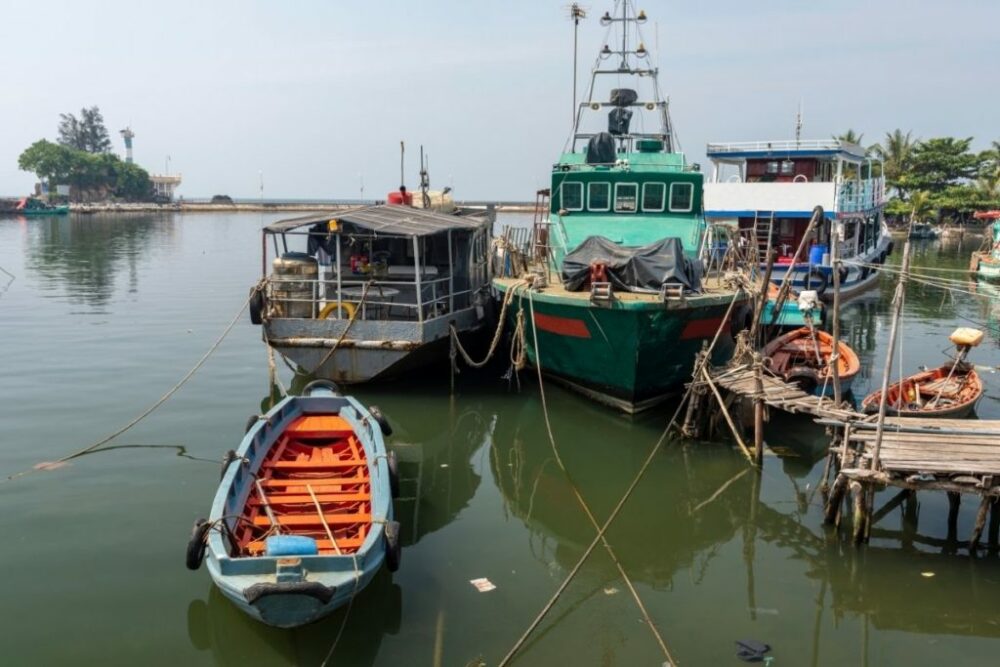
There is a vast array of boat types: flatboats, V-hull boats, bass boats , pontoon boats , and tri-hull boats to name a few.
The Tri-Hull Boat
The original tri-hull design was based on traditional boats used in some southeast Asian countries which have a double-outrigger design.
Tri-hull boats have the standard ‘V’ hull bottom along with two additional hulls, amas or outriggers, one on each side. This design feature means that the bottom of tri-hull boats looks to be shaped like the letter ‘M.’
Having the three hulls, instead of the one hull that most boats have, gives the tri-hull boat a larger surface area at the bow.
Tri-hull boats may be referred to as trimarans, Cathedral boats or Tunnel hull boats because of the large tunnels formed with their more pronounced bottoms when these boats move through the water.
Tri-hull boats are classified as multi-hulls and are categorized in the same category as the catamaran and the tri-hull pontoon boat.
They range in length from 10 – 12 feet. Tri-hull boats are usually smaller boats, similar to dinghy-style boats, but the tri-hull design has also been used on ferries and warships.
Tri-hull boats are particularly popular among recreational boaters , tournament or sports users. The stability of these boats is good so they are great for parties on deck.
Some recreational fishers really like the tri-hull and others don’t. They can make for a good angling platform, liked by those with young children and families.
There have been improvements in the performance, speed and buoyancy of tri-hulls with modern technology and later developments but the boat has never really regained the popularity it enjoyed in the 1960s.
Pros: Tri-Hull Boats
A flatter sailing experience.
The design of tri-hulls means they don’t tip to one side when they turn and they don’t roll in the way a monohull does in certain sea conditions.
The overall result is that when you’re on a tri-hull and the water is not choppy, you can have a very peaceful sailing experience.
A Faster Sail
Load is distributed over the three hulls instead of over just one hull and the boat sits higher in elevation from the water. This means less of the boat is in contact with the water.
Drag is minimised and the boat doesn’t require as much force as a monohull boat to cut through waves. Consequently, you can have a speedy ride in a tri-hull boat.
Flotation materials, such as closed-cell foam, within the three hulls make tri-hull boats significantly harder to sink than mono-hulls. Good to know when you’re out at sea or in the middle of a vast lake!
Enormous Stability
Having such wide, flat hulls gives tri-hull boats impressive stability on the water. The two side hulls are mostly responsible for this enhanced stability, providing increased surface area at the bow.
There’s none of that wobbling about when people step onto the boat and, once on deck, you can move around comfortably without feeling like you’re going to capsize the boat. Shorter boats enjoy more stability.
Buoyancy Extraordinaire
The middle hull, which is long and narrow, does most of the buoyancy work – 90% of it. The design makes good uses of flotation materials and the layout works to the advantage of buoyancy.
Great For Getting To The Plane
The long and narrow middle hull helps get the tri-hull to the plane quicker than for other boats. When the engine is revved, the boat rises up on a plane, or level, on the water and then travels on top of the plane with its bow lifted out of the water.
Spacious Deck
The three-hull design really opens up the deck.
Lightweight But Load-Bearing
Tri-hulls have smaller cross-decks so they don’t require as much in the way of supporting structures as monohulls in order to have structural integrity.
This means the boat weighs less than monohulls but its spacious deck means it can carry more than monohulls.
Tr-hull boat engine design depends on whether the boat is a small sailboat size or a large ferry. Usually, they have a high horsepower outboard motor and can reach good speeds.
The fact there’s less drag because the boat has less contact with the water means the boat can accelerate better and reach fast speeds quicker than many other boats.
This speed is ideal to plane the boat on the surface but not so great when it comes to cutting through waves, due to the design.
Tri-hulls are generally cheaper to buy than other boats of the same size and require less power to operate because less contact with the water means more buoyancy and less drag.
Cons: Tri-Hull Boats
Hull design issues.
Modern materials decrease the weight and increase the speed of tri-hulls and other multihulls. Required buoyancy decreases, allowing smaller section hulls and amas.
However, as the hulls become increasingly narrow and achieve ever higher speeds, the risks of damage to the cross-sectional areas increase when these boats smash into big waves.
The cross-sectional points close to the attachment for the forward aka of the ama can be fractured.
In 2012 the Sodeb’O design opted to use the main hull’s larger cross section as the longer hull. The reduction in length of the amas means their cross-section can better cope with imposed loads.
Even smaller tri-hulls are potentially compromised by the design and construction of composite, moulded akas.
Not Good On Unsettled Water Or Open Water
When on unsettled water, the boat takes something of a pounding from the waves. Running the boat ‘bow high’ can help.
Deck Gets Wet
Tri-hulls are not v-hulled, which means they aren’t good at cutting waves. When the tri-hull encounters a large wave the wave slams against the amas or outer hulls, on both sides of the boat, causing a lot of sprays. When sailing on the upwind side, you will get wet each time the hull hits the water.
Over-Modified
Tri-hull boats have been modified over the years to embrace multifunctionality, but, in the process, they’ve lost the original tri-hull design. Instead of rigid amas, more modern tri-hull designs have made the outer hulls, or amas, foldable to convert the tri-hulls into a V-shaped hull, better able to handle the waves. The modification has helped but the original tri-hull design has been lost.
Limited Use
Many boat buyers want a boat that copes well with varied water types and the tri-hull is not great for open water or any water that’s unsettled.
The large cross-decks and extra hulls require extra materials in production, which can increase the price. Despite this, tri-hulls tend to be cheaper than many other boat types.
However, if you have a tri-hull and want to use it on choppy waters you may have to invest in a larger motor. Modified tri-hulls with foldable amas and a massive center hull cost more.
Tri-hull boats are beautiful and provide a stable, spacious experience for those spending time on tranquil waters. However, issues with the design have arisen largely due to unceasing modifications aimed at resolving issues with choppy water.
Unfortunately, the modifications may help solve some issues but they open up others at the same time.
Tri-hull boats are still manufactured by a number of brands but their popularity has definitely waned. The tri-hull design is found in limited sailboat models nowadays.
Another very pertinent reason for the waning interest in tri-hull boats since the 1980s is increasing interest in v-hull boats and deck boats. There have been great advances from the 1980s that have ensured that v-hull and deck boats are increasingly desirable for all water types and boat users.
An offshoot of this has been a decline in demand for tri-hulls. The rise in popularity of pontoon boats is also influential. There is potential for tri-hulls to come back if a hybrid model , that’s recently been designed, takes off.
This hybrid model uses wave momentum as the source to power the tri-hull.

- Recent Posts
- Sustainable and Luxurious: Discovering Split’s Yachting Paradise – April 26, 2024
- MarineTraffic vs VesselFinder: Which Is Better Vessel Tracking Service? – February 14, 2024
- Port Costs: A Comprehensive Guide to Port Dues and Fees for Cargo Ships – February 12, 2024
About the author
I worked as an officer in the deck department on various types of vessels, including oil and chemical tankers, LPG carriers, and even reefer and TSHD in the early years. Currently employed as Marine Surveyor carrying cargo, draft, bunker, and warranty survey.
Leave a Reply Cancel reply
Your email address will not be published. Required fields are marked *
Save my name, email, and website in this browser for the next time I comment.
Latest posts

The Push to Reduce Cruise Ship Carbon Emissions in 2024
With increasing regulatory requirements, the industry is under immense pressure to innovate and reduce cruise ship carbon emissions.

Marine Satellite Internet: How Ships Keep Connected
Some boaters take leisurely trips to the lake while others venture into the ocean, far removed from the rest of civilization. Thankfully, marine satellite internet helps ships stay connected.

What to Wear on a Boat
Sailing on a ship requires extensive preparation. In addition to understanding its components and how to operate it, people must also know what to wear on a boat.
Tri Hull Boat Models: Specs, Prices, and Competitors Explained
Tri-hull boats, also known as trimarans , have been gaining popularity in the boating world due to their unique design and performance capabilities. These boats come with three hulls, which provide stability, speed, and additional space on the deck compared to traditional monohull boats.
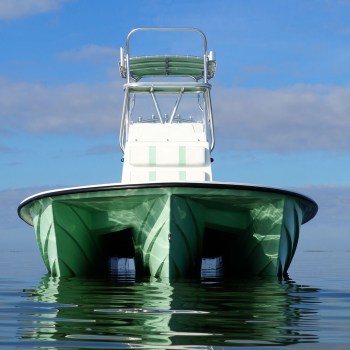
Several manufacturers offer a range of tri-hull boat models designed for different purposes and varying budgets.
As a boating enthusiast, I've noticed an increasing demand for tri-hull boats and have decided to dive deeper into this topic. Throughout my research, I have explored various models, specifications, and price points to understand the key factors that contribute to their performance and how they stack up against their competitors.
From leisurely sailing to high-performance racing, tri-hull boats cater to a wide range of users and preferences.
Key Takeaways
- Tri-hull boats offer stability, speed, and spacious decks due to their three-hull design
- Models and specs vary among manufacturers, catering to different budgets and needs
- Tri-hull boats face competition from other boat types, emphasizing the importance of comparative analysis
Overview of Tri-Hull Boats
History and Evolution
Tri-hull boats emerged in the 1960s as a popular design choice due to their increased stability, more deck space, and smoother ride on the water. They were initially used in smaller recreational boats, but eventually, the design found its way into larger ferries and warships as well 1 .
Basic Design and Structure
As the name suggests, a tri-hull boat features three hulls at its base, providing extra stability compared to other designs like monohulls and catamarans.
The main hull runs down the center of the boat, with two sponsons (smaller hulls) on either side, extending all the way to the bow. These sponsons add buoyancy and width at the bow, increasing the interior volume of the boat 2 .
In essence, a tri-hull boat combines the best features of a deep V-hull with the stability of a tunnel hull design, making it a versatile choice for various boating needs.
Some popular tri-hull boat models include the Farrier F22 Trimaran, which offers speed, compact size, and high-performance in its various series, such as the F-22, F-22S, and F-22R 3 .
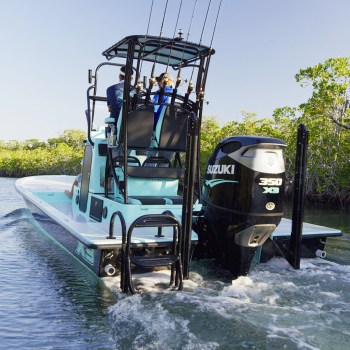
Tri-Hull vs Other Hull Types
When comparing tri-hulls to other hull types, there are a few key differences to consider:
- Stability : Tri-hull boats offer superior stability over monohulls and catamarans due to their three-hull design; this makes them a popular choice for recreation and fishing activities.
- Deck Space : The tri-hull design offers more deck space compared to other hulls, making it easier to accommodate passengers and gear 4 .
- Ride Comfort : Thanks to the added buoyancy at the bow, tri-hulls provide a smoother and more comfortable ride on the water, especially in choppy conditions.
- Speed : While not as fast as some multi-hull designs, tri-hull boats can achieve higher speeds due to their deep V-hull and tunnel hull characteristics.
- Boating Geeks ↩
- Boatsetter ↩
- ExploOcean ↩
Design and Specifications
Hull Design and Materials
The tri-hull boat design features three hulls: a central hull with two outer hulls called sponsons .
Commonly made from fiberglass , these boats offer a unique combination of stability, buoyancy, and good performance.
The use of fiberglass not only adds strength and durability to the hull but also results in a relatively lightweight construction. This allows for better power-to-weight ratio and thus, better overall handling and acceleration capabilities.
Deck and Space Allocation
One of the biggest advantages of tri-hull boats over traditional ones is the extra deck space that the three-hull structure provides.
The wide beam created by the sponsons offers a spacious and stable platform , making these boats an ideal choice for various activities like fishing, cruising, and watersports.
Here are some key features of a tri-hull boat's deck and space allocation:
- Spacious open deck for easy movement
- A wide platform that provides stability in various water conditions
- Ample seating and storage space
- Room for adding fishing, cruising, and watersports accessories
Performance Factors
When it comes to performance, tri-hull boats offer a unique blend of stability, speed, and power.
Their design allows them to maintain a more level position on the water when picking up speed, which reduces drag and optimizes performance.
Here are some main performance factors to consider for tri-hull boats:
- Stability : The three-hull design gives a wide base that aids in keeping the boat stable, even in rough water conditions.
- Speed : Tri-hull boats are generally not as fast as comparable monohull boats; however, they still provide decent speed levels for various activities.
- Weight : The use of fiberglass in hull construction results in a lightweight boat, thereby increasing the overall power-to-weight ratio.
- Sailing : Tri-hull sailboats like trimarans provide a stable sailing experience even in stronger winds due to their inherent design.
- Power : Due to a more level position on the water, tri-hull boats require less power to maintain their speed.
Types of Tri-Hull Boats
Recreational Tri-Hulls
Recreational tri-hull boats are perfect for those who enjoy spending time on the water with family and friends. These boats offer plenty of space for seating, storage, and activities.
Tri-hull pontoon boats are a popular choice for recreational boating due to their stability and spacious decks.
Another option is tri-hull deck boats, which can comfortably accommodate larger groups. These boats are designed for a smooth, stable ride and are great for cruising or water sports.
Fishing Tri-Hulls
For anglers, fishing tri-hull boats are a practical choice. These boats have the extra stability of a tri-hull design, making them ideal for fishing on lakes, rivers, and even coastal waters.
Bass boats, in particular, are popular tri-hull fishing boats, providing a stable platform with ample storage for fishing gear and increased deck space . This design allows fishermen to move around the boat easily while casting and retrieving their lines.
High-Performance Tri-Hulls
For those seeking speed and excitement, high-performance tri-hull boats are the way to go.
One example is the Farrier F22 Trimaran , a versatile, compact sailboat that comes in three series: the F-22, F-22S, and F-22R. These series are categorized as standard, standard premium, and premium models, respectively.
Tri-Hull Boat Models and Specifications
As a fan of tri-hull boats, I appreciate their unique design and stability on the water. Tri-hull boats offer more space and better fuel efficiency compared to similar-sized monohulls.
When it comes to models and specs, there are several notable tri-hull boat options in the market that cater to distinct needs and preferences.
The Farrier F22 Trimaran is a versatile and high-performance boat , available in three series - F-22, F-22S, and F-22R. These are categorized as standard, standard premium, and premium models, respectively. This trimaran is compact and known for its speed, making it an excellent choice for sailing enthusiasts.
One of the popular tri-hull boat manufacturers, Bennington , offers a wide range of pontoon and tritoon boat models. The New 2024 Bennington R Line ranges from 23 to 27 feet in length and 8.5 feet in width.
These boats are highly customizable, with outboard single engine options up to 450 HP, outboard twin engine options up to 600 HP, and an I/O (sterndrive) option up to 430 HP.
Harris Boats is another brand offering stunning tri-hull boat models for 2023. Their Standard package includes two 25" diameter tubes, a full-length keel, reinforced nose cones, rear skin kit, and a 28-gallon fuel tank.
These boats come in varying lengths and are available in different models like Grand Mariner, Solstice, Sunliner, and Cruiser.
A performance-oriented and foldable option is the Corsair Trimaran , which is known for its foldable amas. These boats offer incredible speed and reliability, making them perfect for racing and fast cruising.
Price Analysis
Price Range and Factors
In my research, I found that the price of tri-hull boats can vary significantly based on various factors such as size, model, materials used, and additional features.
For instance, the Farrier F22 Trimaran comes in three series: F-22, F-22S, and F-22R, which the maker categorizes as standard, standard premium, and premium models, respectively.
When it comes to materials, both construction and finishing play a role in determining the price.
Boats made of more advanced materials like fiberglass or carbon fiber tend to be more expensive than those made of aluminum, for example.
Additional features like electronics, sails, and rigging can also impact the final cost.
I also came across the Neel 51 Trimaran , which boasts impressive specifications like a 15.60m (51ft) LOA, 8.9m (29ft 2in) beam, and 1.50m draught. Although the specific price was not mentioned, it's safe to assume that boats like this fall into the higher end of the market.
Cost of Ownership
The overall cost of owning a tri-hull boat goes beyond the initial purchase price. One should also consider the expenses related to maintenance, storage, insurance, and potential repairs due to damage or loss.
- Maintenance : Similar to other boat types, tri-hull boats require regular upkeep, including cleaning, painting, and engine servicing, to ensure their longevity. These costs will depend on factors like boat size, material, and geographic location.
- Storage : Storage options for tri-hull boats include marina slips, dry storage, and mooring, with varying prices based on location and the type of storage chosen.
- Insurance : Boat insurance can help cover potential loss or damage costs. However, the rates will vary depending on the value of the boat, location, and the coverage chosen. To mitigate risk, always remember to adhere to safe boating practices .
- Repairs : Any damage sustained during regular usage or incidents should be factored into the cost of ownership, as repair costs can accumulate over time.
Comparative Assessment
Tri-Hull Boats vs Competitors
When comparing tri-hull boats with other boat types, it is essential to examine the strengths and weaknesses of each.
Tri-hull boats are known for their stability, spaciousness, and shallow draft, making them a popular choice for recreational and fishing activities.
One popular tri-hull boat model is the Farrier F22 Trimaran , which offers speed and versatility.
In contrast, V-hull boats provide better handling and fuel efficiency but may be limited in terms of deck space.
For instance, pontoon boats offer similar stability to tri-hull boats and a spacious deck but may lack the speed performance of V-hull boats or trimarans. However, pontoon boats are generally more comfortable and suitable for leisure activities.
Comparatively, catamarans and trimarans - both under the multi-hull category - share stability and spaciousness advantages with tri-hull boats.
The Neel 51 Trimaran is an excellent example of a three-hulled yacht that competes in the luxury market segment.
Here's a comparison table to help illustrate the key differences:
| Type | Stability | Spaciousness | Speed | Comfort |
|---|---|---|---|---|
| Tri-Hull | High | High | Moderate | Moderate |
| V-Hull | Moderate | Moderate | High | Moderate |
| Pontoon | High | High | Low | High |
| Catamaran | High | High | Moderate | High |
| Trimaran | High | High | High | High |
Market Positioning
In terms of market positioning, tri-hull boats are generally priced more affordably compared to their multi-hull counterparts like the catamaran or trimaran. This positions them as an attractive choice for budget-conscious buyers looking for stability and space.
Outside of recreational boating, tri-hull boats are popular among anglers, as their stability and spaciousness enable them to carry more equipment and provide a steady platform for fishing.
However, in the luxury market, catamarans and trimarans generally dominate, with options like the Leopard 42 catamaran offering more affordable options and the Neel 51 Trimaran targeting the high-end market segment.
Usage and Functionality
Cruising and Watersports
In my opinion, tri-hull boats are an excellent choice for recreational usage. Their unique design offers more space on the deck than other boats, which is a significant advantage for family outings, fishing trips, and watersports.
The added stability provided by the three hulls also ensures a more comfortable ride, especially for those new to boating.
Top models for these activities include the versatile Farrier F22 Trimaran , which comes in three series: the F-22, F-22S, and F-22R, catering to various preferences and budgets.
One notable aspect of the tri-hull boat is how it planes on the water, lifting the bow out and making the ride smoother. This feature provides a stable platform for fishing and watersports, particularly when you need to be at a standstill or maneuvering at lower speeds.
Commercial and Industrial Use
I have observed that tri-hull boats are not just limited to leisure activities but can also serve commercial and industrial purposes. In fact, these boats are often utilized as ferries in regions like Southeast Asia. Their stability and shallow draft make them well-suited for navigating shallow waters and carrying passengers.
Moreover, various navies around the world have tri-hull warships. These boats offer numerous advantages, including increased speed, reduced hull drag, and a more stable platform for weaponry and crew operations. For instance, the Leopard 42 is a popular tri-hull commercial vessel with impressive specifications, including an LOA of 12.67m, a beam of 7.04m, and a draft of 1.4m.
Advantages and Disadvantages
Performance in Various Waters
A significant advantage of tri-hull boats is their stability in various water conditions. The three hulls at the bottom of the boat provide a wider base, offering excellent balance, especially in choppy waters. However, this design may also result in a wet ride when facing large swells or rough waves, as the wide shape tends to cause water to splash up onto the deck.
In calm waters, tri-hull boats perform quite well, offering a smooth and stable experience for recreational boating, fishing, or water sports. This is primarily due to the center hull, which helps to lift the boat up on a plane, keeping it level as it moves across the water's surface. Nevertheless, tri-hull boats might struggle more in rough, turbulent waters, where their broad profile can lead to decreased agility and increased wobbling.
Comfort and Handling
The unique design of tri-hull boats maximizes the deck space available, making them great options for on-deck socializing, parties, or group activities. The wide beam and three hulls also contribute to a comfortable ride with minimal tilting or rocking, allowing passengers to move around with ease.
Handling-wise, tri-hull boats are generally easy to maneuver, especially at low speeds. However, as with any boat, handling will vary depending on the specific model and its features.
Tri-hull boats tend to have a shallower draft than other types of boats, meaning they can navigate shallow waters more easily. This benefit is most apparent when beaching the boat or maneuvering around tight spots near the shoreline.
On the flip side, when traveling at high speeds, these boats can experience some loss of stability and may struggle to maintain a smooth ride. Due to their wide design, tri-hull boats may have a larger turning radius than other types of boats, such as monohulls or catamarans. As a result, they might not be the best choice for those who prioritize agile handling and responsive control in extremely rough waters.
Innovations and Future Trends
As an avid follower of marine engineering and design, I see several advancements shaping the future of tri-hull boats. Trimarans are becoming increasingly popular due to their unique design, offering greater buoyancy and stability compared to mono-hulls. Innovations in folding systems, hull designs, and flotation materials have made these boats more versatile and appealing to boating enthusiasts.
A key innovation in the tri-hull boat industry is the development of efficient and user-friendly folding systems like those found in the Farrier F22 trimaran. These systems enable the boat to be easily trailered and stored, which is highly convenient for boat owners with limited space.
New hull designs for trimarans, such as flat hulls and tunnels, continue to gain traction as they improve the overall performance and stability of the boat. Tri-hull boats with flat-bottomed outer hulls provide added stability for the vessel and enhance its lifting capabilities on the water surface. Additionally, the tunnels created by the tri-hull design help reduce drag, which leads to increased fuel efficiency and speed.
The use of innovative flotation materials is another aspect that will shape the future of tri-hull boats. Lightweight materials with greater buoyancy are continuously being developed to improve the performance and reduce the overall weight of these boats, as seen in the Neel 51 Trimaran .
Frequently Asked Questions
What are the specifications and price ranges for popular tri-hull boat models?
Popular tri-hull boat models, such as the Farrier F22 Trimaran , come in different series like the F-22, F-22S, and F-22R. These models vary in terms of specifications, with some focused on compactness while others boast high performance. The price range for tri-hull boats can vary significantly depending on the model, size, and features, but generally, they can range from around $20,000 to well over $100,000.
How do tri-hull boats compare with other boat designs in terms of performance and stability?
Tri-hull boats are known for their improved stability, buoyancy, and larger deck space compared to monohulls and catamarans . This is due to their unique design, which features three hulls . The increased width at the bow provides a smoother ride in choppy waters. However, when it comes to speed, tri-hull boats may be slightly slower than their counterparts.
What are the leading manufacturers of tri-hull boats and how do their models differ?
There are several leading manufacturers of tri-hull boats, each offering unique models with different features, designs, and performance levels. Some of the top companies include Farrier Marine, Boston Whaler, and Grady-White. While each manufacturer offers a variety of models, they all focus on providing boats that cater to different boating needs, such as fishing, cruising, or water sports.
Can you list some current market competitors to tri-hull boats?
Tri-hull boats face market competition from other boat designs, such as monohulls, catamarans, and pontoon boats. Each of these alternative designs offers different advantages and drawbacks. For example, monohulls provide better handling in rough waters, while catamarans offer increased speed and fuel efficiency. Pontoon boats, on the other hand, are built for stability and comfort but may lack the speed of tri-hull designs.
How has the tri-hull boat market evolved over the past few years?
The tri-hull boat market has undergone various changes over the past few years, driven by advancements in marine technology and shifting consumer preferences. Advances in hydrodynamic design and construction materials have led to improvements in the performance and fuel efficiency of tri-hull boats. Moreover, manufacturers have also been focusing on incorporating features that cater to consumers' increasing demands for comfort and safety.
What should be considered when purchasing a used tri-hull boat?
When purchasing a used tri-hull boat, there are several factors to consider.
Some of the critical aspects include the boat's overall condition, inspection of the hulls for signs of damage or wear, engine performance, and the condition of the electronics and equipment on board.
Additionally, you should verify the boat's maintenance history, ensuring the previous owner has well-maintained and cared for it.
Related Articles

SoFlo Boat Show 2024: Premier Marine Exhibition and Sales Event
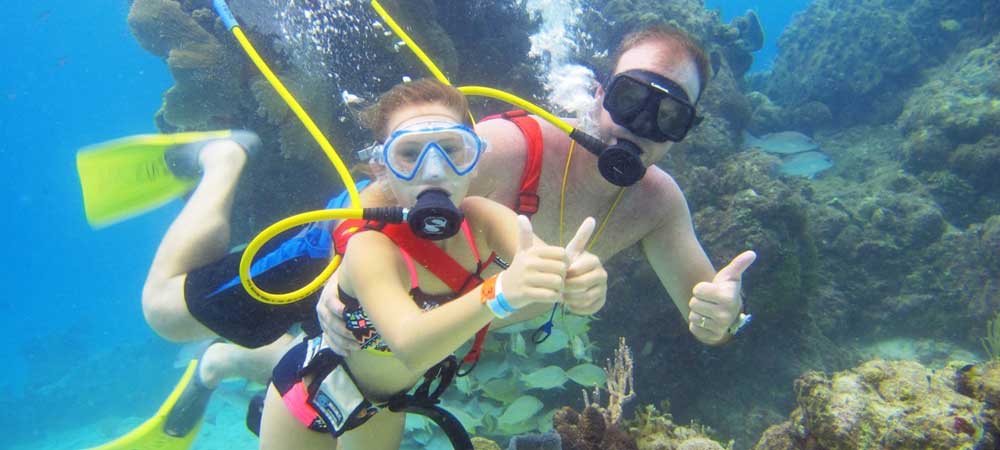
SNUBA Diving for Fun: A Thrilling Underwater Adventure

Transom Boat: Essential Tips for Maintenance and Safety

Bow of a Boat: Essential Guide to Understanding Its Importance
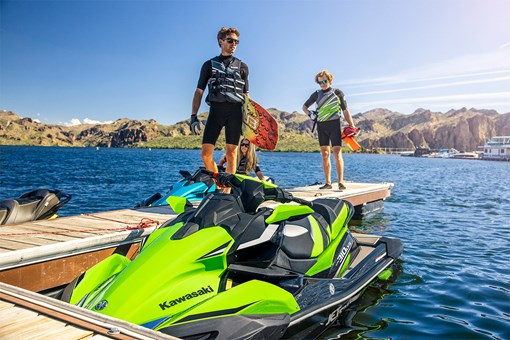
Jet Ski for Sale 2024: Ultimate Buying Guide and Top Models

Parts of a Ship: Essential Components Explained

Boat Donation: A Concise Guide to Making a Difference

Liberty Landing Marina Hudson River: A Comprehensive Guide
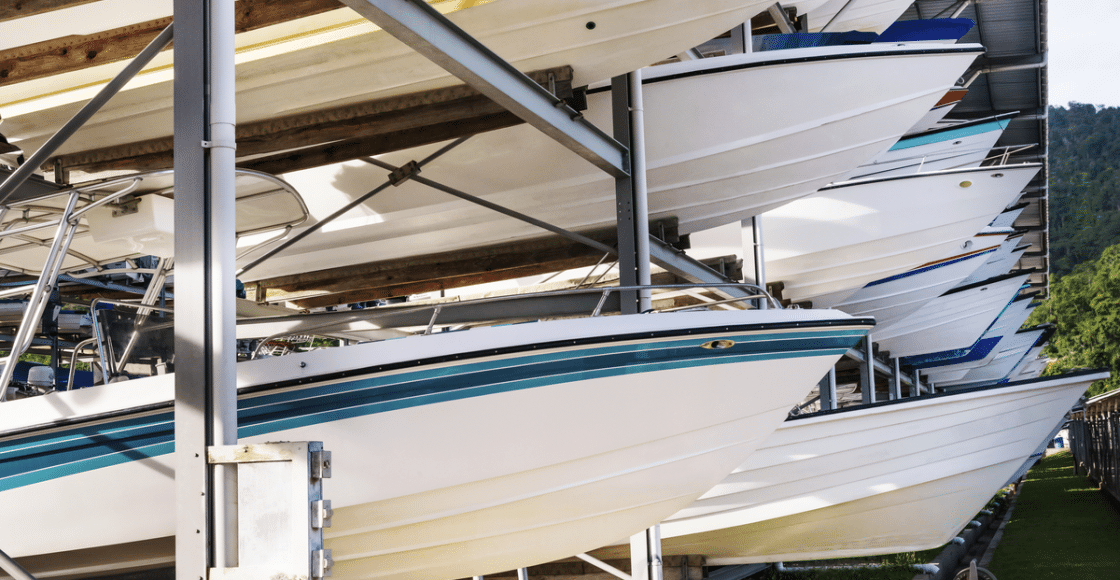
What is a Tri-Hull Boat?
Table of Contents
Last Updated on February 24, 2022 by Boatsetter Team
Boats have three basic hull types; monohull, catamaran, and trimaran. Tri-hull boats are really a hybridization of a trimaran and a monohull boat. The design uses sponsons on either side of the main hull to add buoyancy and width at the bow , which adds interior volume.
In essence, a tri-hull boat is a deep V hull with sponsons that are part of the main hull that go all the way to the bow in older designs. This gives them the appearance of having three separate hulls, but they don’t. Instead, the front of the boat has three individual bow sections, and the stern is one solid hull from port to starboard .
Even though the hulls are not entirely separate, as they are on many sailing trimarans, tri-hull powerboats have some of their qualities. The hull form offers more buoyancy and space; however, the triple bows tend to pound when driving into a chop on powered tri-hulls.
Popular in the 1970s and 1980s, the only tri-hulls in production today are small fishing boats of less than 18 feet and deck boats. The tri-hull design makes them stable platforms to fish or party.
What is a Tri-hull?
Richard Cole, a Naval Architect, first designed the tri-hull boat in 1958 while employed with Thunderbird Boats in Miami. Also known as a cathedral hull. It was revolutionary. The early design had three distinctive hull forms and a bow as wide as the stern. This hull shape offered more buoyancy and stability than monohull boats .
It is a single hull boat with sponsons that protrude from the hull. However, a tri-hull does not have three separate hulls. Instead, it has a deep V center hull with three distinct bow sponsons, which blend into one hull as they go aft, providing added buoyancy.
Today, Tri hulls are used predominately for deck boats. Their wider bows offer added buoyancy and space for extra seating, giving you a large platform that can accommodate many guests. Tri hulls are also stable while anchored and underway, making them comfortable for the non-boating type.
Deck boats still use a tri-hull because they are stable and have a wide bow that offers extra seating space and buoyancy. However, the bow form of many bass boats is a modified tri-hull design. Over the years, boat builders have taken Mr. Coles’s original design and used modern fabrication techniques to perfect what he started.
What are Tri hulls good for?
Tri-hulls make an excellent platform for deck boats because they are wider in the bow. In addition, the sponsons offer stability, so the boats are stable when sitting still and when underway. In addition, many people use their deck boats as social centers, and a tri-hull offers a very stable platform for your family and friends.
The tri-hull has also found its way into the hearts of small boat owners. The stability of the hull form makes a great casting platform for anglers. In addition, a few small tri-hulls on the market are less than 18 feet long and economical to get on the water.
Although most manufacturers have gone to deep V hulls, you can still see the relics of the tri-hull form in the bow of many boats. They have been highly modified since Mr. Cole designed the first tri-hulls. However, boat designers have improved the initial design since it does add buoyancy instead of doing away with it entirely.
Most boats were still being built from wood in the late 1950s, but construction of boats from fiberglass began in earnest in the 1960s. Mr. Cole created his tri-hull boat designs from this new material, and his tri-hull plans came from a drawing board, not a CAD/CAM program. Imagine what he might have done with a computer and carbon fiber.
Who made tri-hull boats?
The original design of tri hulls tended to pound when driven into the waves, offering a rough, wet ride. In 1970, Richard Cole went to work for Wellcraft Boats in Sarasota, Florida, and took his tri-hull design to the next level. When the Wellcraft Airslot went to market, it was an instant success.
With the Airslot concept, Mr. Cole took the outward sponsons of his original design, shortened them, and gave them a more hydrodynamic shape. The result was a line of boats that Wellcraft sold for over two decades.
Skeeter Boats is another company that invested in tri-hull boat design and production in the 1960s. They still produce bass boats, bay boats , and deep V boats built for offshore ventures. If you look at the lines of their current fleet, you will see vestiges of the tri-hull form in the shape of their bows.
In the 1980s, boat manufacturers found that composites allowed their imaginations to run freely, and hull shapes of today attest to those imaginings.
What is a Tritoon boat?
Tritoon is the brand name of a three-hulled pontoon boat. Boats with three distinctive hulls are also called tri hulls or trimarans. The third hull gives the boat the ability to carry more weight and offers more stability. The Tritoon is not the only three-hulled pontoon boat in production. However, it is the original, and has three distinctive hulls (pontoons), is very stable, and can carry quite a load.
Pontoon boats have a reputation as being rather sluggish. However, the Tritoon is the first pontoon boat with the performance of a deck boat. In addition, the third hull and the unique shape of its pontoons allow for the addition of more power than can be used by comparable tri-hull pontoon boats. The added power can get you home quicker when storm clouds gather on the horizon.
What is your boat type?
Whatever your desire to get on the water, a boat is made for you, and finding the right one may take a while. However, if you want to take a group of friends boating with you, a deck boat or Tritoon can carry a crew and enough gear to make a day of it.
Whether you want to buy a new boat and need a way to help pay for maintenance, or you would like to try different types of boats, Boatsetter has you covered . Boat owners list their boats and rent them by the hour and day, bareboat, or with you as the captain at the helm .
If you don’t want the responsibility of boat ownership yet have a desire to get on the water, you can rent a boat from a boat owner near you . Whatever your choice, getting out on the water makes an ordinary day special.
Browse by experience

Explore articles

Lake Travis Water Activities

11 Best Restaurants on the Water in Austin, Texas
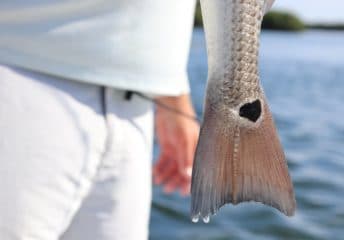
Fishing Report from St. Petersburg – Late October Afternoon // Inshore Action Charters

Fishing Licenses: Explained and Simplified
Your source for the latest news on yachts, boats and more. Read through our articles to find out how to compare boats and find the right fit for you!
Trimaran Sailboats: Pros and Cons
Sep 22, 2021
less than a min

Trimarans are boats in the multihull category. So let us give you a simple overview. A monohull has just one hull, a catamaran is a boat with two hulls, while a trimaran as the name itself suggests, has three hulls ( one central hull and two side ones that are smaller ).
There are many reasons why people prefer trimarans to other boats. These vessels are very easy to maneuver and quite light compared to catamarans or monohulls. They are often considered as an advanced form of the catamaran. The reason being, trimarans are faster than the average catamaran and obviously faster than monohulls.
In addition, trimarans are much more stable than the alternative. The three hulls provide extra balance and lower resistance because even if there are three hulls in a trimaran, they are smaller and narrower. Lower resistance also leads to lower fuel consumption.
Trimarans are very comfortable to sail in as the main hull is stabilized by the two outer hulls .
Also, if you enjoy spending more time outdoors rather than indoors (which is usually the case for people who like sailing), trimarans offer more deck area that you can utilize. Whether for meditation, or social gatherings, this space offers plenty of breathtaking views and fresh air.
Let’s not forget that trimarans have smaller gaps in between the hulls which makes them easier to build and therefore less expensive for the public to buy.
This article however is titled trimarans pros and cons, so it is time to move into some less appealing characteristics of these vessels.
While they offer plenty of deck space, the area below the main deck is limited, therefore you cannot have as many people on board as you would in a monohull or even a catamaran.
In addition, trimarans are not appropriate for every type of activity. If you want to use it for recreational sailing then these boats will provide plenty of enjoyment. If your scope is to find something for the military or fishing, trimarans are not often the best choice.
If you have your mind set on a specific trimaran, search it on TheBoatDB . Our extensive database includes features, pictures, specifications, and more useful information on a variety of boats. What is most interesting however is that you can also compare a couple of models side by side and decide which one is your favorite by getting all your facts straight.
You might like these too

Sailboat or Motorboat – Learn the pros and cons lg ...
Aug 24, 2022

Types of Catamaran Boats: Sailing, Power, and Luxury Catamarans lg ...
Feb 10, 2023

Which is better a wooden boat or fiberglass boat lg ...

What are the main types of sail rigs for sailboats lg ...

Which is the Best Economical Catamaran lg ...
Oct 04, 2021

What is a Chine on a Boat lg ...
Oct 01, 2021

16 Best Trimarans For Sailing Around The World (And a Few For Daysailing)
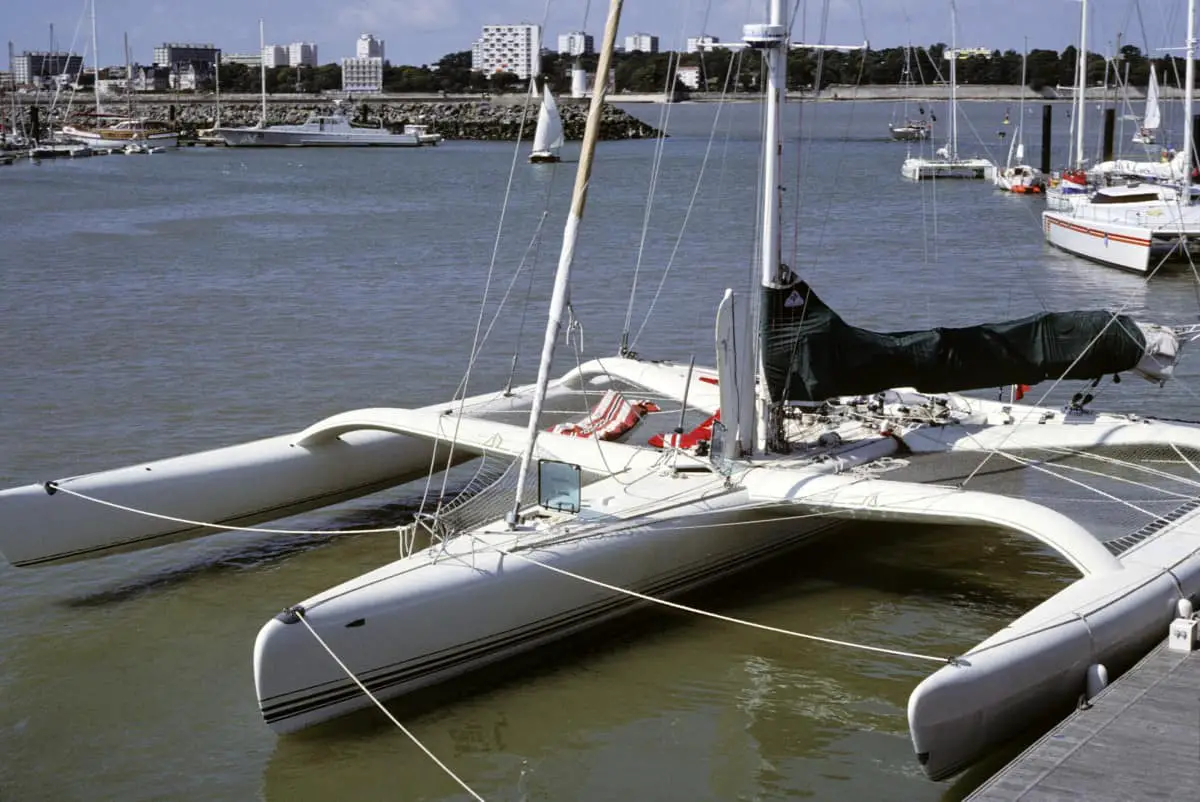
As an Amazon Associate, we earn from qualifying purchases. We may also earn commissions if you purchase products from other retailers after clicking on a link from our site.
Trimarans are growing in popularity worldwide, due to their light construction and high stability these multihulls are even faster than catamarans. Trimarans are still one of the lesser-known boat types so in this article ill be checking out some of the most popular models.
The best trimarans include:
- The Neel 43
- The Neel 47
- Dragonfly 28
- The Pulse 600
- Corsair 37
These tris are built with your safety in mind while also packing powerful speed and a wide array of comfort features to optimize your sailing experience , some are even foldable making them possible to load on a trailer and transport to the sailing destination of your choosing.
In this article, I have created a list of the 16 best trimarans in the market and their unique features. You’ll also learn the best options for different purposes such as circumnavigation, weekend sailing, racing, and more.
Table of Contents
What Is a Trimaran?

A trimaran is a multi hulled sailboat with three individual hulls; the main hull ( vaka ) and a pair of outrigger hulls ( amas ). These smaller outrigger hulls are attached to the main hull using beams.
While trimarans have a rich history dating back nearly four millennia, these types of sailboats have only gained popularity in the late 1900s and early 2000s.
Trimarans are primarily used as personal boats for sailing enthusiasts or racing. These sailboats draw their versatility from their lightweight design, making them faster and easier to handle at sea when compared to single-hulled boats (monohulls). Additionally, the three hulls also contribute to better stability, making it very hard to capsize (although more likely than a cat according to this study)
Trimarans come in various sizes, and some can be as small as 19 feet (5.8 meters) in length, while others go up to 60 feet (18meters). They’re also used for different purposes. Most trimarans are used for racing and recreational purposes, although some units are still used as ferries.
As with all things, to find out which is the best we need to understand what it will be used for. There is a big difference in requirements between a boat used for day sailing compared to offshore around the world sailing.
The list below highlights the best trimarans for different purposes.
Best Trimarans For Cruising, Liveaboard and Sailing Around The World
The Neel 43 is a French trimaran best suited for cruising. Its key features include:
- Easy maneuverability on the open sea by only a small number of crew members
This unit is also built for comfort, ideal for more extended travels. This 43-feet (13-meter) trimaran is also made with recyclable and bio-sourced materials, highlighting the manufacturer’s commitment to environmental consciousness.
This trimaran has a base price of €329,000 excluding VAT. This translates to approximately $370,138.
2.Neel 47 Possibly The Best
Named the best full-size multihull for 2020, the Neel 47 is a strong contender for one of the best trimarans in the market. This 47-foot (14.3-meter) long trimaran features optimized exterior and interior ergonomics for a unique design and look.
Still on design, the Neel 47 is ideal for couples looking to take a weekend off or spend some time as liveaboard. It has a spacious owner’s cabin and two bedrooms. It also features a spacious living room and kitchen and is optimized to ensure comfort for a couple.
The Neel 47 also has two basic guest cabins so your friends or children can tag along on your sailing adventure. Accordingly, this unit is ideal for those looking to explore the sea for the sheer joy of sailing.
The Neel 47 comes at a 571,139 euro ( $643,600 ) price tag, excluding VAT.
3. Rapido 60 The Fast and Comfortable Circumnavigator
The Rapido 60 offers a blend of performance, safety, and luxury, making it one of the best options for bluewater sailing. Measuring 59.3 feet (18 meters) in length, the Rapido 60 is an imposing unit. It’s made from lightweight sandwiches and carbon materials that provide speed and strength, allowing it to stand up to strong ocean currents.
The Rapido 60 also has spacious living spaces and is built for comfort at all points of the sail. Its design also optimizes safety. While it’s an ideal option for circumnavigating, it’s also an excellent choice for racing due to its speed.
This is also the same boat that The Youtube channel La Vagabond just purchased.
The Rapido 60 retails at $1,400,000 .
4. Rapido 40
The Rapido 40 measures 39.4 feet (12 meters) in length and is ideal for cruising around the world. The Rapido 40 features twin “C” foils, which provide added lift, enhancing its speed and performance whether you are sailing downwind or upwind.
Because it has C foils, this trimaran doesn’t have a central daggerboard, increasing interior space. Accordingly, it’s an excellent option for couples looking to cruise and enjoy great performances .
The Rapido 40 is made from high-tech all-carbon materials for a lightweight yet sturdy design. This material is also used for the countertops and furniture, and the cork flooring adds a touch of style.
This trimaran retails for $595,000 , making it a cheaper option than the Rapido 60.
5. Dragonfly 40
The Dragonfly 40 measures 40 feet (12 meters) in length. It features high-comfort standards, making it one of the best trimarans in the market for taking your family for a cruise. Because of its larger size, it has a better capacity, being capable of accommodating six to eight people, so you can bring your family and friends along.
It’s easy to navigate and extremely safe. With a maximum speed of 24 knots (44.5 km/h), this trimaran also provides fast speeds to make your cruise even more exhilarating.
The Dragonfly 40 retails from €509,000 exclusive of VAT, which rounds up to $572,000 .
6. Dragonfly 32
The Dragonfly 32 is a high-performance cruiser. Like the Dragonfly 28, this unit features a contemporary design for racing. This trimaran can accommodate five to seven crew members.
Although slightly longer than the Dragonfly 28 with its 32-foot (9.8-meter) length, the Dragonfly 32 has a max speed of 23+ knots (42.6+ km/h), making it one of the fastest trimarans for racing. This unit also has comfortable accommodation, which makes it an ideal option for a weekend cruise with family and friends.
The Dragonfly 32 has a base price of $350,000 .
7. Corsair 37
Thanks to a variable draft with a retractable rudder, the Corsair 37 is an ideal choice for shallow water exploration. This 37-foot (11.3-meter) long trimaran features advanced foam-cored construction designed for safety, making it virtually unsinkable.
The carbon hulls minimize weight, this makes for a lightweight ocean exploration sailboat with blistering speeds. One of its selling points is that this trimaran has previously been used for Arctic expeditions, possibly marking it as one of the better options for circumnavigation and offshore sailing in the northern waters.
This trimaran has a base price of $189,000 but can go up to $204,125 .
Best Trimarans For Day/Weekend Sailing
8. dragonfly 28.
The Dragonfly 28 is a 28-feet (8.75-meter) long sailboat that can accommodate up to five people. It comes in two versions:
- Touring version: This version is ideal for families.
- Performance version: This is built to provide optimal performance for the sports enthusiast within you.
It clocks a maximum speed of 22+ knots (22+ km/h) and is beam-folded. It’s an excellent option if you want a high-performance, comfortable yet smaller unit for your day or weekend cruise.
The Dragonfly 28 starts at €188,280 inclusive of VAT, which comes to around $211,600.
9. Dragonfly 25
Like other trimarans under the Dragonfly brand, this 25-foot (7.62-meter) trimaran is great for both racing and short term cruising. However, this high-performance boat delivers easy handling, making it perfect for couples looking to take a ride out over the weekend and seasoned sailors looking for an exhilarating racing adventure.
The Touring version features a lightweight build and offers comfort and accommodation to keep you, and the few guests you can fit, comfortable during the ride. This trimaran also has a Sport version, which is optimized for racing.
The Dragonfly 25 retails from EUR 86,800 .
10. Pulse 600
The Pulse 600 trimaran is a compact sailboat. It’s made from lightweight, carbon-reinforced construction and vacuum-formed materials for optimal speed. This trimaran is an ideal option if you are looking for speed.
It also features ample deck space, greater stability, and volume than most trimarans of similar size and build.
This trimaran measures 19.8 feet (6 meters) in length and can be sailed single-handedly by one person with minimal effort. The Pulse 600 has a base price of $38,800 , which places it in the lower price range.
The F-22 is one of the smaller trimarans in the market. Developed in New Zealand, the F-22 is a folding trimaran built for speed. The hulls are made from narrow fiberglass tied together using fiberglass beams and aluminum, minimizing bulk while optimizing speed.
The F-22 is roomy and is not as pricey as other models in the market. This trimaran has two main versions:
12. 2019 Weta Trimaran
The 2019 Weta trimaran is a 14.5-foot (4.4-meter) trimaran featuring a carbon frame, centerboard, rudder foil, and rudder shock. The hull is made from fiberglass and foam. The Weta is built for strength and speed based on these lightweight materials.
The 2019 Weta trimaran is easy to sail and is worth considering whether you want to take a quiet sail, race with your friends, or take kids to a sailing lesson. It has a simple design and is easy to set up independently. Thanks to its collapsible design, this trimaran is easily stored away with minimal space demands.
13. WindRider 17
The 17.4-foot (5.3-meter) WindRider 17 is one of the more versatile trimarans in the market. It packs high performance for a low cost. This trimaran has a light rotating mast to boost performance, and a full-battened mainsail optimizes visibility.
This sailboat is made from rotomolded polyethylene, which is more durable than fiberglass and demands less maintenance.
The WindRider 17 has a comfortable interior and can fit six adults. This is an ideal choice for social sailing for a couple or a family and friends. It’s easy to ride, and a shallow draft allows easy maneuverability.
14. Astus 22.5
If you’re looking for something small but still comfortable, this 22.5-foot trimaran is for you. Built for speed and maneuverability, the Astus 22.5 has optional foils to optimize speed. The modern design, coupled with the spacious interior, can fit up to four beds. Accordingly, this trimaran is suited for family outings.
This trimaran also has a foldable design, collapsing to only 16 feet (4.9 meters) for easy storage.
15. Multi 23 Trimaran
The Multi 23 trimaran has a contemporary design, featuring a vinyl ester and PVC foam core construction. The section below the waterline is made of solid glass for a sturdy base.
The beams are made of lightweight carbon, and the trimaran features a 33-foot (10-meter) aluminum rotating wing mast for optimal harnessing of the wind. While ideal for weekend excursions with family, once rigged with the asymmetrical spinnaker will get your heart pumping.
This trimaran packs high performance at a lower cost than most other options in the market. It’s a good choice if you are looking for a high-performing unit without spending an arm and a leg.
16. Challenger Class Trimaran
The Challenger Trimaran 15 is the best choice for persons with disabilities. It’s designed to provide disabled sailors an opportunity to explore their passion for sailing without worrying about aspects like safety or operation.
A man named Geoff Hold circumnavigated the British Isles in 2007, becoming the first disabled person to achieve this feat. He had quadriplegia.
Living up to its name, the Challenger can withstand harsh weather conditions while blending performance with speed.
Final Thoughts
Admittedly, no trimaran is best for everyone. But whether you are looking to race with your friends, take your loved ones or friends for a cruise over the weekend, or circumnavigate the ocean, you can rest assured that these lightweight trimarans will deliver speed, safety, and comfort to make it worth your while.
These brands are innovatively designed and feature intricate safety mechanisms that make them virtually unsinkable. Give them a shot and begin your ocean adventure.
- Basco Boating: A Comprehensive Guide & Introduction to Trimaran Yachts
- TheBoatAPP: New Trumarans: Which are the Best Ones
- Corsair Marine: Corsair 37
- Dragonfly: Dragonfly 28
- Rapido Trimarans: Rapido 60
- Neel Trimarans: Neel 43
- Yachting World: World’s Collect Yachts: Maxi Trimaran MACIF
- Yachting Monthly: Dragonfly 28 Performance
- Rapido Trimarans: Rapido 40
- Dragonfly: Dragon 32
- Dragonfly: Dragonfly 40
- Yachting World: Dragonfly 40 yacht tour: This cruising trimaran can do 24 knots
- Dragonfly: Dragonfly 25
- NauticExpo: Dragonfly 25
- Yachtworld: Corsair 37 boats for sale
- Cruising World: Neel 47 Trimaran: Best Full-Size Multihull0
- Neel Trimaran: Neel 47
- Multihull Solutions: NEEL 47 Boat Review | Cruising World
- Yacht World: 2022 Neel 47 for sale
- Farrier International: F-22
- Weta Marine: The Boat
- WindRider: WindRider 17 Trimaran Sailboat
- Astus Boats: Astus 22.5
- Boat-specs: Multi 23
- National Maritime Museum Cornwall: Challenger Trimaran #1 – BC26
Owner of CatamaranFreedom.com. A minimalist that has lived in a caravan in Sweden, 35ft Monohull in the Bahamas, and right now in his self-built Van. He just started the next adventure, to circumnavigate the world on a Catamaran!
Leave a Reply Cancel reply
Your email address will not be published. Required fields are marked *
Save my name and email in this browser for the next time I comment.
Recent Posts
Must-Have Boat Gear for Catamaran Sailors!
Sailing is probably the most gear-intensive activity I've ever done; there are so many decisions to be made about what gear to buy now, for tomorrow, and what to definitely never buy. The gear on...
6 Best Trailerable Trimarans For Bluewater and Coastal Sailing
Having a boat costs a lot of money, even when you are not using it, marina fees, etc. And once it is in the water most sailors never go very far from their "home marina" and sailing will be somewhat...


- Boats , Marine Engineering
What is a Catamaran? Catamaran Boats Vs Monohull Vs Trimaran
Olivia benjamin.
- July 2, 2023
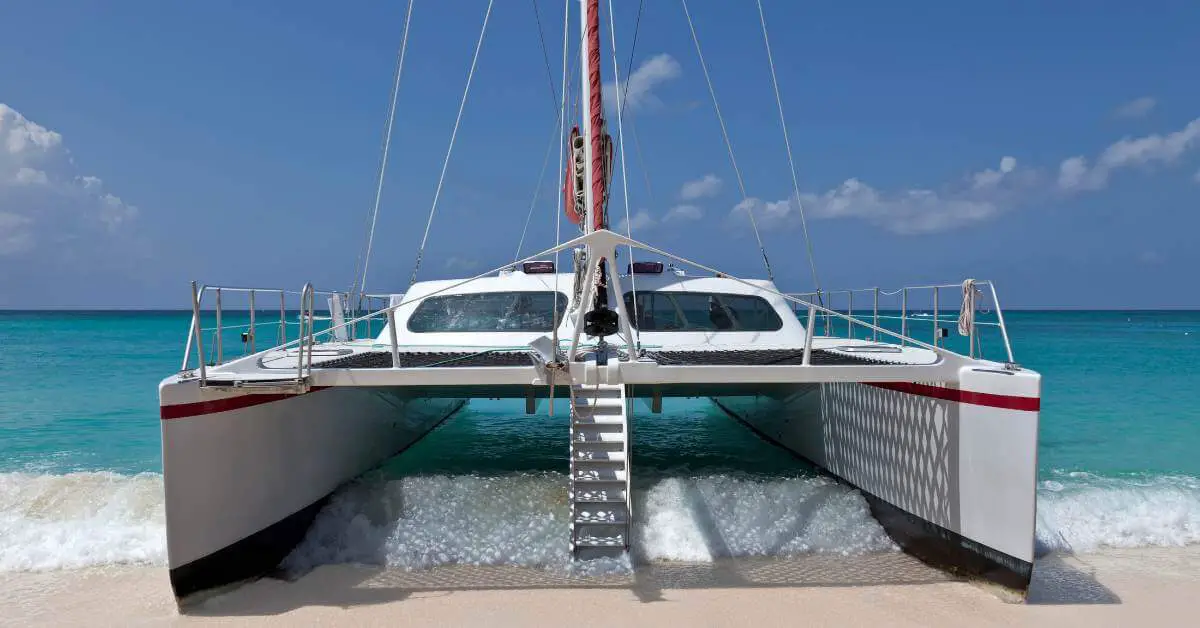
Diving into the world of catamarans, those magnificent vessels revolutionized the boating industry with their stability, speed, and remarkable spaciousness. The secret to their superiority? It’s all in the design, with two sleek hulls, side by side, linked by a bridge deck. That’s the design secret that set them apart from traditional single-hulled vessels.
Catamarans have become the first-choice vessel for sailors, cruising fans, and yacht chartering enthusiasts with their exceptional stability, unparalleled comfort, and outstanding performance, even under challenging weather conditions.
So, get ready to reveal the charm and brilliance of these awesome watercraft.
What is a Catamaran?
A catamaran is a type of yacht or boat characterized by its unique design featuring two parallel hulls connected by a bridge deck. This twin-hulled structure sets catamarans apart from traditional monohull boats and offers a range of advantages that have made them increasingly popular in the boating world.
Stability sits at the top of a catamaran’s list of advantages. The two hulls offer a broad base, significantly enhancing stability even in rough waters.
In addition to stability, catamarans hold a reputation for their spaciousness; a feature monohull boats find hard to match. A catamaran offers an inviting living space above and below the deck thanks to the wide spacing between the dual-hull structure.
Catamarans come in various sizes, from compact versions perfect for a day’s sail to larger variants designed for extended cruising or fishing. This versatility enables each boater to find a catamaran that fits their specific needs and desires.
Catamaran vs. Monohull
In the world of boats, the choice between a catamaran and a monohull is pivotal. Both boats offer unique advantages and face their challenges. Being aware of these differences can guide you in making a well-informed decision. Let’s explore some of these differences:
Sailing Performance
Thanks to their dual-hulled design, catamarans are known for their speed and stability. This configuration enables them to move through the water with minimal resistance, resulting in higher average speeds.
Conversely, Monohulls have one hull to navigate through the water, which may result in a marginally slower sailing experience.
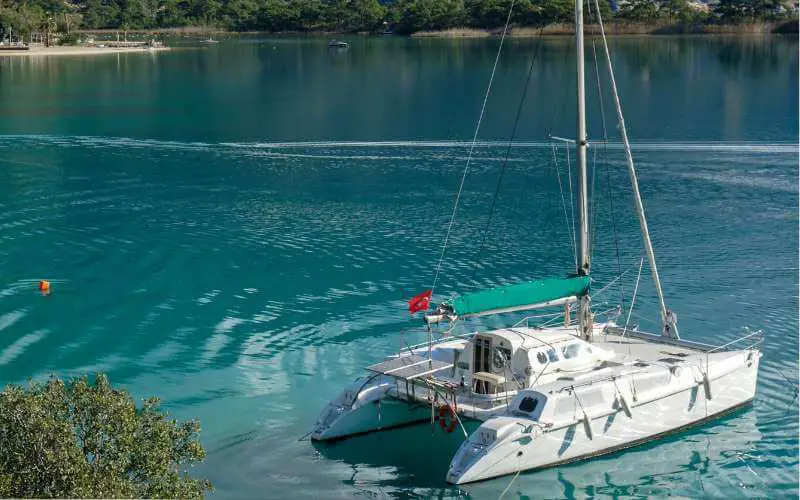
Maneuverability
Catamarans gain the upper hand in shallow waters with their twin hulls. The twin hulls allow it to have a shallower draft, meaning that it can sail in waters that are too shallow for monohulls.
This grants catamaran owners access to exploring remote coves and anchoring in secluded bays, mostly inaccessible to monohulls.
Catamarans are appreciated for their tight turning circles and easing handling in marinas and tight spaces. However, monohulls boast superior maneuverability under sail due to their single-keel design.
Catamarans offer ample space due to their wide beam. The dual hulls facilitate generous living space on the deck and below, providing room for multiple cabins, saloons, and well-equipped kitchens.
In contrast, monohulls offer a traditional sailing experience with their characteristic lean and heel, which some sailing purists prefer.
Catamarans, especially larger ones, are often costlier than monohulls. This is due to the increased materials and labor required to build a catamaran’s twin hulls. Furthermore, the larger sail area and rigging of catamarans can lead to increased maintenance costs.
However, catamarans typically have higher resale values due to their popularity and demand in the market.
Catamaran Vs Trimaran
For sailing enthusiasts ready to explore the open waters, multiple choices for the type of boat with varied options. Among these, catamarans and trimarans are two popular choices that offer distinct features and benefits.
Both catamarans and trimarans are designed with multiple hulls. These boats have unique features catering to different sailing preferences and conditions.
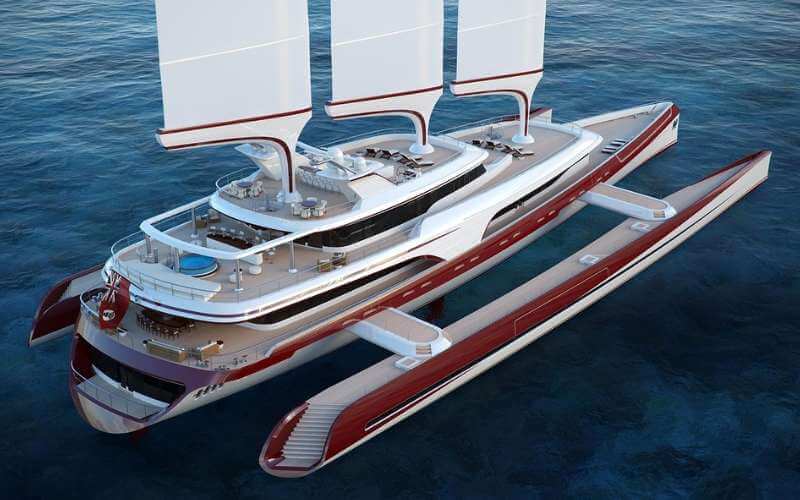
Let’s explore some of differentiating factors between these two unique vessels:
Number of Hulls, Performance & Stability
As its name implies, a catamaran features two parallel hulls, while a trimaran three hulls. The hull count influences the boat’s stability, maneuverability, and overall performance on the water.
Catamarans are widely recognized for their exceptional stability and sailing performance. The twin-hulled design provides a large and stable platform on the water. With a wide beam and low center of gravity of a catamaran make it less likely to tip or heel dramatically during sailing, contributing to an overall sense of safety and stability onboard.
In contrast, trimarans, with their three hulls, offer a unique combination of stability and speed. The central hull, or the “ ama ,” is typically larger, offering buoyancy and stability. Two smaller hulls, known as the outriggers or “ amas ,” further contribute to stability and help counterbalance the forces acting on the boat. This tri-hulled design allows trimarans to sail at high speeds while maintaining stability.
While both catamarans and trimarans offer exceptional stability, catamarans generally have a wider beam. The twin-hulled catamaran design provides ample living space above and below the deck. Nonetheless, the narrower beam of trimarans may restrict the space available for living and other features. However, trimarans are still ideal for those prioritizing performance and exhilaration on the water.
With their dual hulls, catamarans have a distinct edge in shallow waters and constrained spaces. Their design provides a shallower draft, opening up exploration opportunities in shallow anchorages and exploring areas inaccessible to monohulls or even trimarans.
The twin-hulled design enables catamarans to efficiently deliver tight turning circles, making them highly maneuverable in marinas and crowded harbors.
Despite showcasing excellent maneuverability, Trimarans may experience comparatively deeper drafts due to the additional hull, potentially restricting their access to certain shallower areas.
Sailing Experience
Due to their wide beam and sturdy build, catamarans generally experience minimal heeling or leaning while sailing.
In contrast, trimarans might experience slight leaning during sailing, giving sailors a more traditional sailing experience that may be attractive to some sailors.
Assessing the cost between catamarans and trimarans can be complex. The final price tag usually depends on factors such as design intricacies, construction complexity, and the equipped amenities on the boat.
With their multi-hulled design, both catamaran and trimaran often demand more materials and craftsmanship, which can escalate the total cost. These boats typically have larger sails and rigging, increasing maintenance expenses.
Nonetheless, the cost will hinge significantly on the quality and sophistication of the design and equipment involved; hence, categorically declaring a cheaper option may be challenging.
Types of Catamarans (Sailing Catamarans Vs. Power Catamarans)
Catamarans are available in various shapes and sizes, catering to boating requirements and preferences. Sailing and power catamarans are the main types, each having distinct features and advantages.
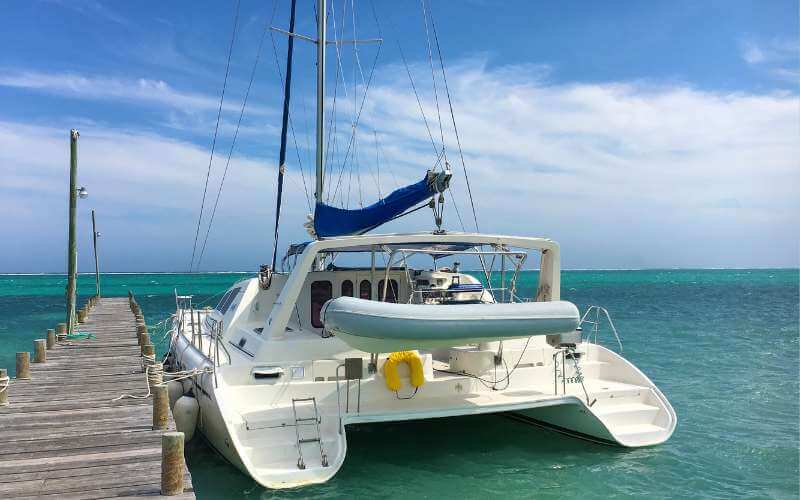
Sailing Catamarans
Sailing Catamarans are designed with the thrill of cruising the sea under wind power. They offer excellent stability, a desirable trait for those seeking a smooth experience even in rough waters. The wide beam minimizes seasickness risks and lends itself well to overnight cruises.
Regarding propulsion systems, Sailing Catamarans use wind force captured by sails for movement. This natural, renewable energy source offers an eco-friendly and tranquil boating experience.
However, modern sailing catamarans also have auxiliary engines that assist during calm winds or intricate maneuvering in harbors.
Power Catamarans
Power catamarans are designed for those who prioritize speed and efficiency. These particular catamarans are equipped with powerful engines that facilitate them to reach high speeds effortlessly.
While the fundamental design of Power Catamarans mirrors that of Sailing Catamarans – the wide beam with dual hulls – the power source differs dramatically. The twin-engine setup (one per hull) allows for higher cruising speeds and improved maneuverability.
Power catamarans are known for their superior fuel efficiency, an essential consideration for day-long expeditions. Despite prioritizing speed, they don’t sacrifice comfort; the power catamaran’s design boasts spacious interiors similar to Sailing Catamarans.
Advantages of Catamaran Boats
Catamaran boats offer numerous benefits, making them an attractive option for experienced sailors and those new to boating.
1. Stability : Catamarans offer increased stability over monohull boats due to their wider base and even weight distribution. This stability is noticeable during sailing, anchoring, and even when exploring shallow waters, providing a more comfortable experience for passengers.
2. Shallow Draft : Catamarans can easily navigate in shallow waters due to their low draft. This feature allows for exploring narrow coastal areas, coves, and bays that may be inaccessible to larger monohull boats.
3. Comfort and Space : The parallel hulls of a catamaran create more living space. This includes a spacious kitchen or galley, comfortable sleeping quarters, generous storage space, and a large multipurpose deck area.
4. Power and Speed : Catamarans are known for their speed and performance. Their twin-hull design reduces wind and water resistance, allowing for increased speed. Their shallow draft also allows faster navigation in shallow waters or narrow paths.
5. Fuel Efficiency : Catamaran’s design contributes to their fuel efficiency. The wider base reduces drag, while its stability allows for constant sailing without extensive adjustments, leading to less fuel consumption.
6. Redundant Equipment: With duplicate systems and backup options for essential systems such as engines, steering, and electrical systems, ensuring uninterrupted functionality and safety even in the event of a failure or mechanical issue.
Drawbacks of Catamarans
While catamarans have unique design advantages making them popular, they also present certain limitations.
1. Responsiveness : Catamarans have less responsiveness due to their wider beam and twin hulls. This means they require more effort and time to turn, particularly in tight spaces or crowded marinas.
2. Pounding in rough seas : Catamarans may experience a pounding sensation when encountering large waves, causing discomfort and potentially increasing damage risk.
3. Wider beam challenges : The wider beam of catamarans can make finding suitable docking spaces difficult in crowded marinas or tight anchorages. Navigating through narrow channels or under bridges can also prove challenging.
4. Fuel efficiency at high speed : In strong headwinds or rough seas, the reduced drag of a catamaran increases speed but requires more fuel to maintain the higher speed.
5. Higher purchase and maintenance price : Catamarans often have higher purchase prices. The double hulls and equipment lead to increased maintenance costs and potential failures. Also, catamarans often require wider slips or specific berthing arrangements, resulting in potentially higher costs.
6. Sailing Performance : Due to their wider beam, Catamarans struggle to sail close to the wind. Their larger wetted surface area can create more drag when sailing upwind, impacting their performance in stronger wind conditions.
It is important for potential catamaran owners and operators to carefully consider these factors and choose a vessel that aligns with their specific needs and intended usage.
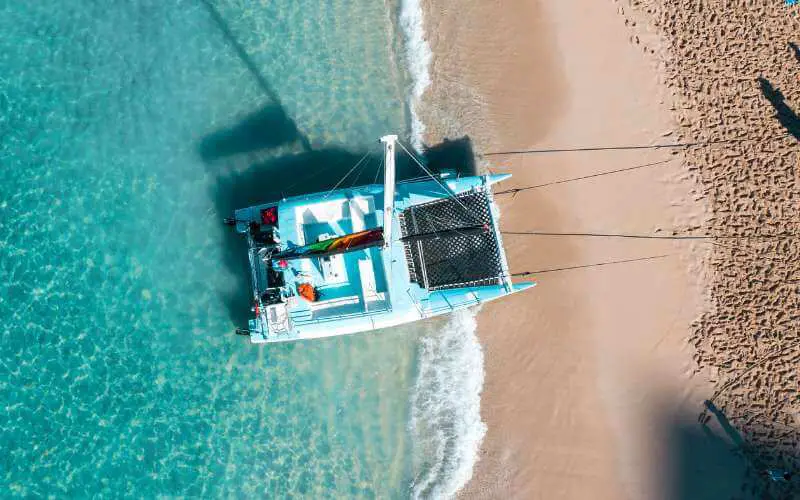
Tips for Sailing a Catamaran
Sailing a catamaran is an exciting experience but demands unique handling skills & knowledge. For a smooth sailing adventure with a catamaran, keep in mind the following tips:
1. Know Your Catamaran’s Design : Familiarize yourself with the boat’s layout, controls, sails adjustment, handling the rigging, and engine operation before setting sail. If necessary, understand how to operate the engines to ensure a safe journey.
2. Monitor Weather Conditions : Always check the weather forecast before departure. Remember, a catamaran’s wide beam makes it susceptible to strong wind gusts, so adjust your sails and course accordingly to maintain control.
3. Practice Maneuvering : Operating a catamaran requires skill and caution, particularly in tight spaces like marinas or crowded harbors. Practice maneuvering skills in open waters before docking or anchoring in challenging areas. Know how to use the engines efficiently for forward, backward, and sideways movements, keeping the boat’s draft in mind to avoid grounding or hitting reefs that could harm the hulls.
4. Know Your Depths : One of the major considerations when sailing catamarans is their draft – the minimum depth of water a boat sinks to when loaded. Being aware of the draft of your catamaran prevents you from running aground or damaging the hulls on underwater obstacles or shallow areas. Regularly use your depth finder, follow up-to-date nautical charts, and remember that conditions can change rapidly.
5. Harness the Wind : To maximize your sailing efficiency, understand and use the best sailing angles for your catamaran since this varies among different catamaran models. Learn how to trim your sails properly to harness wind power effectively and constantly watch for wind direction and speed changes to adjust accordingly.
6. Maintain Your Catamaran : Regular maintenance of your catamaran is crucial to ensure its optimal performance and longevity. Establish a routine check for potential issues, including regular hull inspections, rigging wear and tear, and engine checks if applicable. Cleaning the vessel regularly prevents algae build-up and exposes hidden potential issues that might otherwise be overlooked.
7. Plan Your Berthing: The increased beam size of a catamaran compared to monohull sailing yachts means you’ll need a wider space for berthing. Pre-planning your berthing locations can save you from avoidable berthing complications. Always approach the berth safely and slowly, and be mindful of surrounding boats and hazards.
8. Prioritize Safety : While the stability of catamarans can make them feel exceptionally safe, it’s important never to compromise on safety standards. Ensure everyone on board is familiar with basic safety protocols, knows how to use lifesaving equipment, and knows where it’s stored. Regular checks and upkeep of safety gear, including lifejackets, fire extinguishers, and flare kits, are essential.
Remember, these starting tips merely scratch the surface regarding sailing catamarans. Continuous learning and accruing experience on the water are crucial to becoming a skilled catamaran sailor.
Catamaran Boats FAQs
When it comes to catamarans, several questions are often circulating in the minds of novice and seasoned sailors. Let’s address some of these commonly asked questions:
What is the difference between a catamaran and a monohull boat?
The most significant differences between a catamaran and a monohull boat are their hull design. Catamarans feature two hulls connected by a bridge deck, while monohulls have a single hull.
Key advantages of catamarans include greater stability, spacious living areas, and a shallower draft. Conversely, monohulls are typically known for their traditional sailing experience and ability to slice through waves.
How does the cost of a catamaran compare to a monohull?
Catamarans are generally more expensive than monohull boats of similar size and features due to the increased materials, labor, and engineering necessary to build them.
Furthermore, catamarans might have higher maintenance and operating expenses due to their dual hulls and larger living spaces. However, it’s important to remember that catamarans provide more living space and stability for those who value comfort and spaciousness.
What is the typical draft of a catamaran?
A catamaran’s draft refers to the hull’s depth below the waterline. Catamarans are known for their shallow draft, which allows them to navigate in shallower waters compared to monohull boats.
The specific draft varies depending on a catamaran’s size and design but typically ranges from 2 to 5 feet. This shallow draft is advantageous in coastal areas, island hopping, or exploring shallow-water destinations.
Can catamarans be used for racing?
Yes, catamarans have become increasingly popular in the realm of sailing races. Racing catamarans are designed with lightweight materials and streamlined hulls that enable them to reach remarkable speeds.
They also feature advanced sail systems that boost performance, such as rotating masts and asymmetrical spinnakers. Catamaran racing is both exhilarating for participants and a fascinating spectacle for spectators.
Are catamarans suitable for long-distance cruising?
Catamarans are well-suited for long-distance cruising due to their stability, spacious living areas, and efficient sailing capabilities. With their wider beam and dual hulls, catamarans offer abundant living space above and below the deck.
This makes them comfortable for extended periods on the water, providing ample room for supplies, equipment, and socializing. Furthermore, the impressive stability of catamarans allows for a smoother ride, even in rough seas.
A Guide to Naming Your Boat: Finding the Perfect Name for Your Boat
Naming a boat is an important and personal decision every boat owner must make. Whether you have just purchased a

What is the Steering Wheel on a Ship Called?
The ship steering wheel holds a special place in maritime history, from tales of daring adventures on the high seas
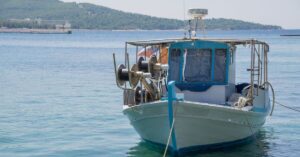
Best Way to Avoid Overloading Your Boat and Keep Your Boat Capacity Under the Weight Limit
Embarking on a boating adventure brings a sense of excitement and freedom. However, ensuring the safety and stability of your
Workshop Insider Newsletter
Be a workshop insider get our latest collection of news and announcements delivered to your inbox..., latest articles.
- June 25, 2024
- June 24, 2024
Navigating the Darkness: Understanding Boat Navigation Lights and the Different Types
Boat collisions: how to avoid collisions with another boat.
- September 12, 2023
The Ultimate Guide to Pipeliner Welding Hoods: Features, Benefits, Buying Guide, and Best Practices
- Welding Helmets Buying Guides
- September 11, 2023

- Privacy Policy
- Terms of Use
- Affiliate Disclosure

The global authority in superyachting
- NEWSLETTERS
- Yachts Home
- The Superyacht Directory
- Yacht Reports
- Brokerage News
- The largest yachts in the world
- The Register
- Yacht Advice
- Yacht Design
- 12m to 24m yachts
- Monaco Yacht Show
- Builder Directory
- Designer Directory
- Interior Design Directory
- Naval Architect Directory
- Yachts for sale home
- Motor yachts
- Sailing yachts
- Explorer yachts
- Classic yachts
- Sale Broker Directory
- Charter Home
- Yachts for Charter
- Charter Destinations
- Charter Broker Directory
- Destinations Home
- Mediterranean
- South Pacific
- Rest of the World
- Boat Life Home
- Owners' Experiences
- Interiors Suppliers
- Owners' Club
- Captains' Club
- BOAT Showcase
- Boat Presents
- Events Home
- World Superyacht Awards
- Superyacht Design Festival
- Design and Innovation Awards
- Young Designer of the Year Award
- Artistry and Craft Awards
- Explorer Yachts Summit
- Ocean Talks
- The Ocean Awards
- BOAT Connect
- Between the bays
- Golf Invitational
- Boat Pro Home
- Superyacht Insight
- Global Order Book
- Premium Content
- Product Features
- Testimonials
- Pricing Plan
- Tenders & Equipment
12 of the coolest multihull superyachts
The market for multi-hull superyachts has skyrocketed in recent years as owners begin to favour the high volumes and superlative stability on offer. Once the novelty of a small group of owners, a recent slew of multi-hull concepts and the success of shipyards such as Sunreef has confirmed that two and three-hulled superyachts are well and truly on the up. We remember some of the most ground-breaking multi-hull launches...
White Rabbit
One of the coolest launches of 2018, the 84 metre White Rabbit is the largest trimaran in the world. She was built in fibreglass by Australian Yard Echo Yachts with exterior design by Sam Sorgiovanni and naval architecture by One2Three. White Rabbit was delivered to an experienced owner who owns a number of other multihull superyachts, including a 51 metre shadow catamaran, also built by Echo Yachts, which will be used as a support vessel; for the 84 metre trimaran.
More about this yacht
Inspired by Game of Thrones, the 66 metre shadow catamaran Hodor is a support vessel used to carry all the toys and tenders for her mothership. The vessel is fully custom and was designed by Incat Crowther. Hodor boasts five tenders, including a 17 metre chase boat and a 388 Skater powerboat with a top speed of 165 knots. Other toys include nine Jet Skis, two Yamaha ATCs, four Yamaha TW200 trail motorcycles and a three-person submarine.
A true icon, Adastra was launched in 2012 by Australian yard McConaghy Yachts . With a length of 42.5 metres and a sleek Kevlar and GRP exterior, this space-age design is every bit as out-of-this-world as its name suggests. Made for exploring, an impressive 10,000 nautical mile range means she can cross the Atlantic twice before needing to refuel. A shallow draft of 1.2 metres allows her to access hard to reach anchorages and shallow bays too.
In 2011, Hemisphere was launched as world’s largest sailing catamaran with an LOA of 44.2 metres - and she remains so to this day. Built for American owners who had previously chartered a catamaran in the Caribbean, this British yacht was a bespoke project by Pendennis . Fully kitted out for diving, Hemisphere ’s port hull contains a dive centre capable of refilling both air and Nitrox tanks.
Yachts for charter
Royal falcon one.
The 41.4 metre Royal Falcon One is a quirky catamaran launched in 2019. She was designed by Singapore-based Royal Falcon Fleet in collaboration with F.A Porsche Design Studio and built in Sweden by Kockums. Accommodation is for up to 10 guests in five spacious cabins, including a full beam master suite with its own private deck space. Crew are housed in the two hulls.
Launched in 2015, Spirit is a 35 metre New Zealand Yachts powercat featuring Ken Freivokh interiors and naval architecture by Bakewell-White Design . A perfect example of how catamarans can help to maximise the living space available, Spirit has the interior volume you might expect from a 45 metre monohull. Her unconventional looks will make her stand out from the crowd in her new home of Australia, but Spirit is just one of many striking multihull superyachts to have hit the water in recent years.
Pilar Rossi
Formula One racing legend Nelson Piquet’s yacht Pilar Rossi was built in Turkey as a modest 33 metre Alucraft motor yacht. But his uncle, a Brazilian naval architect, helped Piquet convert her into a 64 metre sailing trimaran by adding outriggers and two masts. The reborn trimaran can accommodate up to 18 guests.
Galaxy of Happiness
Unveiled to the world in May 2016, Galaxy of Happiness is one of two 53 metre trimarans to be launched by Latvian yard Latitude Yachts . This multihull superyacht is built from a GRP and carbon fibre composite and is capable of a top speed of 30 knots. The interior, designed by Latitude Yachts and Jean-Jacques Coste , features an owner’s cabin and two guest cabins.
Launched in 2004, this Chinese catamaran from Pride Mega Yachts may look like a vision of the future, but the inspiration for Asean Lady is actually ancient. The twin hulled 88.15 metre yacht is based on the proa design that has been used for more than 2,000 years to build fishing boats in the Pacific region. Her stability was put to the test in December 2004 when she survived the Indian Ocean tsunami while moored off Phuket.
Flexibility is the key word that informed the design of the 33.7 metre Quaranta . Launched at Turkish yard Logos Marine in 2013, this catamaran superyacht features the kind of interior volume more commonly associated with a 40 metre yacht. All six guest suites are located on the main deck and the absence of structural bulkheads means that they can easily be reconfigured. This innovative system helped Quaranta to win the catamaran award at the 2014 World Superyacht Awards .
Sponsored listings
Visit our Popular Forums
- Monohull Sailboats
- Multihull Sailboats
- Powered Boats
- General Sailing
- Antares Yachts
- Fountaine Pajot
- Lagoon Catamarans
Cruising Business
- Boat Classifieds
- General Classifieds
- Crew Positions
- Commercial Posts
- Vendor Spotlight
Life Aboard a Boat
- Provisioning: Food & Drink
- Families, Kids, & Pets Afloat
- Recreation, Entertainment, & Fun
- Boat Ownership & Making a Living
- Liveaboard's Forum
Seamanship, Navigation & Boat Handling
- Seamanship & Boat Handling
- Training, Licensing, & Certification
- Health, Safety, & Related Gear
- Rules of the Road, Regulations, & Red Tape
Engineering & Systems
- Const. / Maint. / Refit
- Product / Service Reviews
- Electronics: Comms / AV
- Electrical: Batts / Gen / Solar
- Lithium Power Systems
- Engines & Propulsion
- Propellers & Drive Systems
- Plumbing / Fixtures
- Deck Hdw: Rigging / Sails
- Aux. Equipment & Dinghy
- Anchoring & Mooring
Photo Categories
- Member Galleries
- Life Onboard
- Sailing in the Wind
- Power Boats
- Cruising Destinations
- Maint. & Boat Building
- Marine Life
- Scuba Diving & Divers
- General Photos
Recent Photos

Listing Categories
- African Cats
- view more »
- Crew Wanted
- Crew Available
- Enhance Your Account
- Meet the Mods
- Meet the Advisors
- Signup for The Daily Cruiser Email


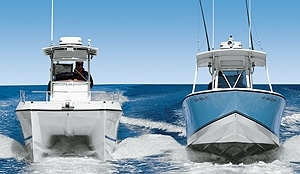





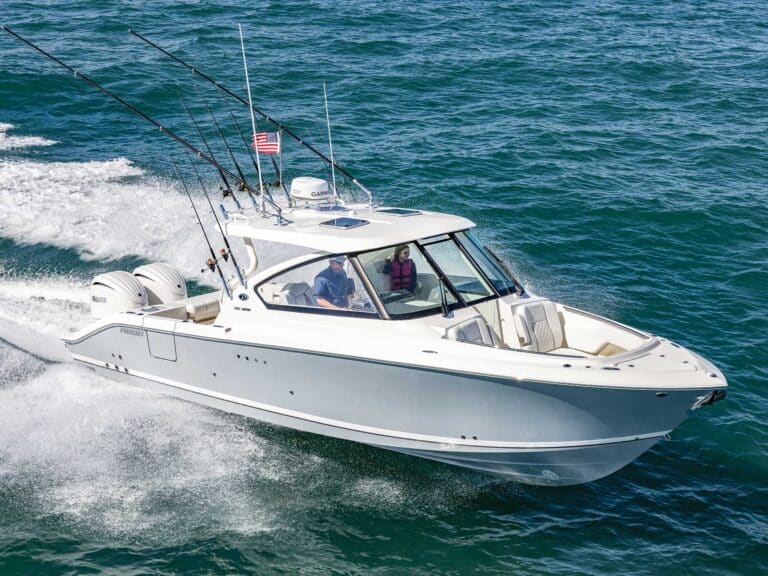

IMAGES
VIDEO
COMMENTS
Catamarans vs. Trimaran: The Verdict. In summary, here's what the differences between a cat and tri mean for anyone trying to choose between the two: A catamaran is a better choice if you're looking to accommodate many people on board for something like a party because it's more spacious and comfortable than a trimaran.
When comparing trimaran vs. catamaran efficiency, the differences are minimal. Multi-hulled boats are more fuel-efficient than comparable mono-hulled boats due to their hull forms and their lighter weights. Multi-hulled boats also tend to have smaller displacement and shallower drafts than other boat styles.
As you rev the engine, the boat goes up on a plane or level on the water. If the boat is traveling on top of the plane of the water, its bow is lifted out of the water. 6. They Have More Space. Tri-hull boats have more space on the deck than other boats. That is the natural result of having three hulls at the bottom.
A large modern catamaran has an outstanding resilience and roll inertia. The mix of these factors makes invasion or capsizing extremely unlikely. When a 20-foot wave hits a catarmaran's beam, the boat will just surf sideways. Trimaran vs. Catamaran: Racing ©ThMartinez/Sea&Co Catamarans are very fast downwind
Speed: Trimarans are known for being faster than cats and single-hull boats. They can easily reach high speeds and are great for racing or long-distance cruising. Stability: Trimarans are more stable than catamarans due to their three hulls. Space: Trimarans are wide, but the interior is less spacious than catamarans.
August 30, 2022. As boatbuilders make faster and more luxurious multi-hulls for cruising and racing, it is time to settle the debate: Catamarans vs. Trimarans. Catamarans and trimarans have distinct characteristics regarding comfort, sailing performance, safety, and personal preference. The dual- or tri-hull designs both confer significant ...
A catamaran is a yacht with two hulls while a trimaran has three hulls. First of all, it is important to note that both trimarans and catamarans are more popular than monohulls lately as they are easier to control. In addition, monohulls can capsize more easily in difficult weather conditions, and sometimes, they even have space limitations.
Catamaran sails offer a sense of comfort and stability for extended cruising trips and luxurious living spaces, while trimarans are better on performance, safety - due to the increased width of their hulls - and speed when racing. Ultimately though, it all comes down to personal preference when it comes to choosing between a monohull, a ...
A Trimaran is a multi-hull boat with three hulls, while a Catamaran has two hulls. Both types of boats can be made from a variety of materials, including wood, aluminum, and fiberglass. More Stable and Ideal for Racing: Trimaran. The main advantage of a Trimaran is its stability in rough waters. Catamarans are also stable boats, but they are ...
Catamarans are often considered better for sailing than trimarans for several reasons. They offer unparalleled stability with their twin-hull design. This makes them less prone to capsizing than trimarans. Its stability provides a safe and comfortable sailing experience, particularly in rough seas.
Trimarans tend to be more performance oriented than catamarans. In part, this is because it's easier to design a folding trimaran, and as a result Farrier, Corsair, and Dragonfly trimarans had a disproportionate share of the market. ... 2.2:1 for cats and 1.2:1-1.8:1 for trimarans.) Again, hull shape and buoyancy also play critical roles in ...
Differences of Trimaran Versus Catamaran. The main difference between a monohull, a catamaran, and a trimaran is the hull configuration. A monohull has just one hull. A catamaran has two hulls, and a trimaran has three hulls. The catamaran and trimaran are known as multihulls because they each have more than one hull.
Tri-hull boats are classified as multi-hulls and are categorized in the same category as the catamaran and the tri-hull pontoon boat. They range in length from 10 - 12 feet. ... Instead of rigid amas, more modern tri-hull designs have made the outer hulls, or amas, foldable to convert the tri-hulls into a V-shaped hull, better able to handle ...
TRi Hull Boat Tri-Hull vs Other Hull Types. When comparing tri-hulls to other hull types, there are a few key differences to consider: Stability: Tri-hull boats offer superior stability over monohulls and catamarans due to their three-hull design; this makes them a popular choice for recreation and fishing activities.
Last Updated on February 24, 2022 by Boatsetter Team. Boats have three basic hull types; monohull, catamaran, and trimaran. Tri-hull boats are really a hybridization of a trimaran and a monohull boat. The design uses sponsons on either side of the main hull to add buoyancy and width at the bow, which adds interior volume.. In essence, a tri-hull boat is a deep V hull with sponsons that are ...
A monohull has just one hull, a catamaran is a boat with two hulls, while a trimaran as the name itself suggests, has three hulls (one central hull and two side ones that are smaller). There are many reasons why people prefer trimarans to other boats. These vessels are very easy to maneuver and quite light compared to catamarans or monohulls.
In my ASE senior research project I discuss and analysis the differences between flat bottoms, monohulls, catamarans, and tri-hulls.
Attach one line to each of the forward cleats and bring the loose ends to the center. Pick up the mooring with a boathook. String one line through the eye and bring it back to the same cleat. Repeat on the other side, keeping the lines the same length so the cat is centered.
This trimaran retails for $595,000, making it a cheaper option than the Rapido 60. 5. Dragonfly 40. The Dragonfly 40 measures 40 feet (12 meters) in length. It features high-comfort standards, making it one of the best trimarans in the market for taking your family for a cruise.
Number of Hulls, Performance & Stability. As its name implies, a catamaran features two parallel hulls, while a trimaran three hulls. The hull count influences the boat's stability, maneuverability, and overall performance on the water. Catamarans are widely recognized for their exceptional stability and sailing performance.
Inspired by Game of Thrones, the 66 metre shadow catamaran Hodor is a support vessel used to carry all the toys and tenders for her mothership. The vessel is fully custom and was designed by Incat Crowther. Hodor boasts five tenders, including a 17 metre chase boat and a 388 Skater powerboat with a top speed of 165 knots. Other toys include nine Jet Skis, two Yamaha ATCs, four Yamaha TW200 ...
As a recent multihull convert, I will put my 2 cents in. From what I have gathered, tri's sail faster, but a bit less flat than a cat. Interior space is far more on a cat with a bridge deck. (Our Piver tri has a 6'6" beam on a 37' main hull) Later model cats are far more available than late model tris. Deck space on a tri, and on later ones, tramp size is far larger than a cat with a large ...
We can also see that the cat consistently decelerated slower when it hit the wave than the V-hull did. It had an average deceleration of 0.287 seconds, compared to the V-hull's 0.081 seconds-which is 3.5 times faster. The cat not only landed with less force, it decelerated slower as well.